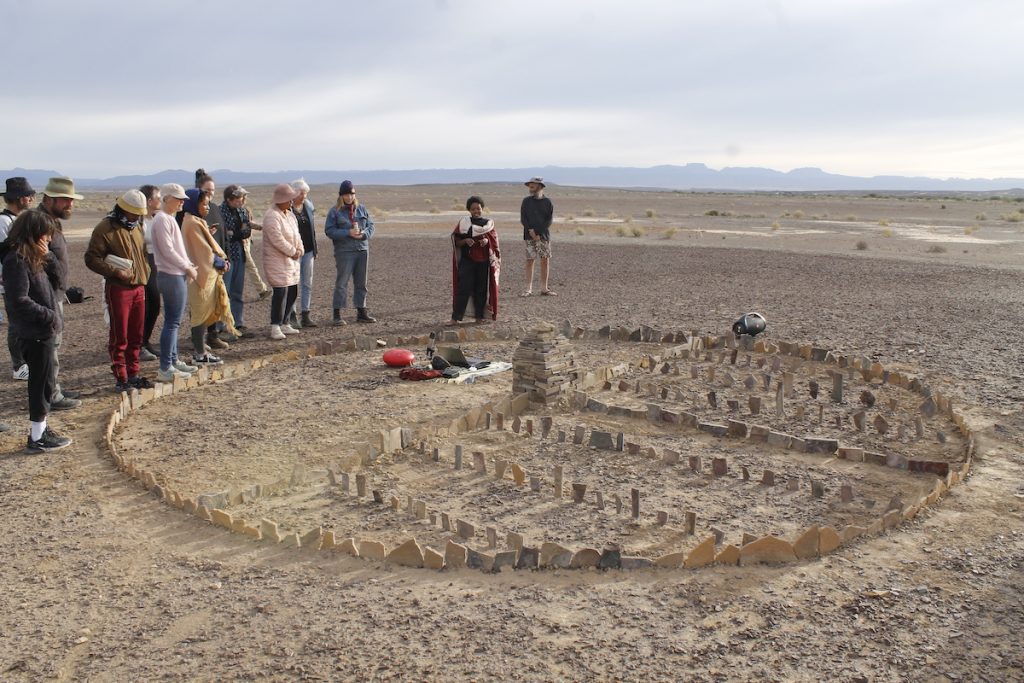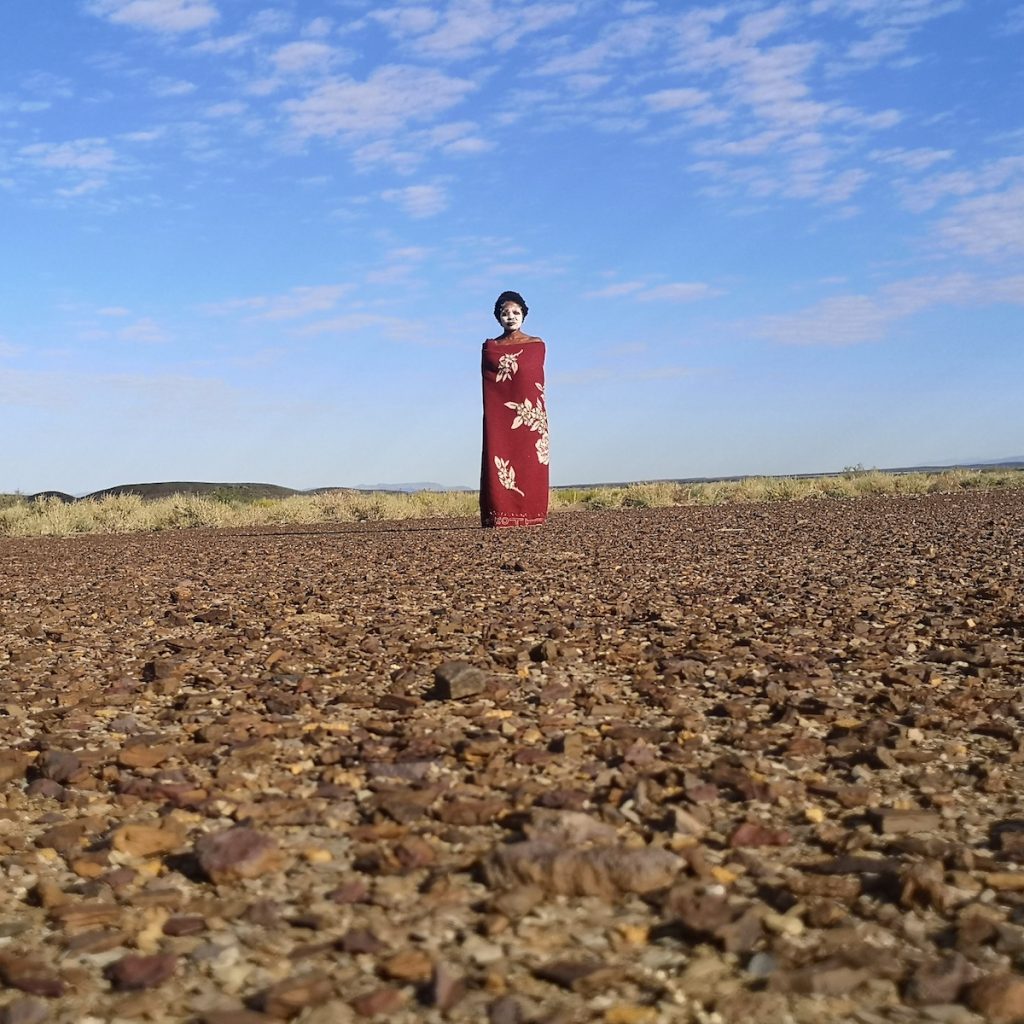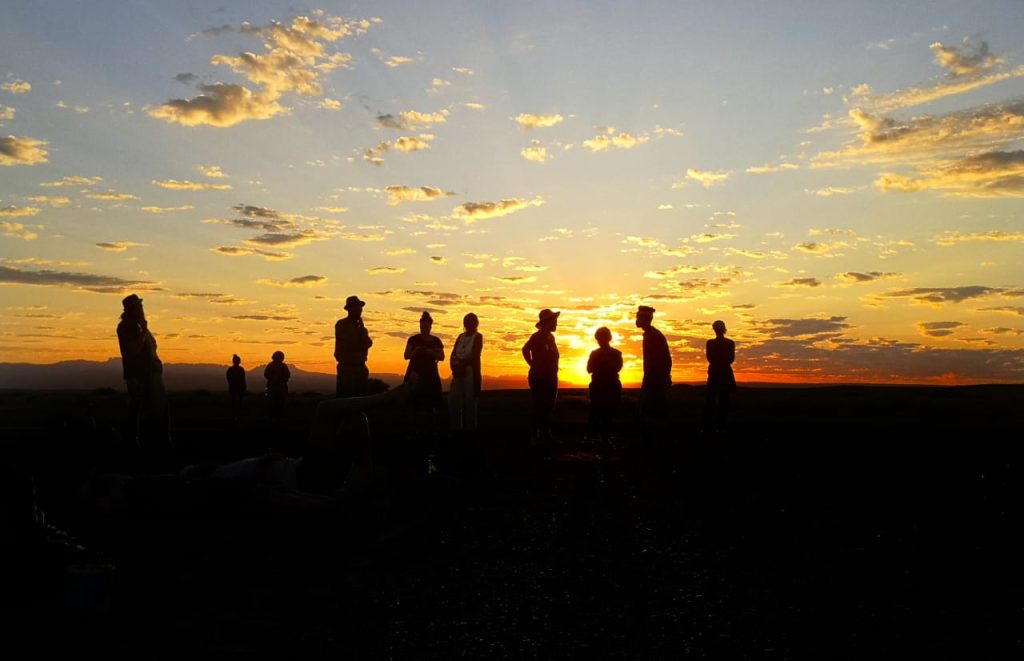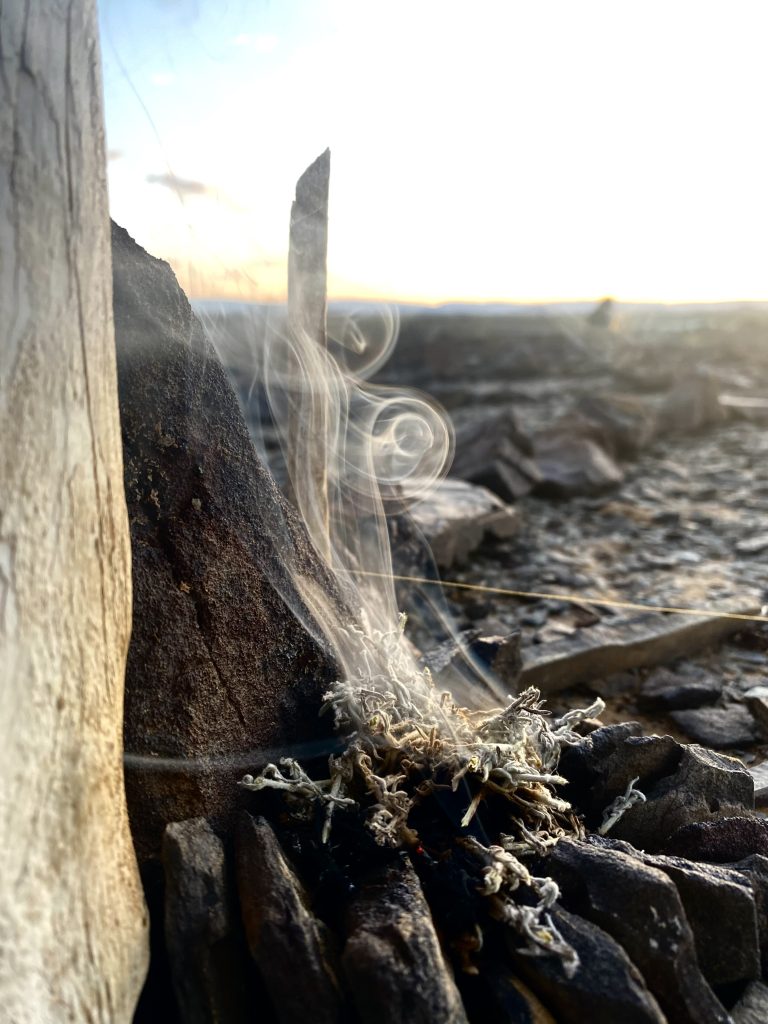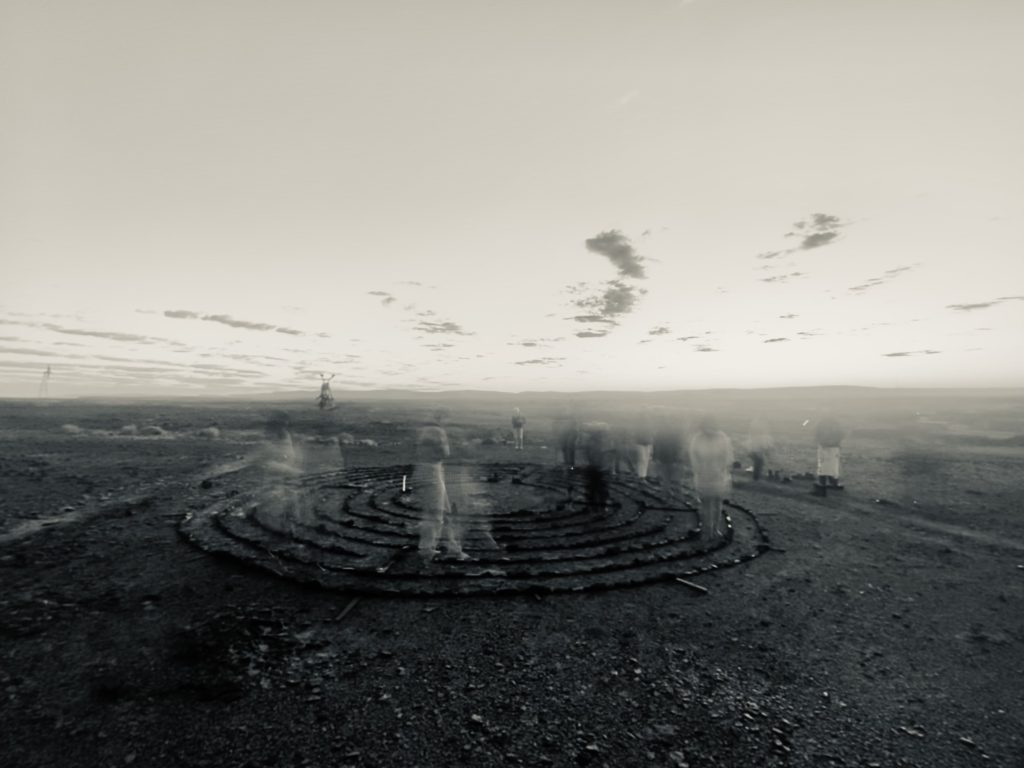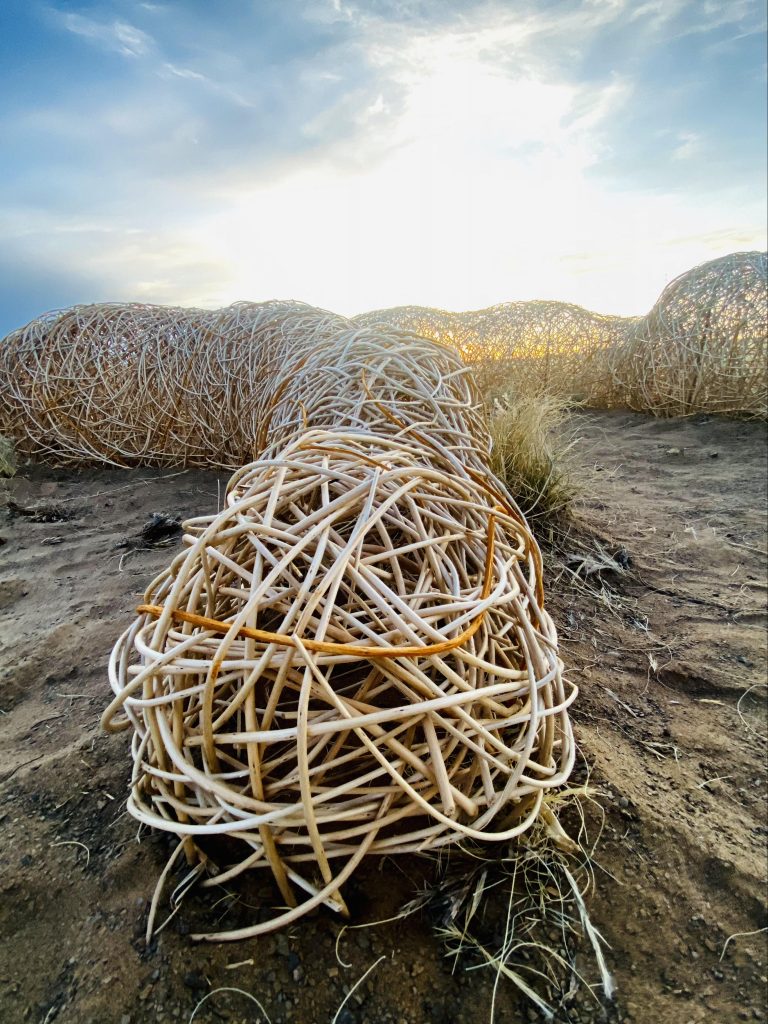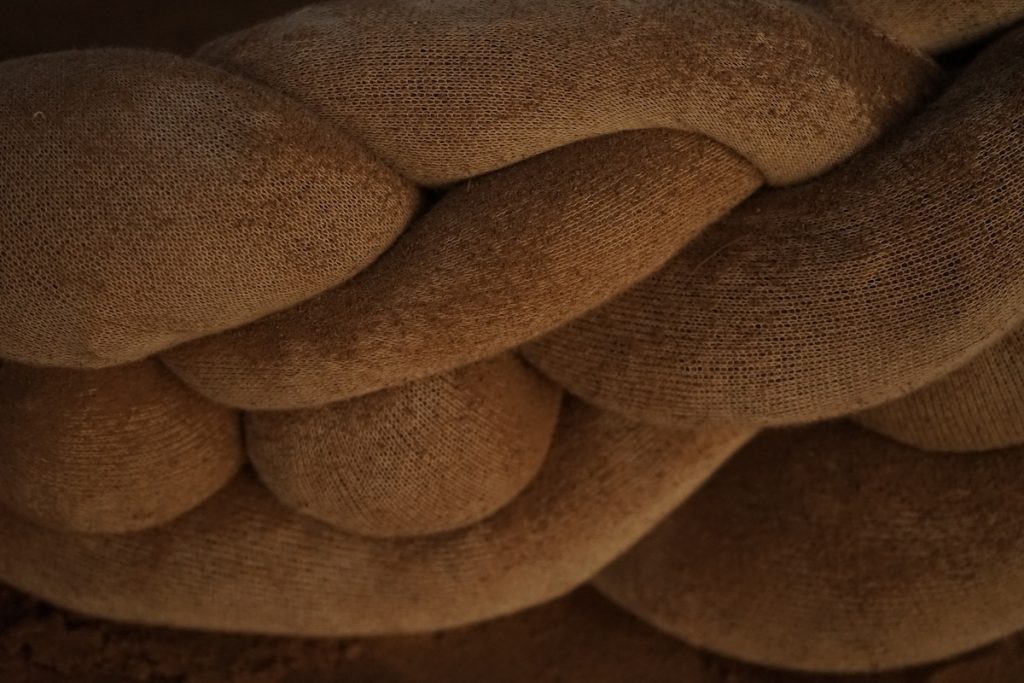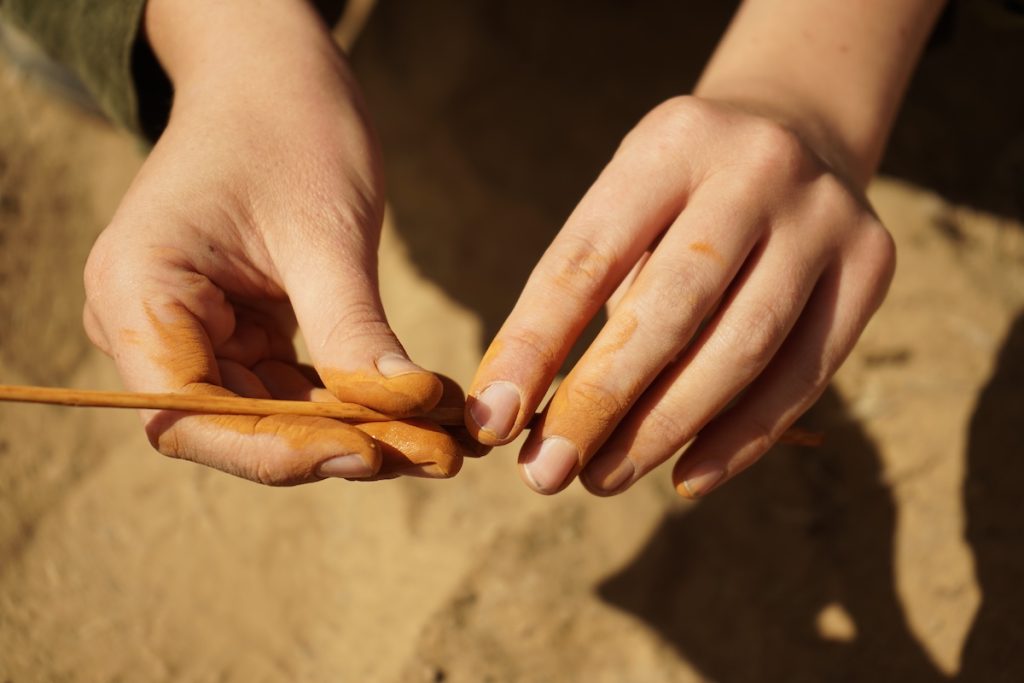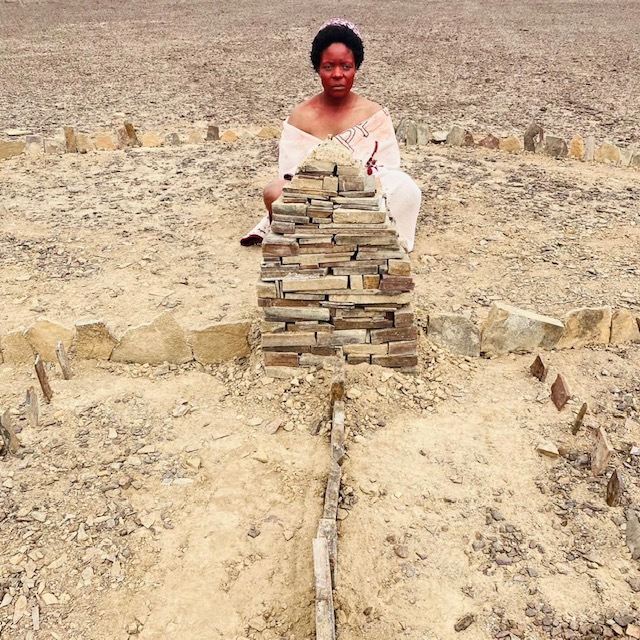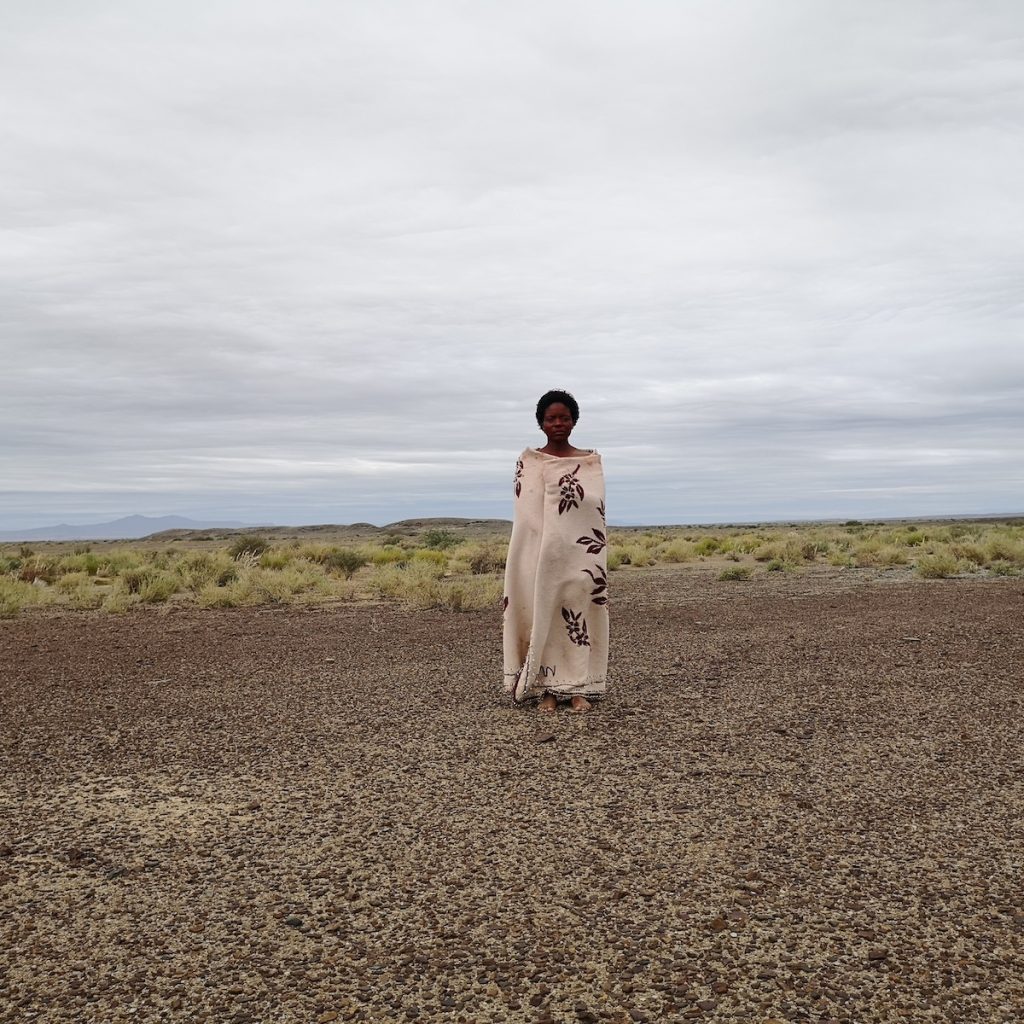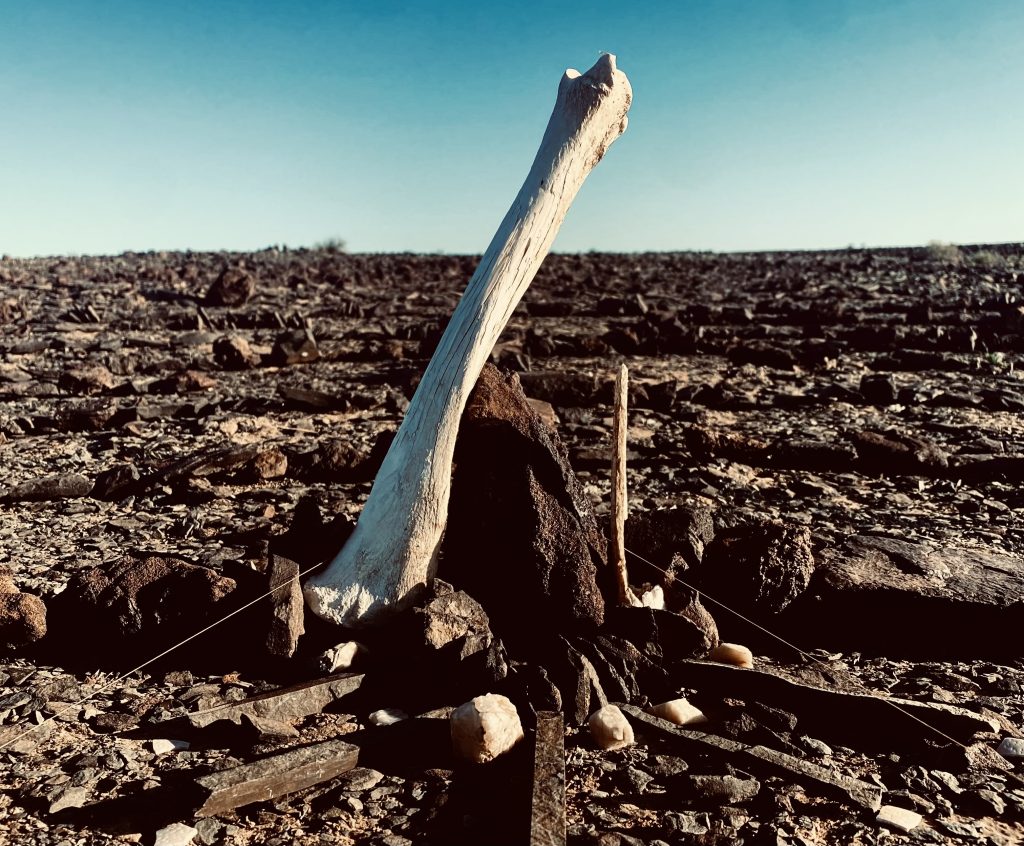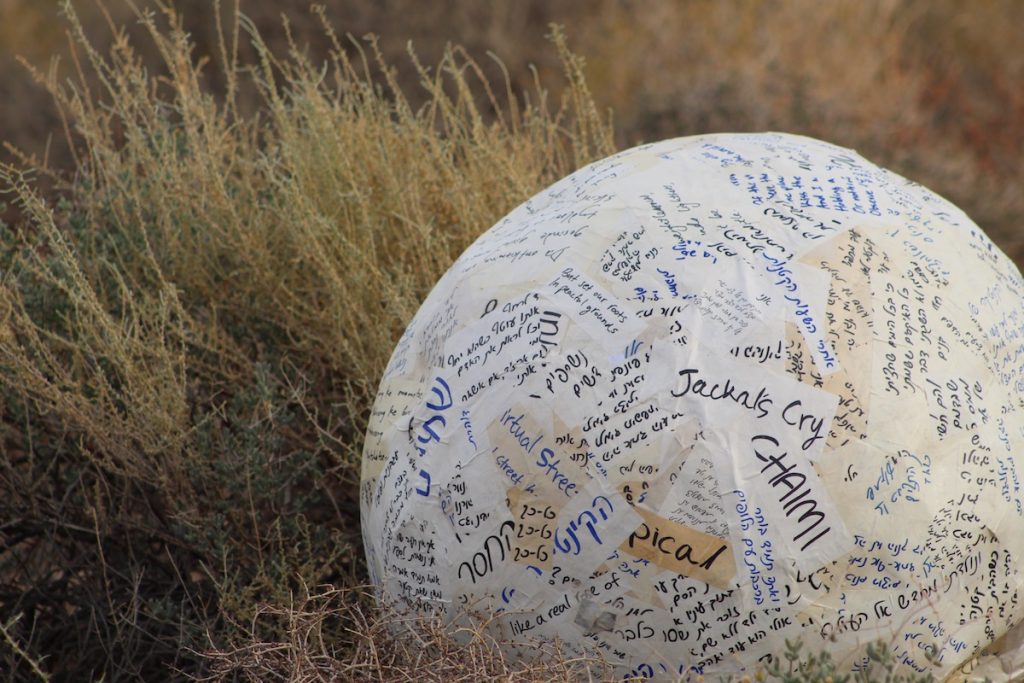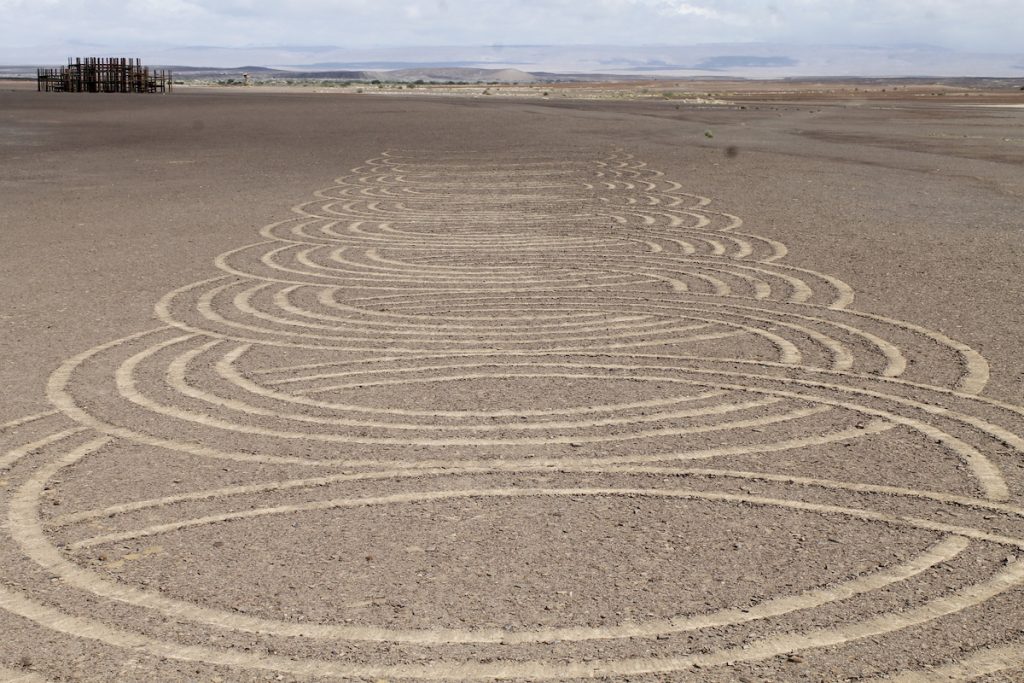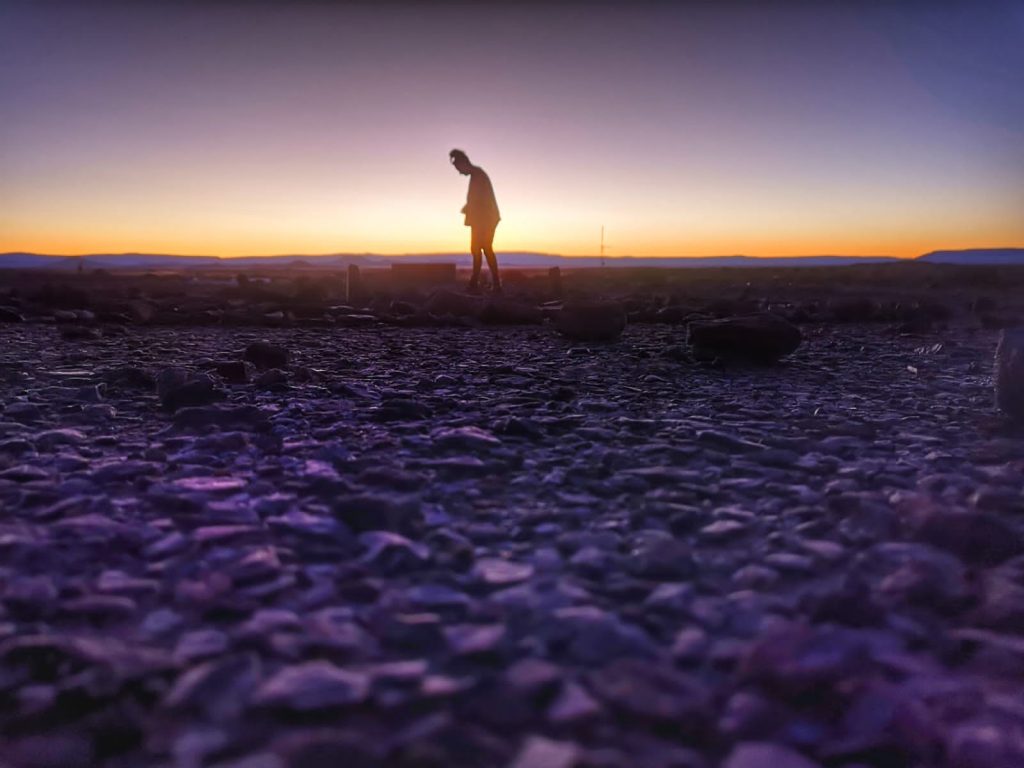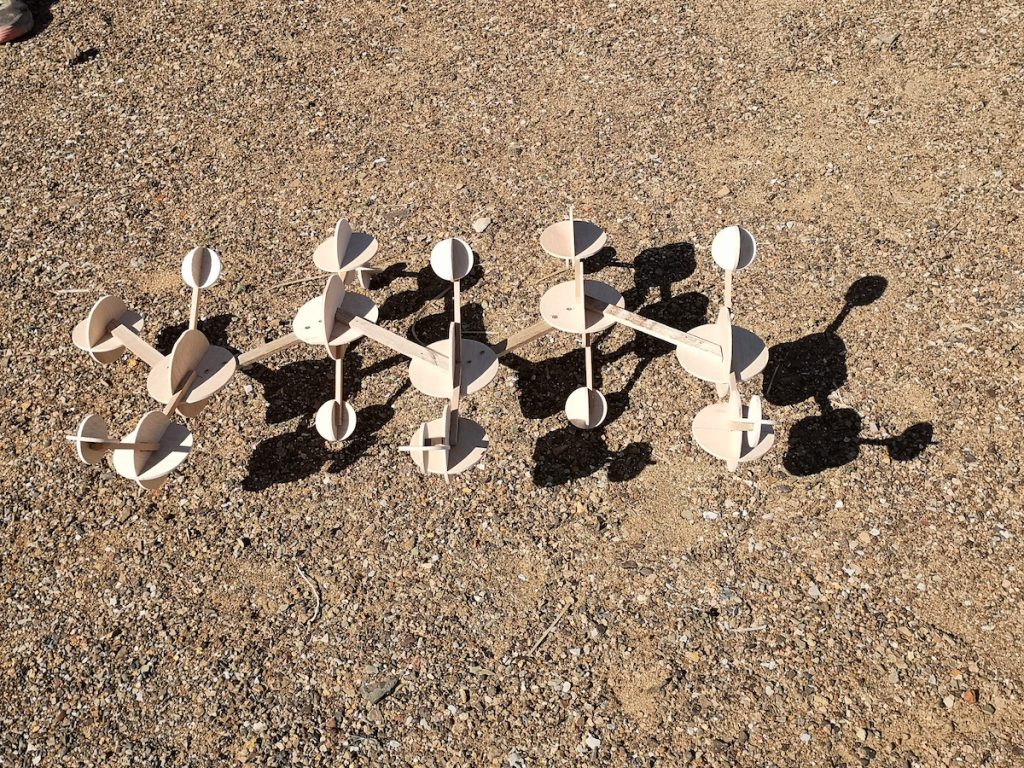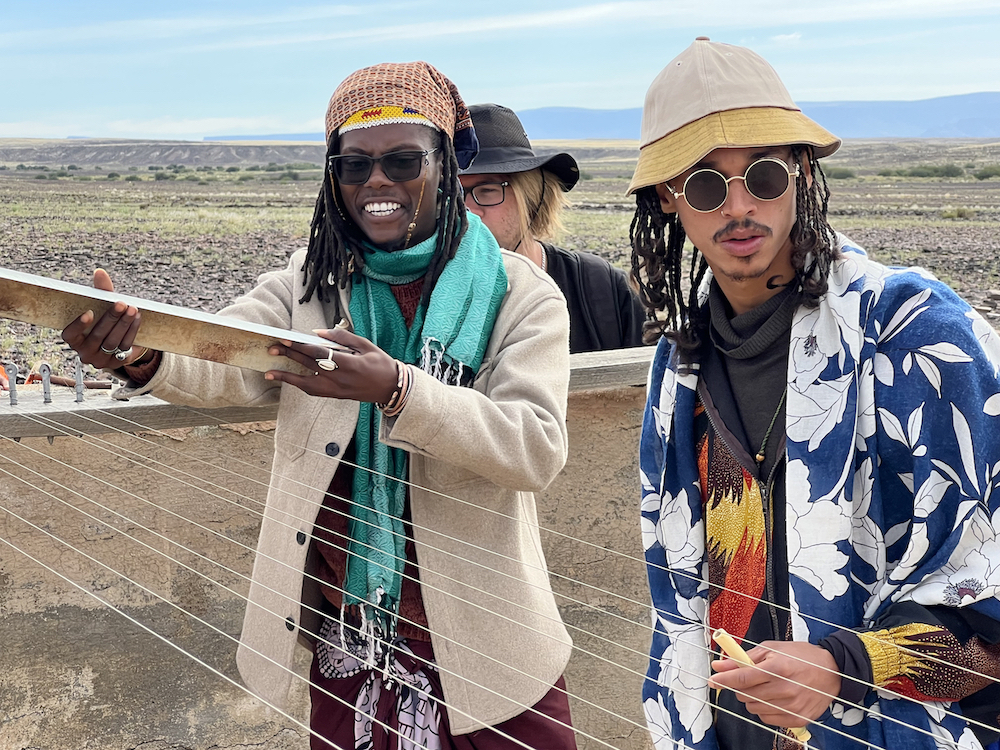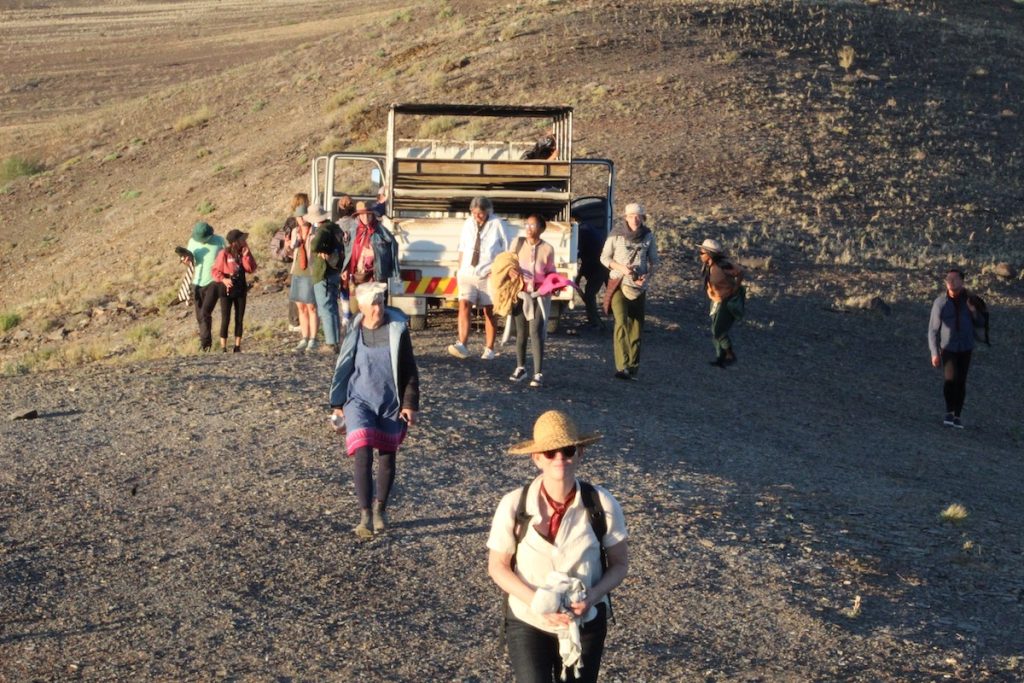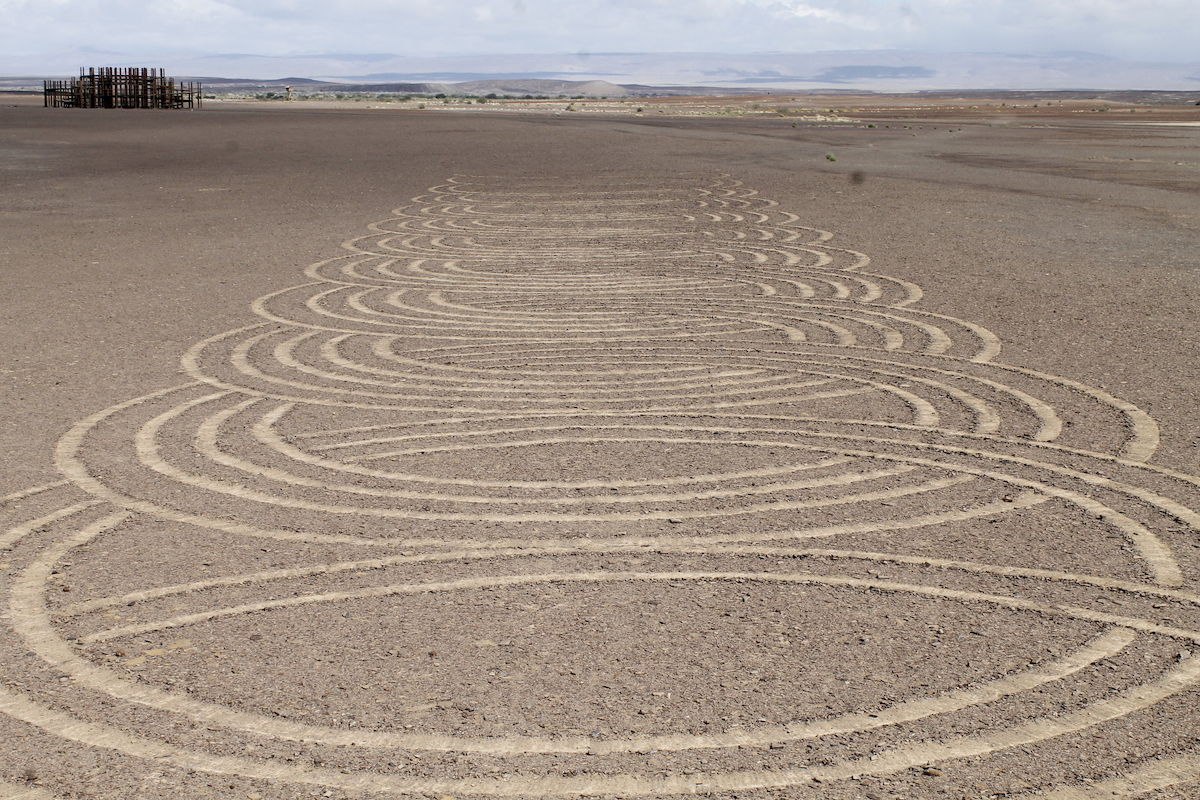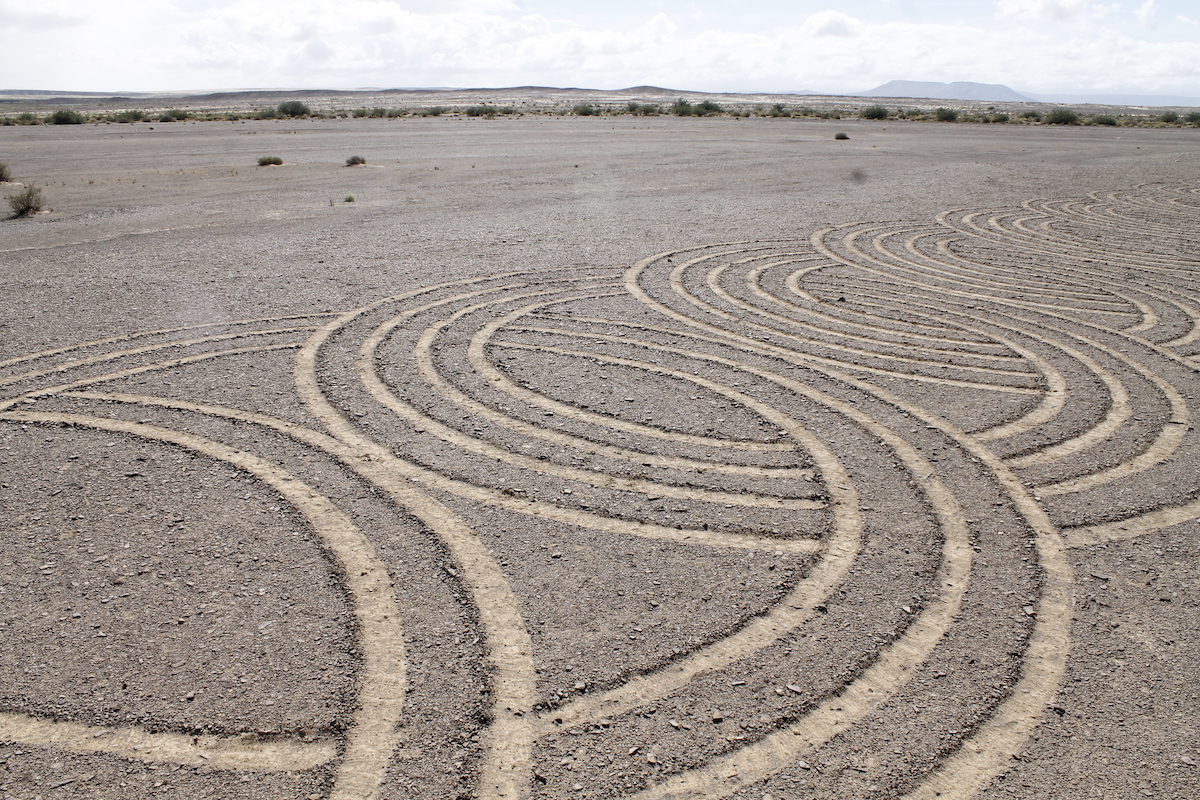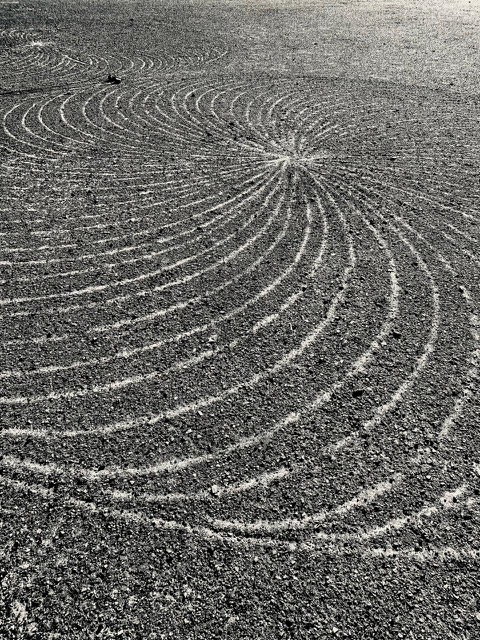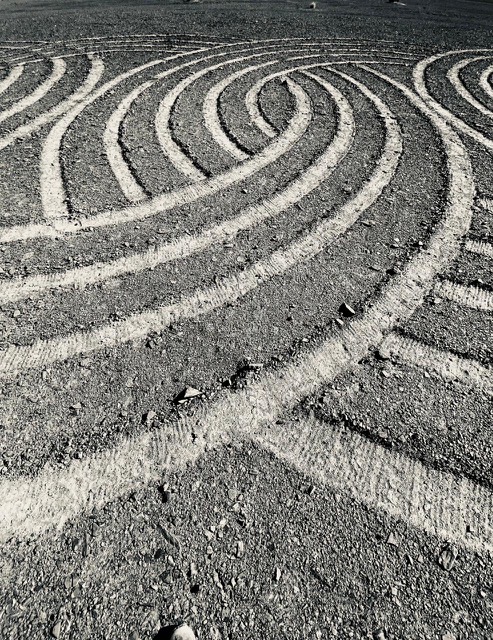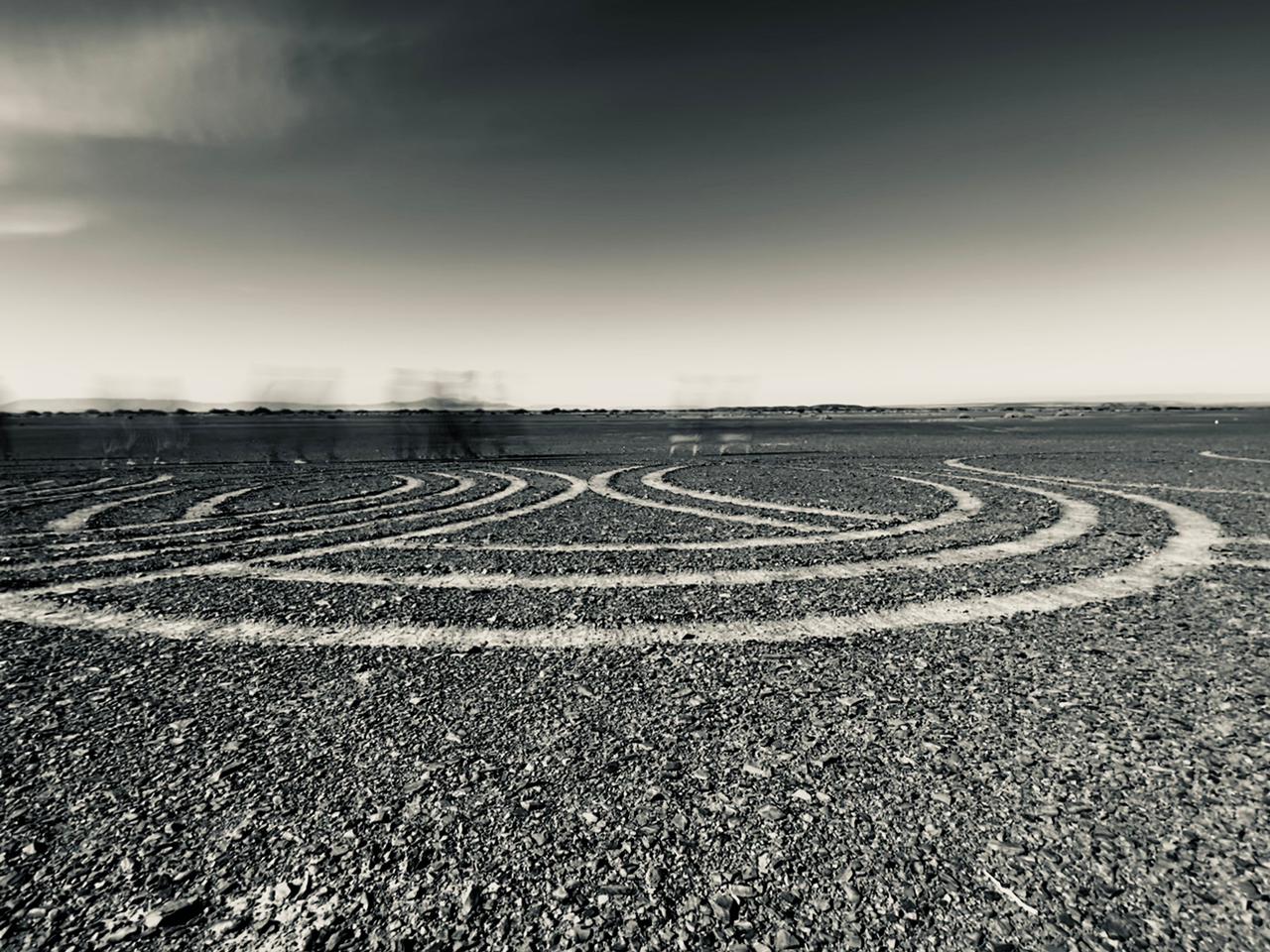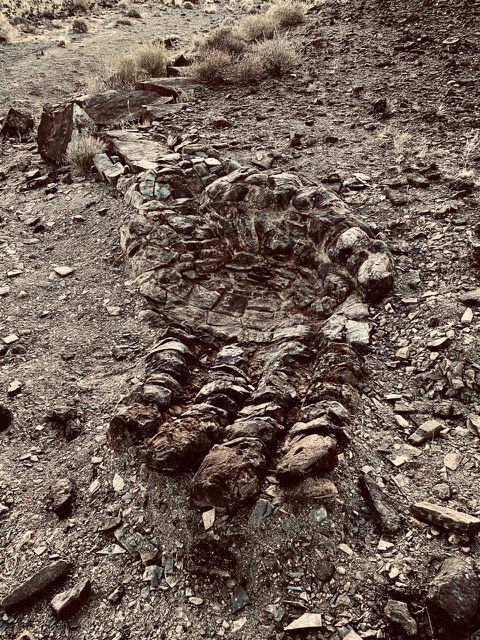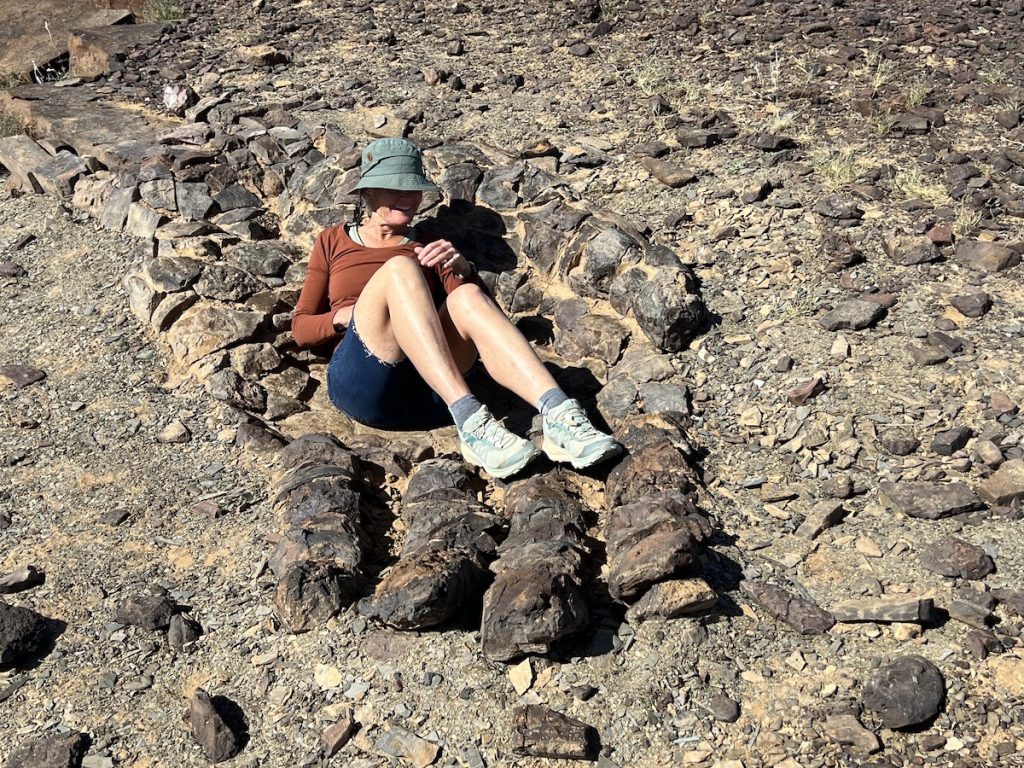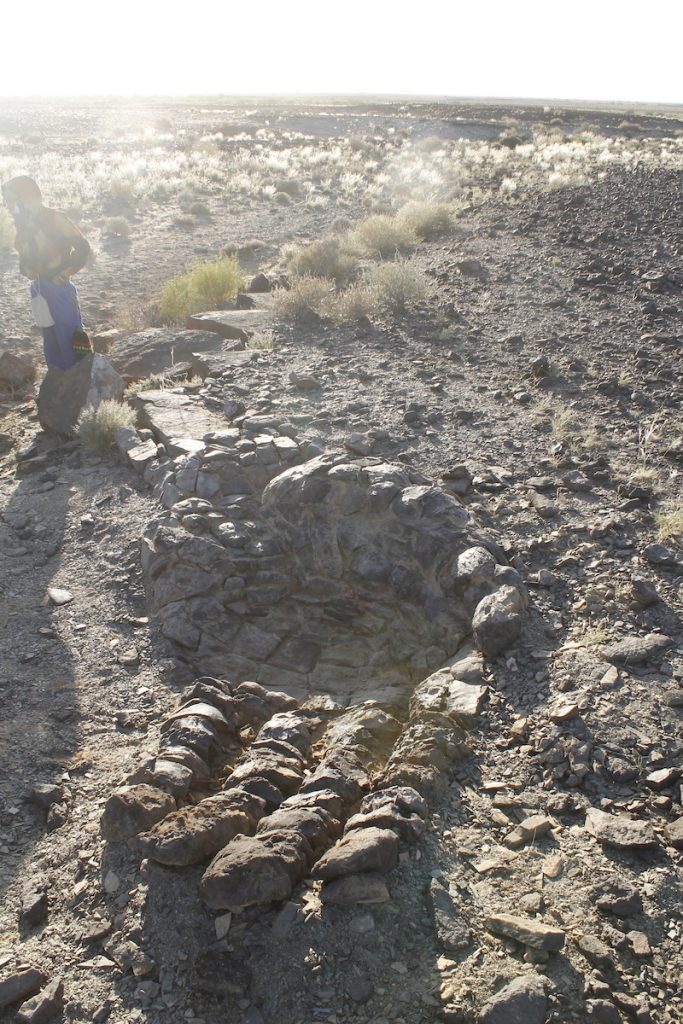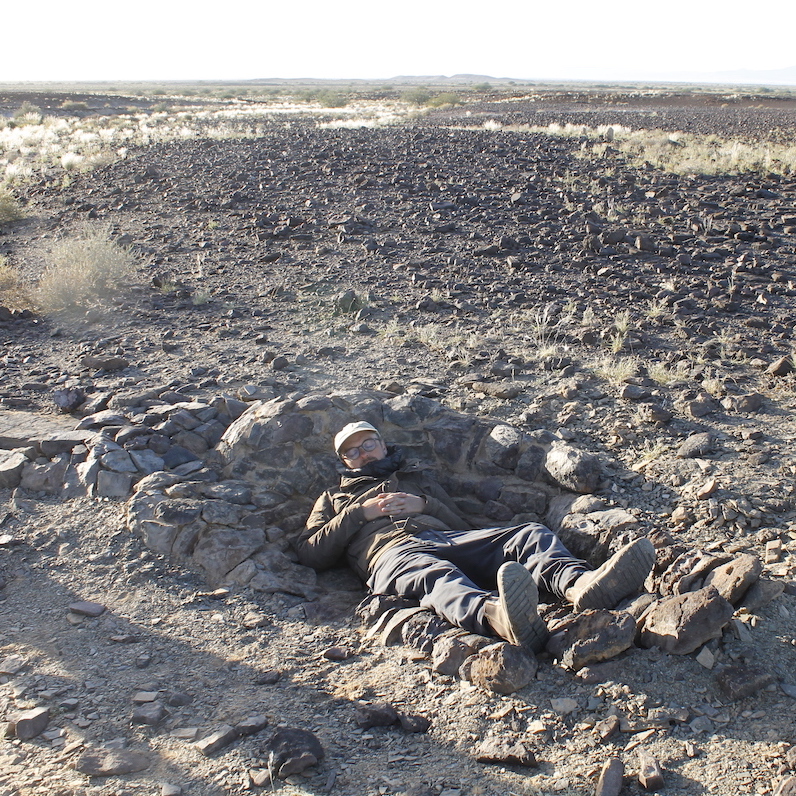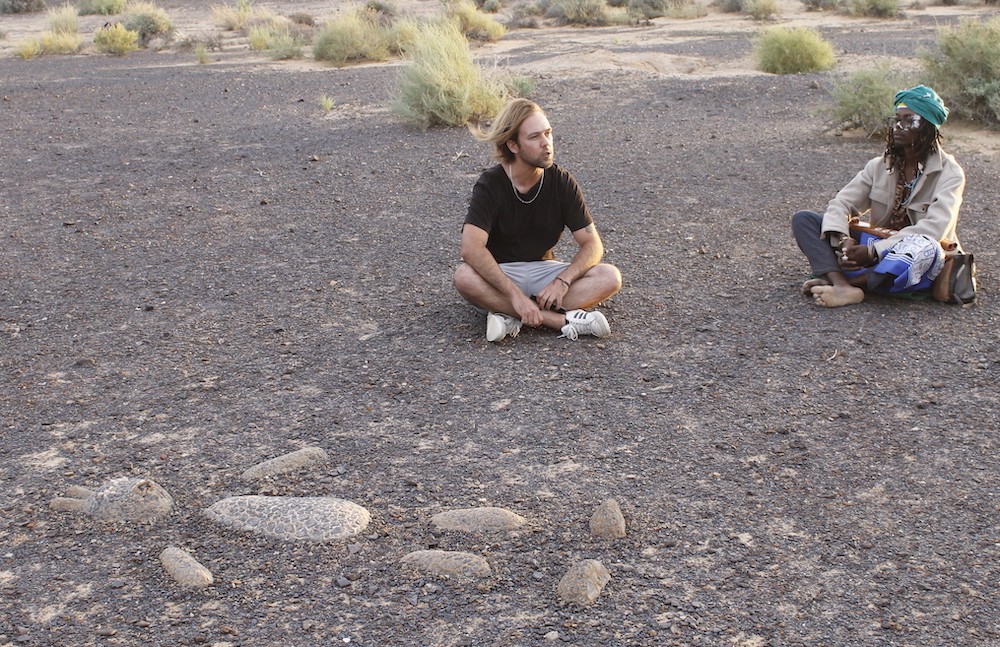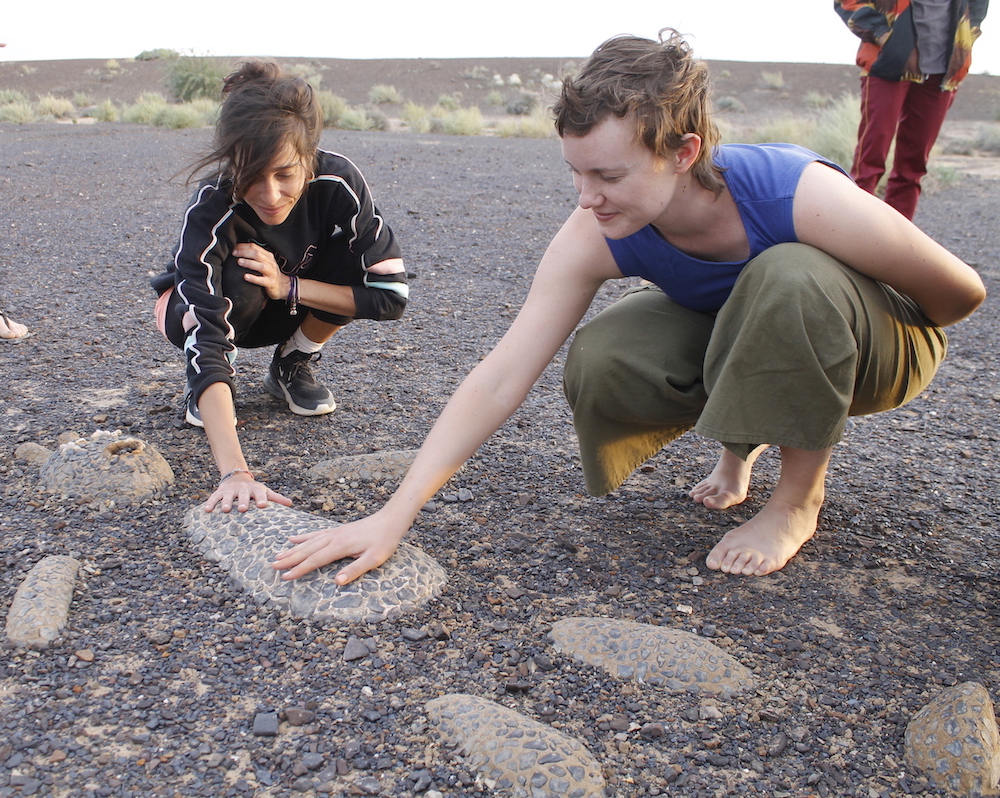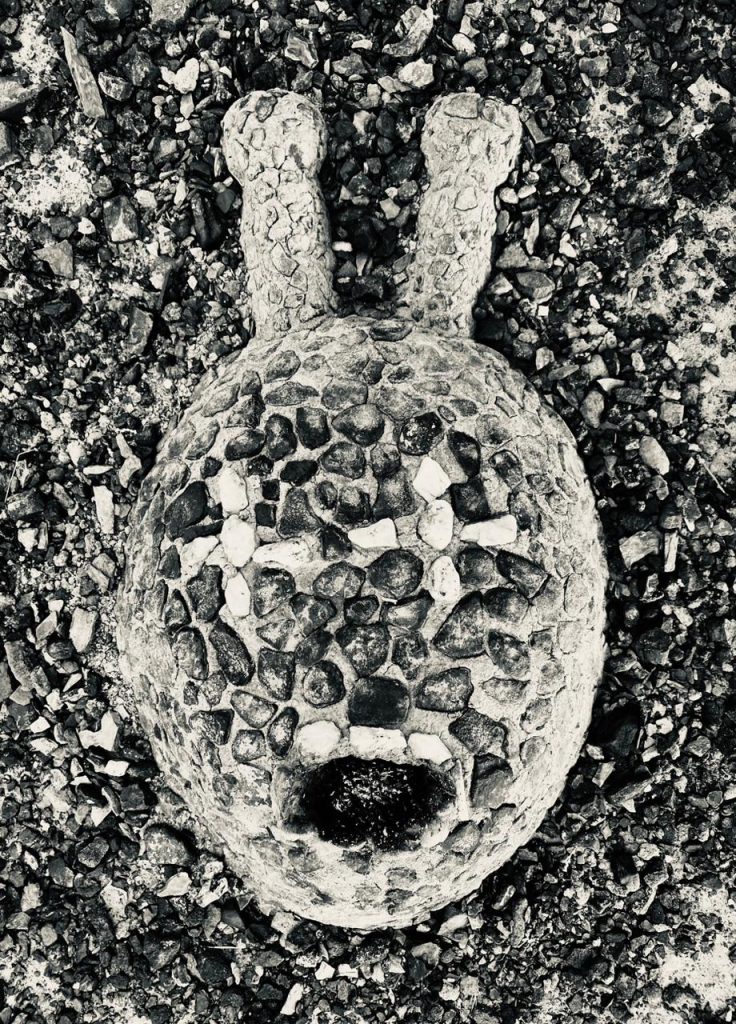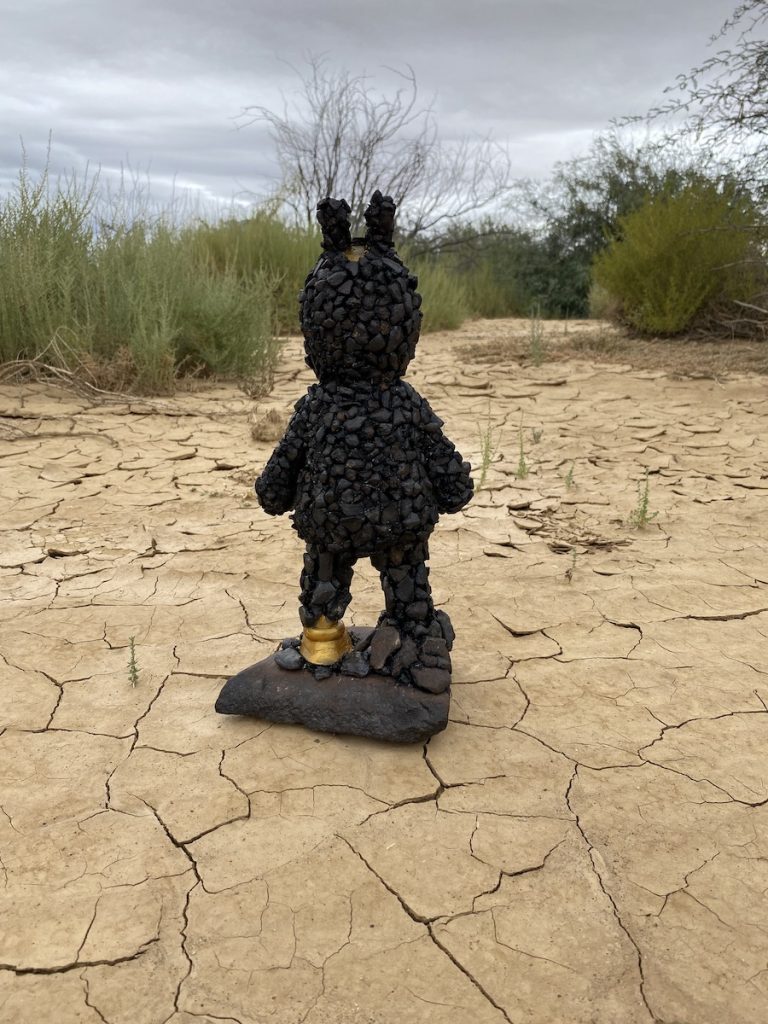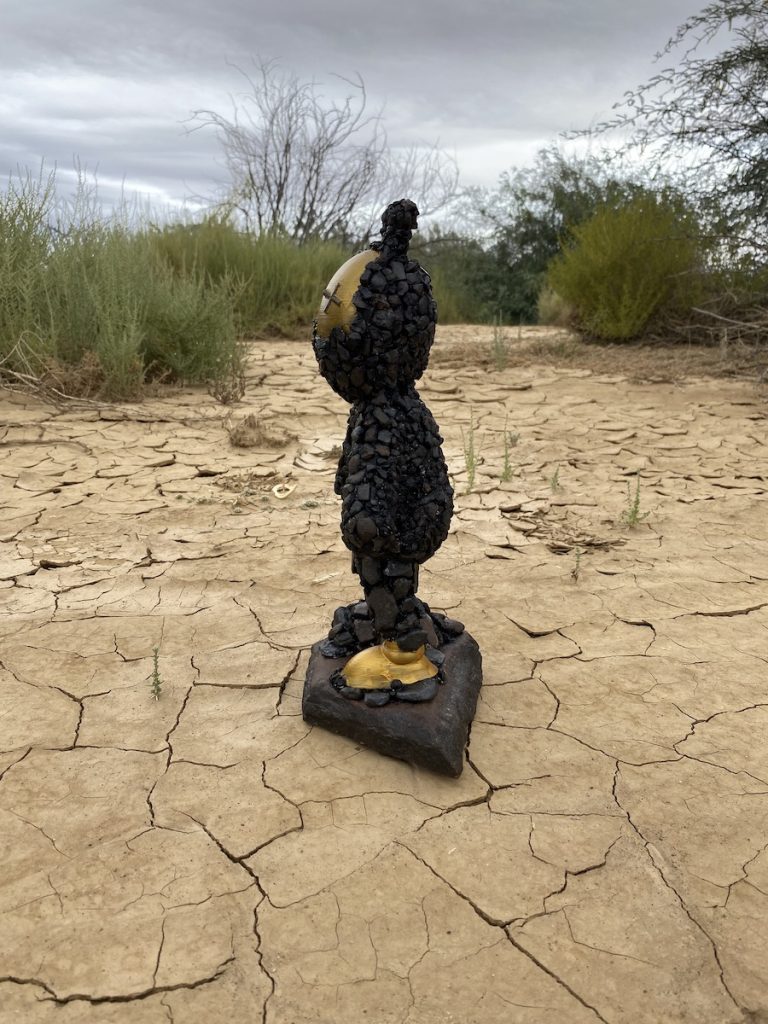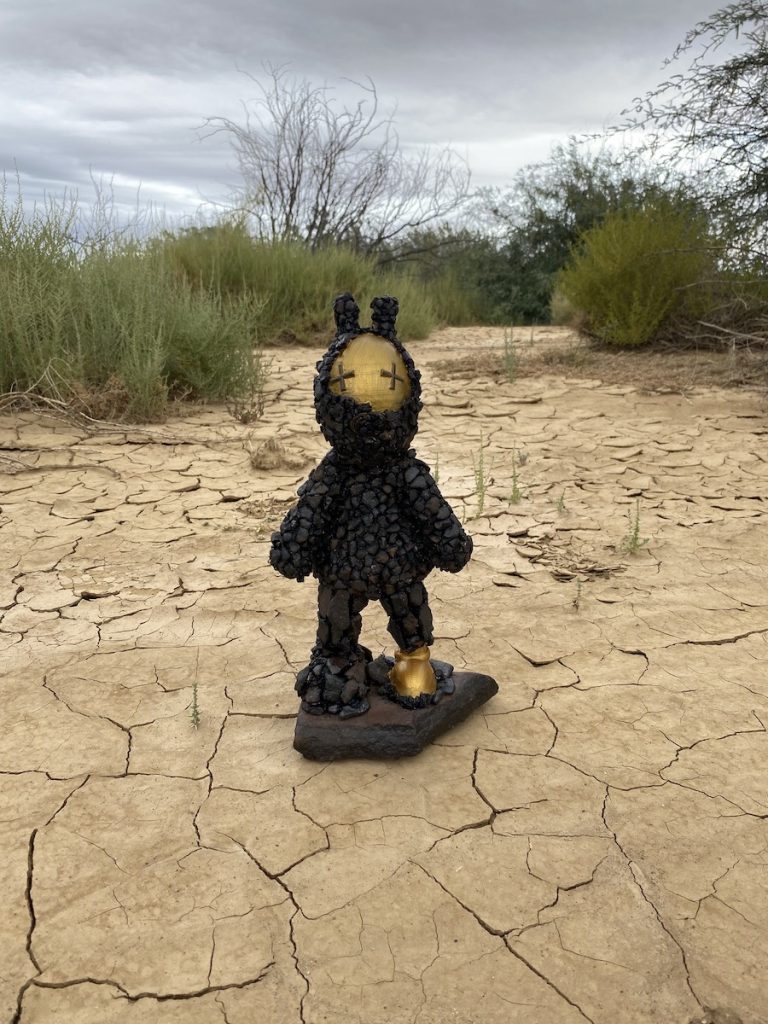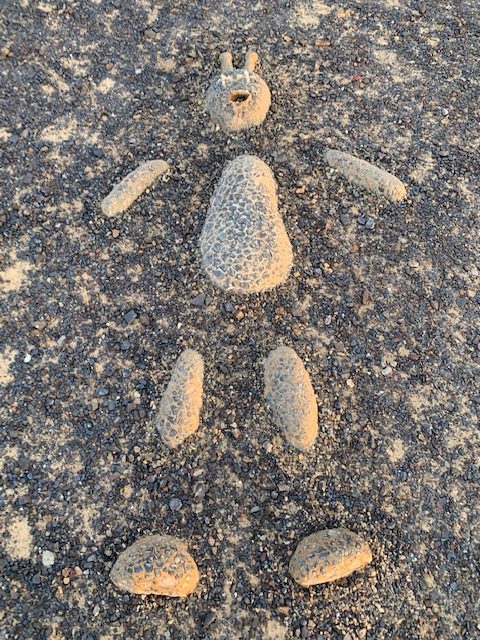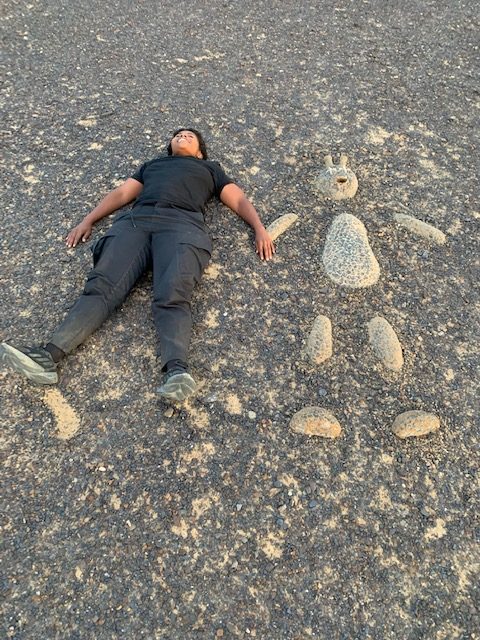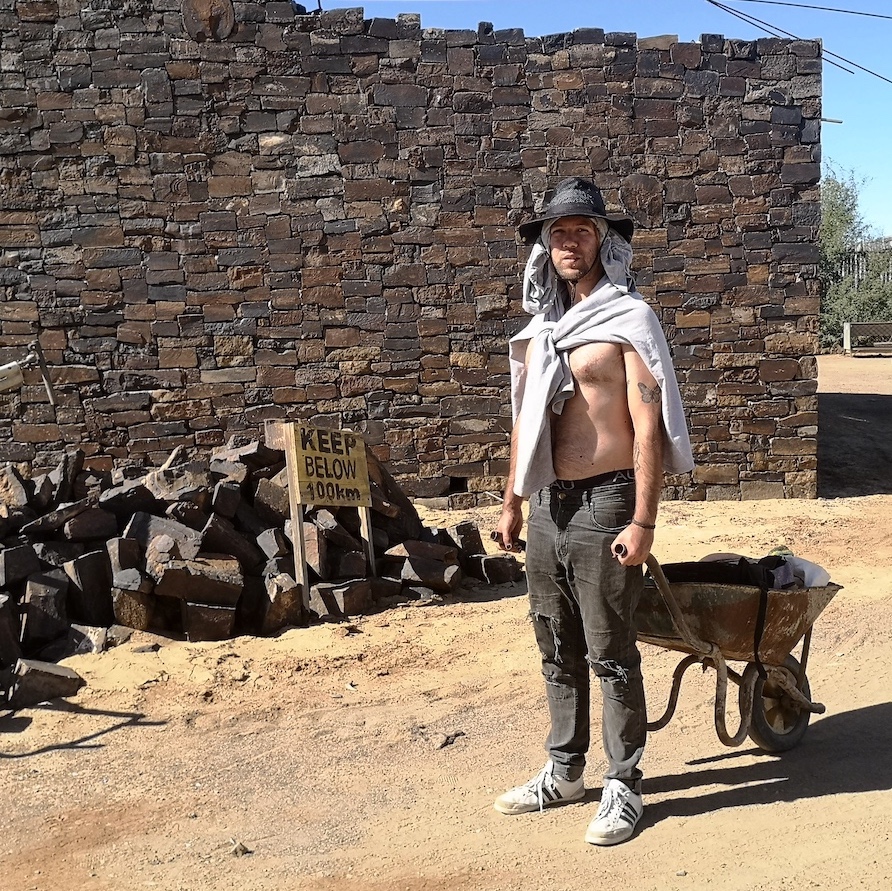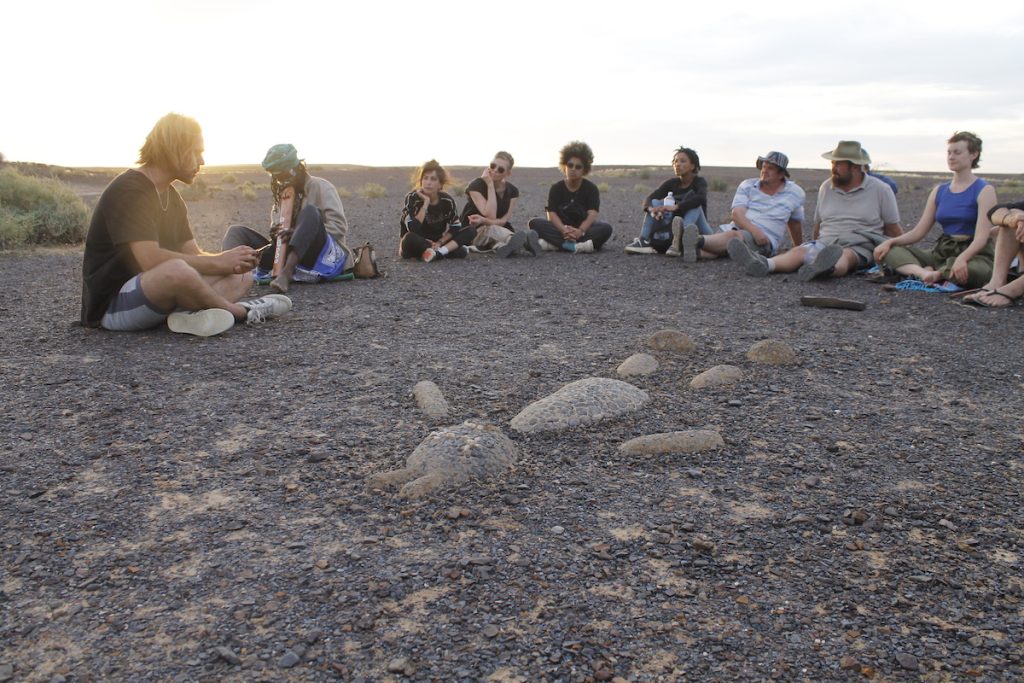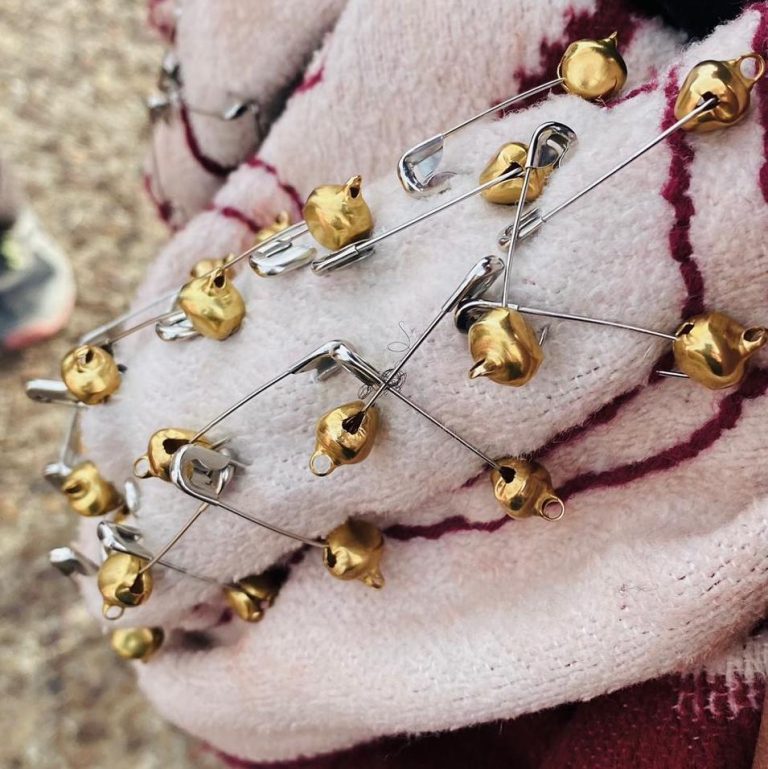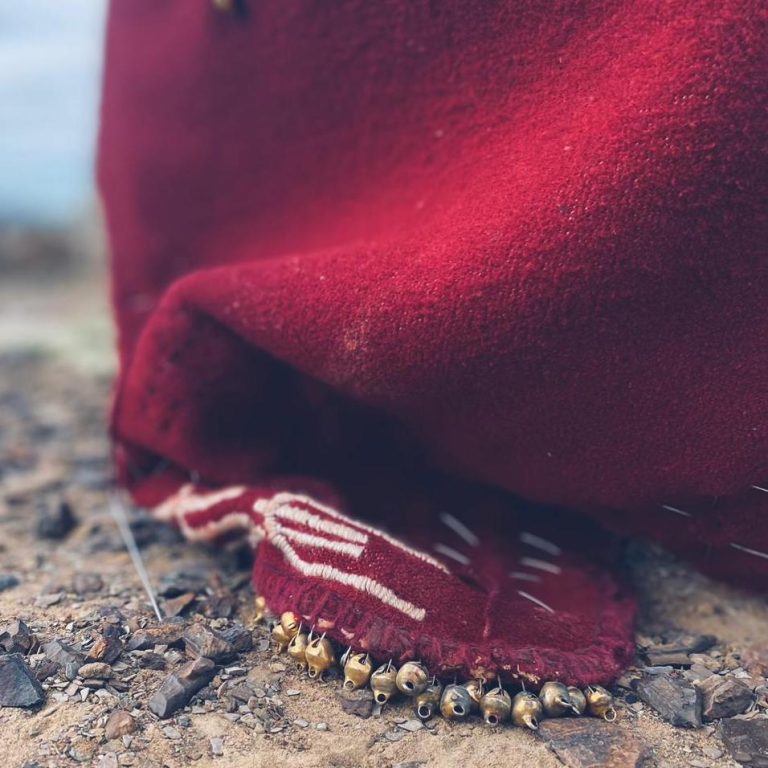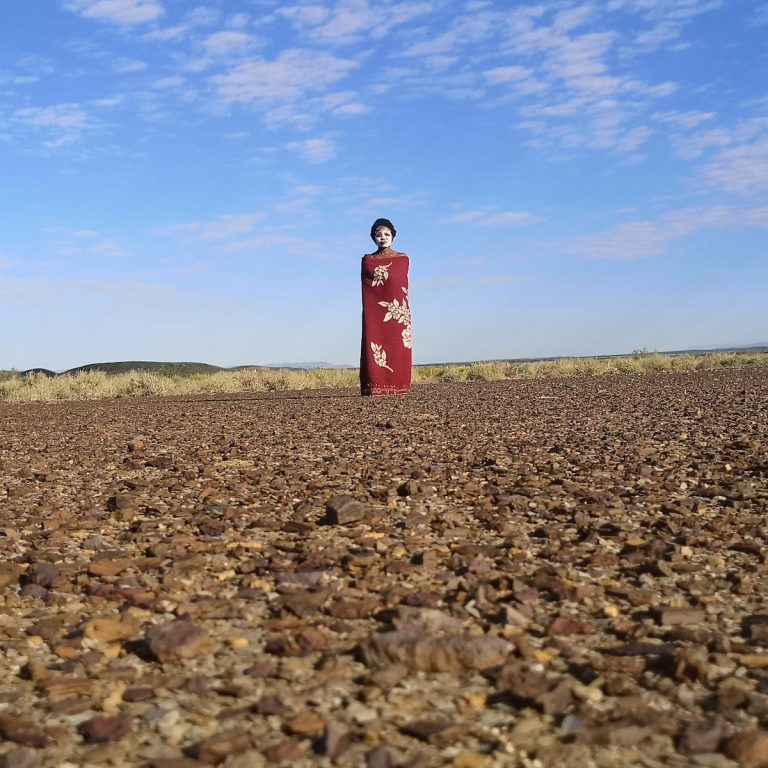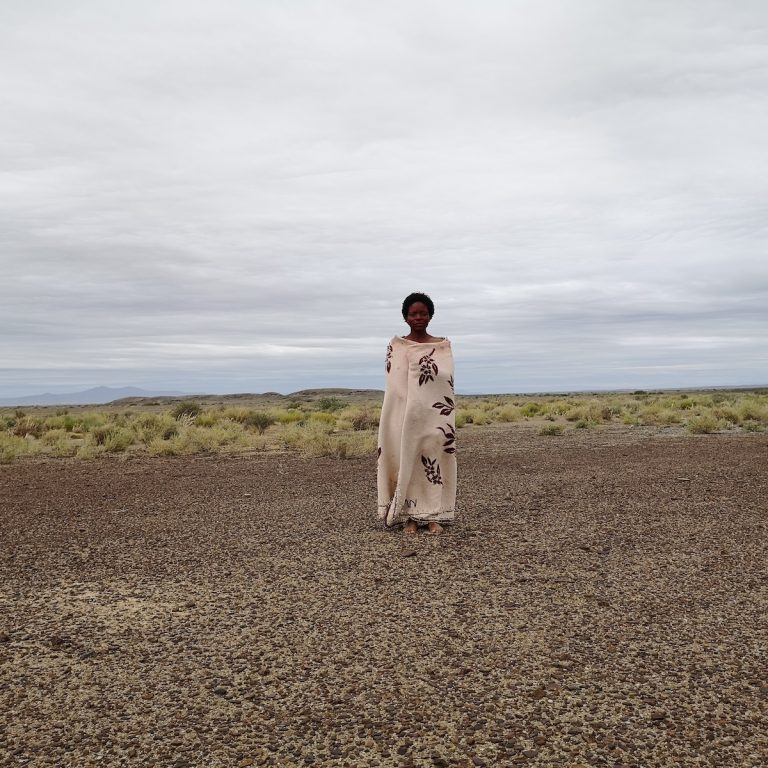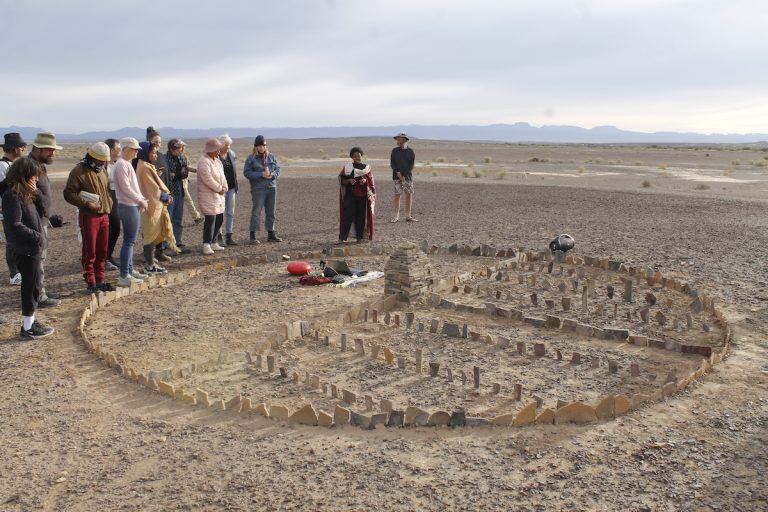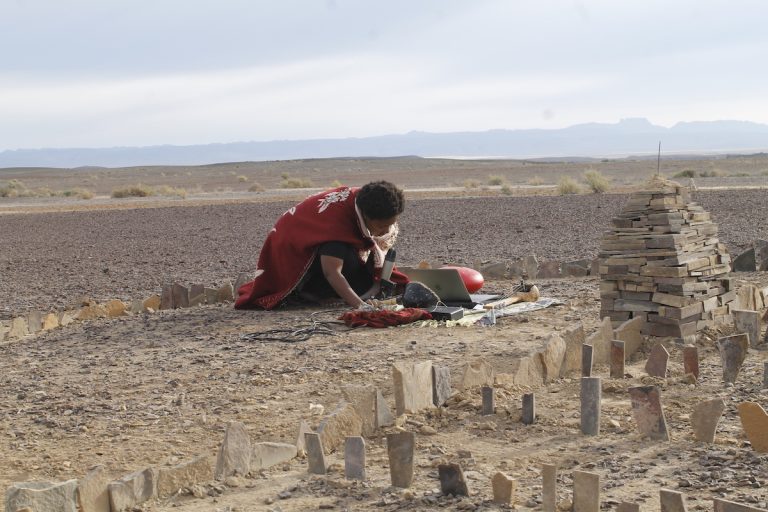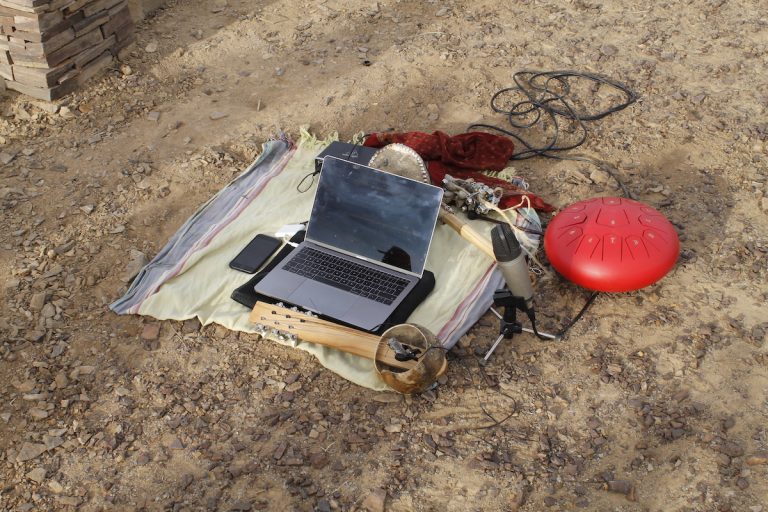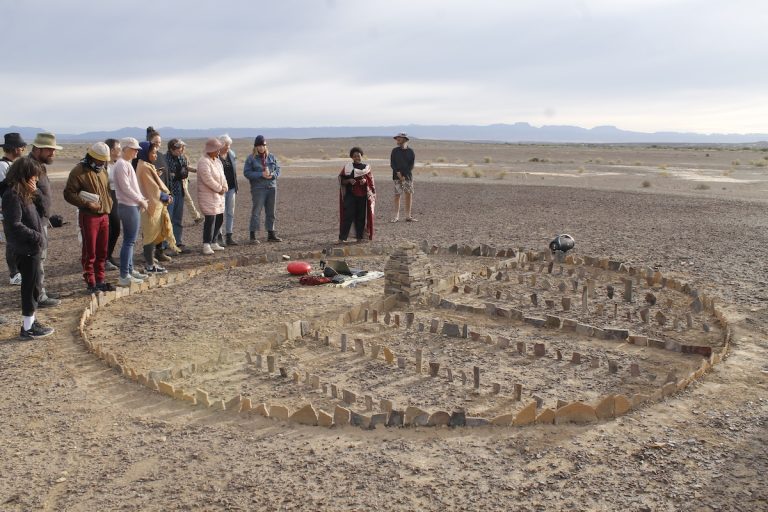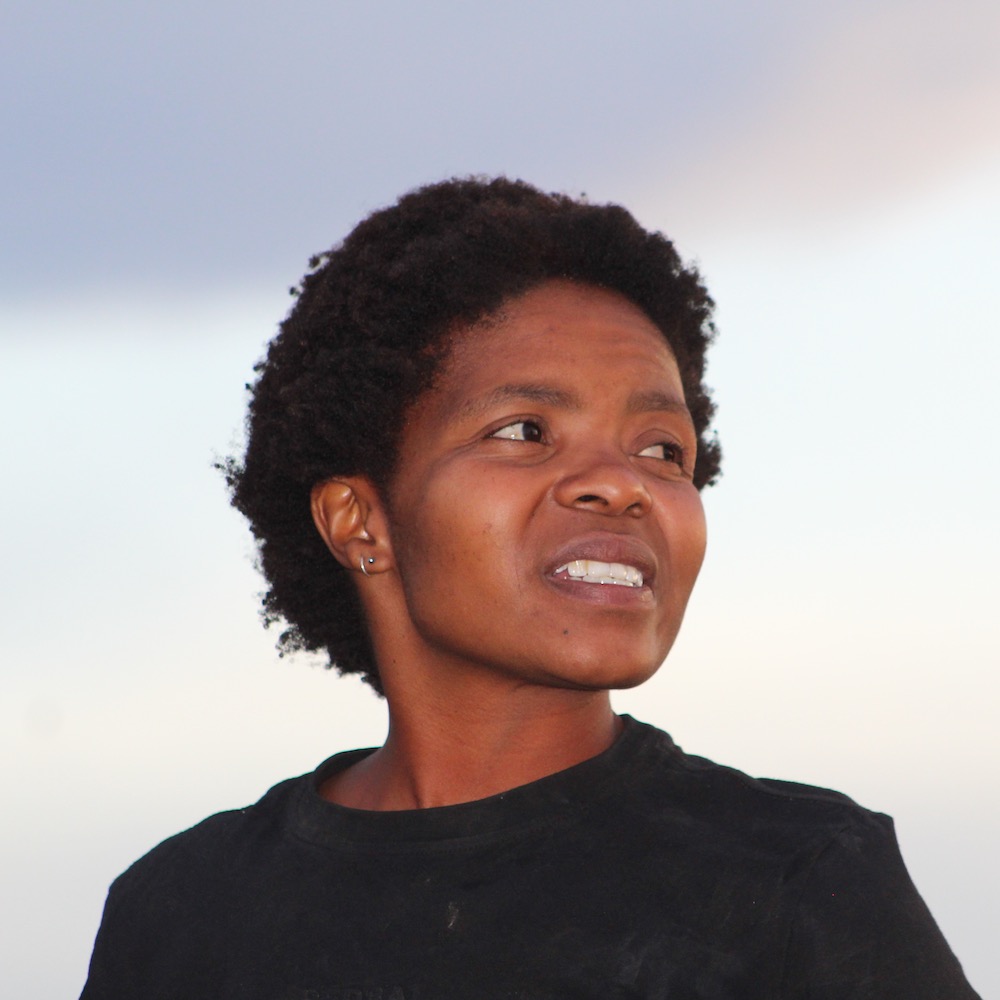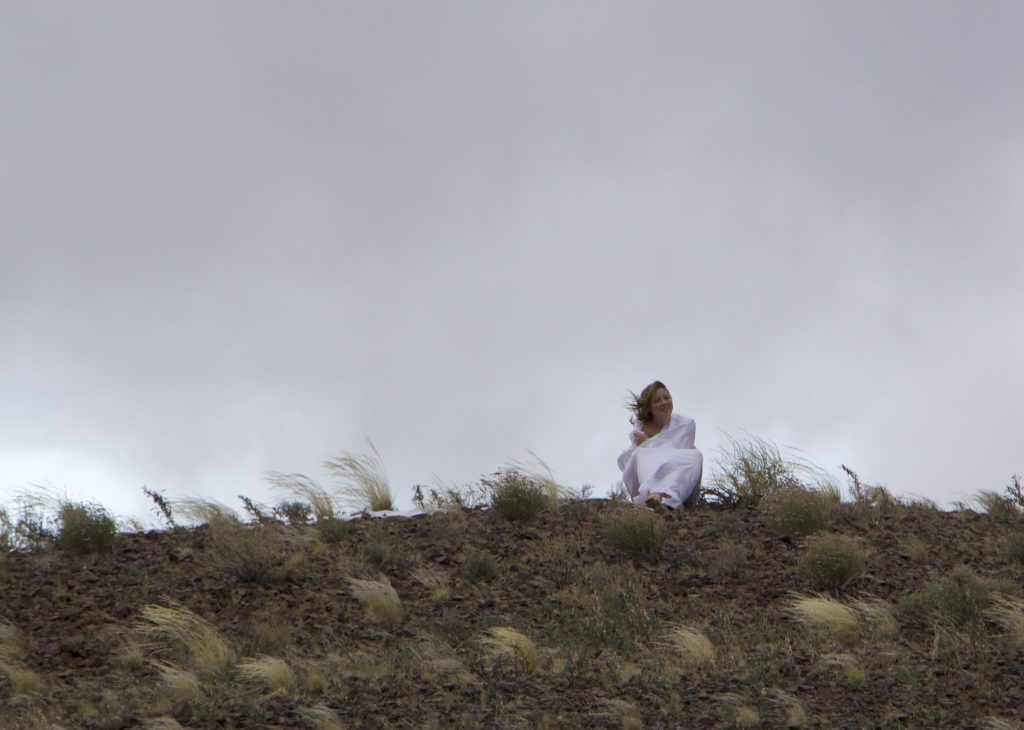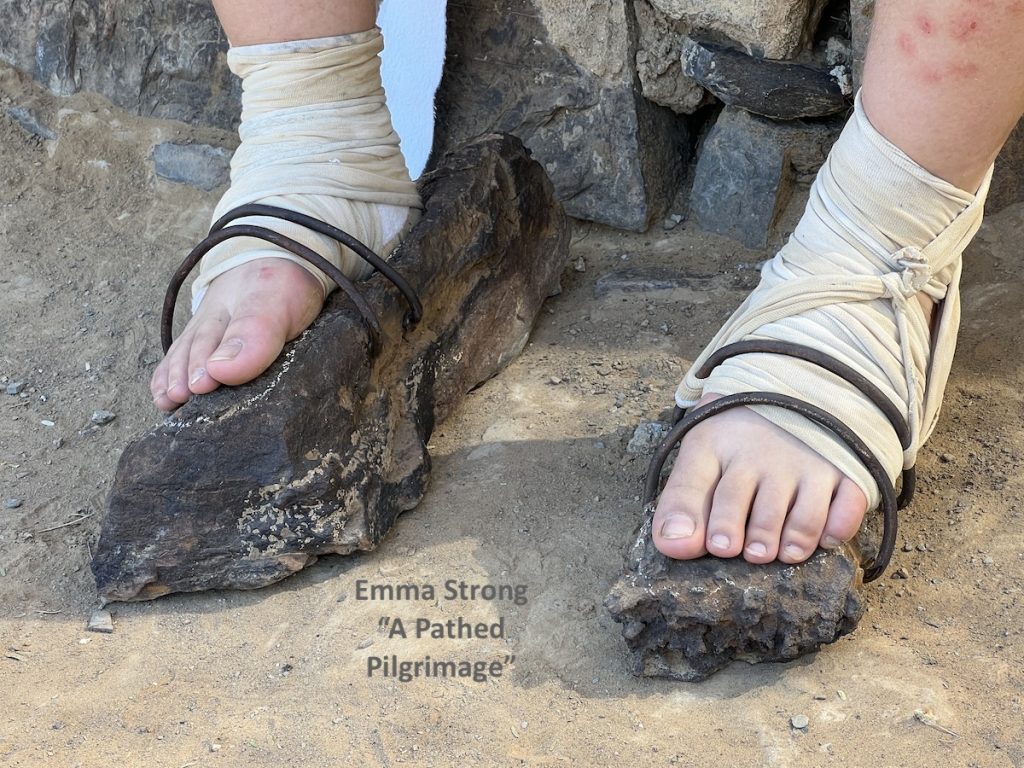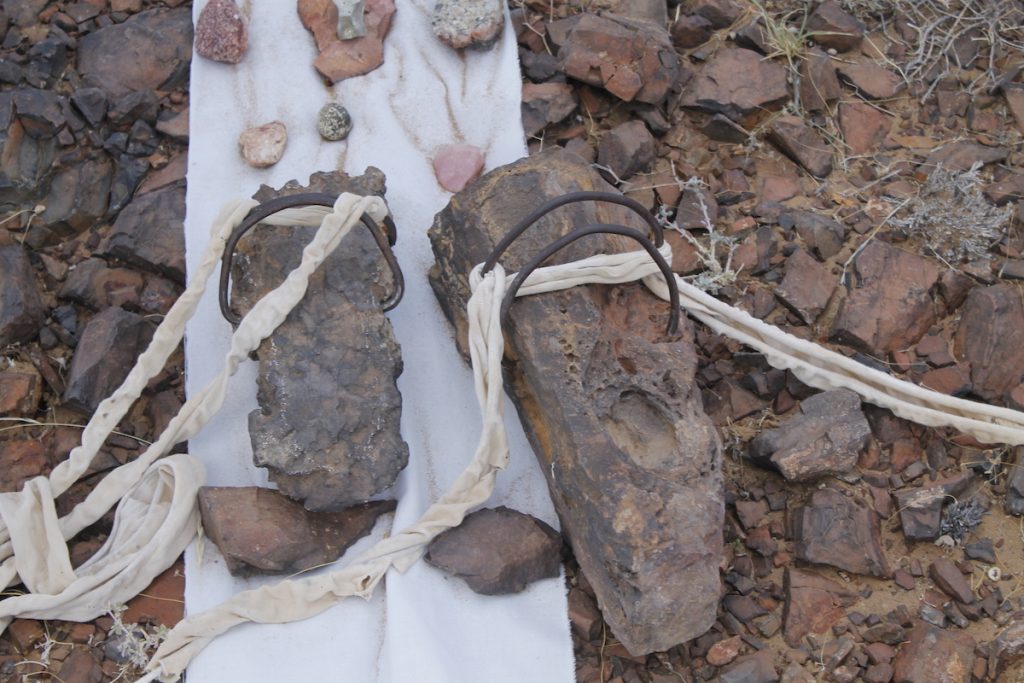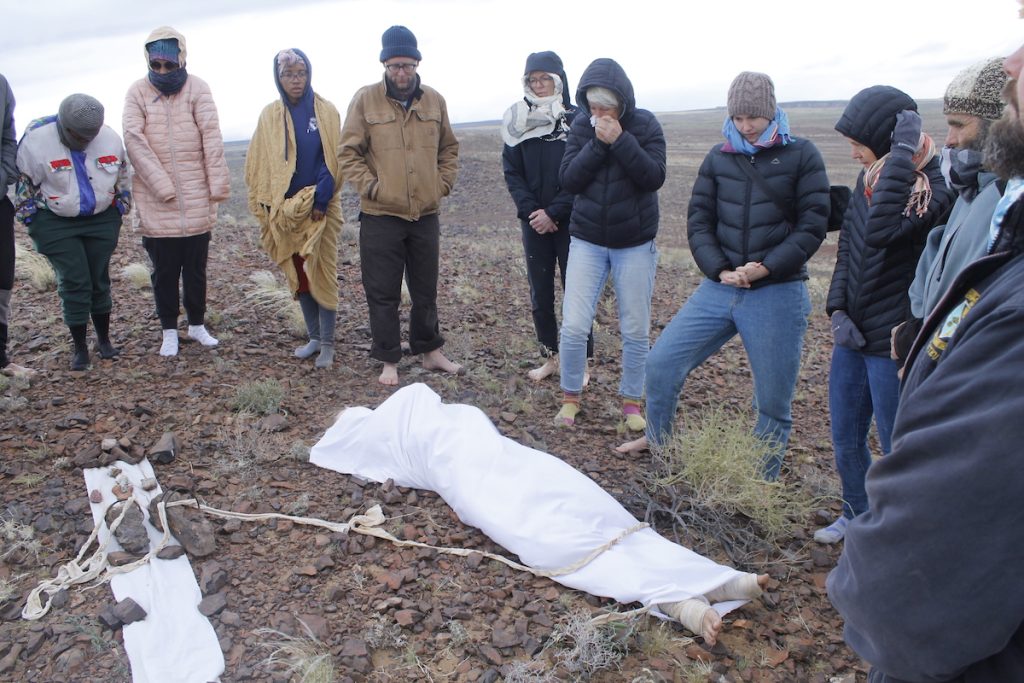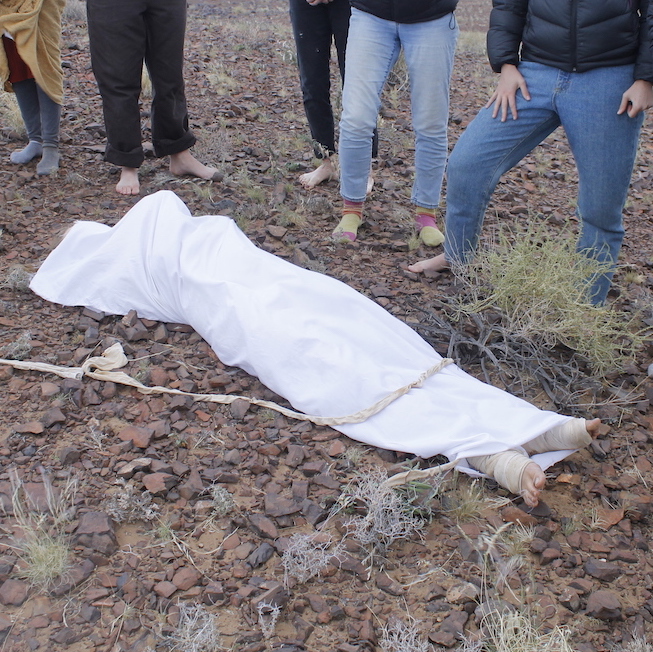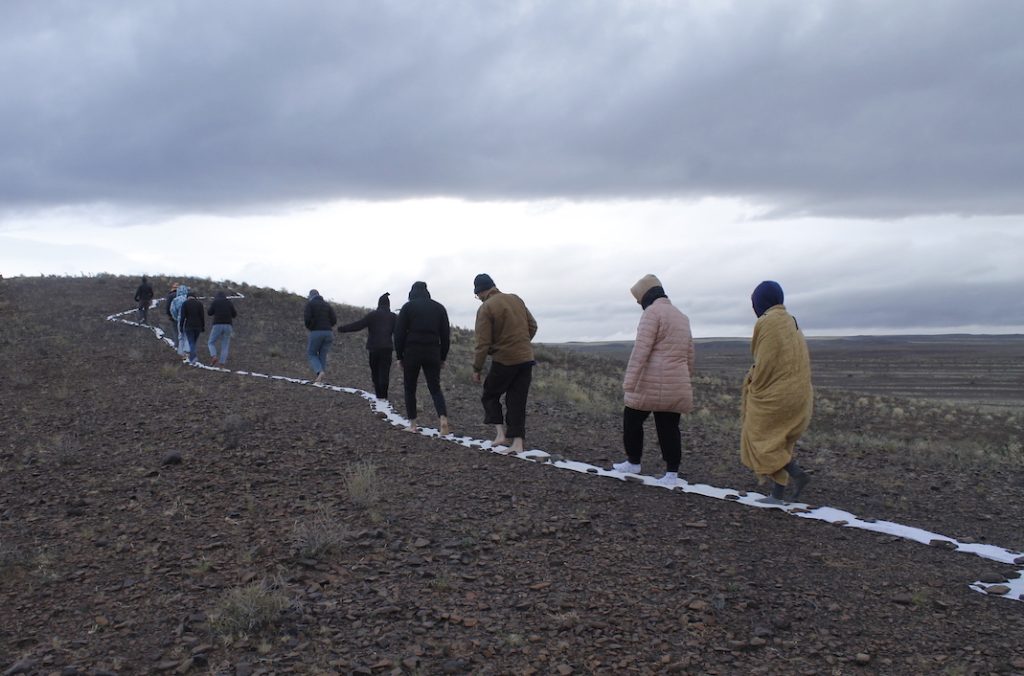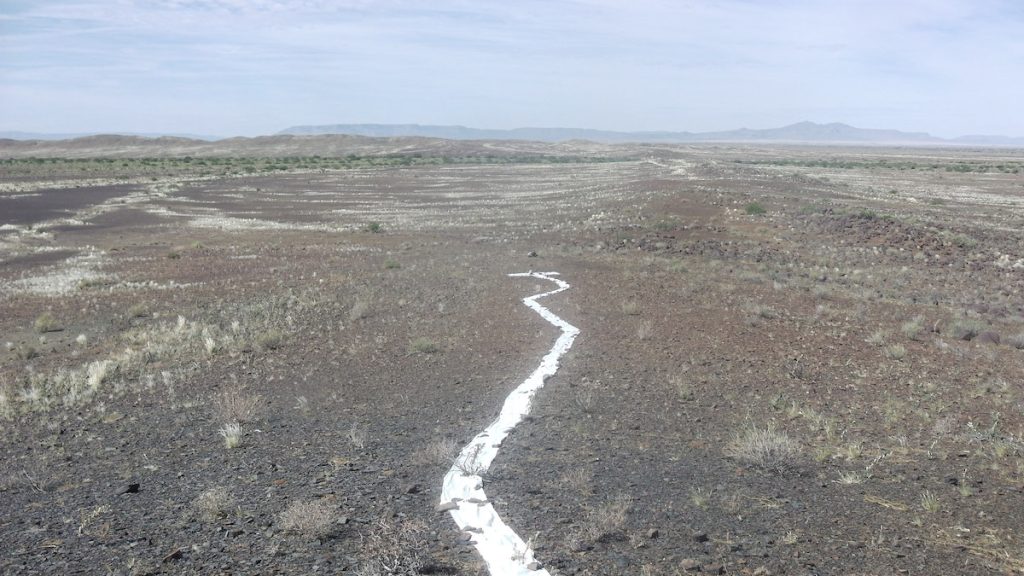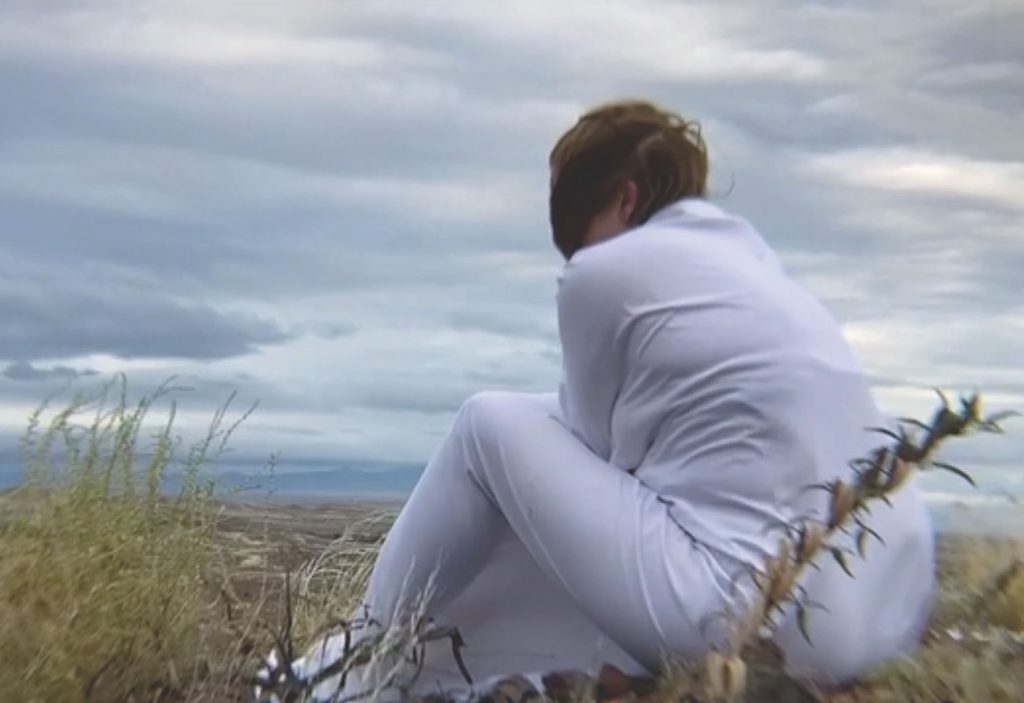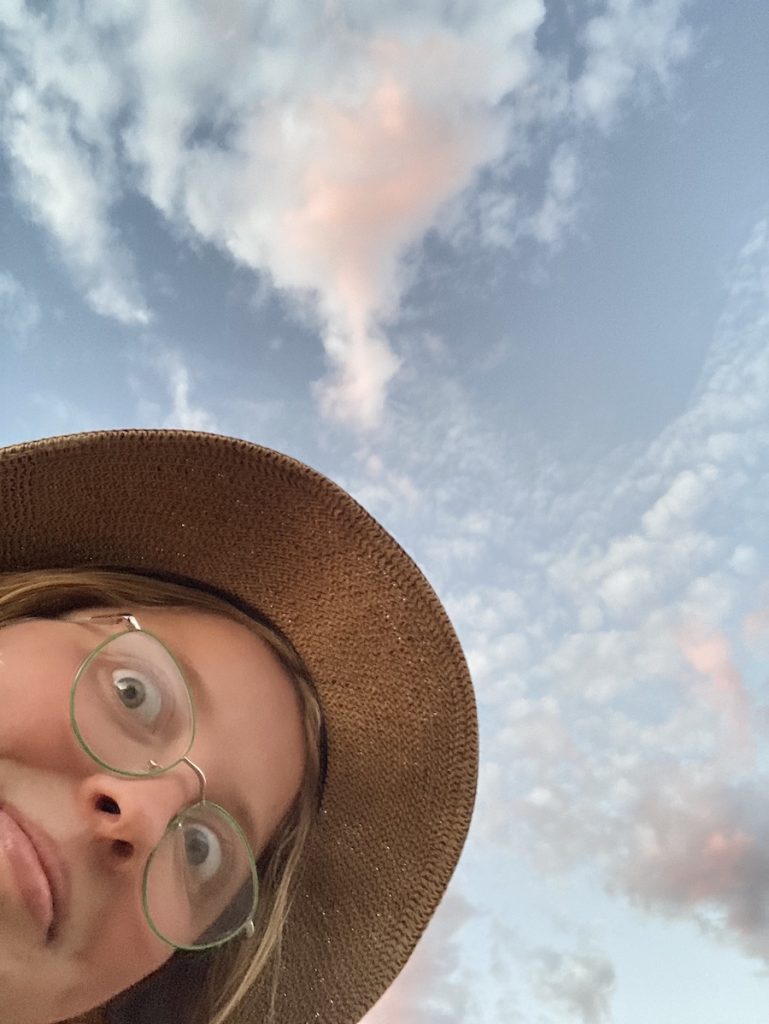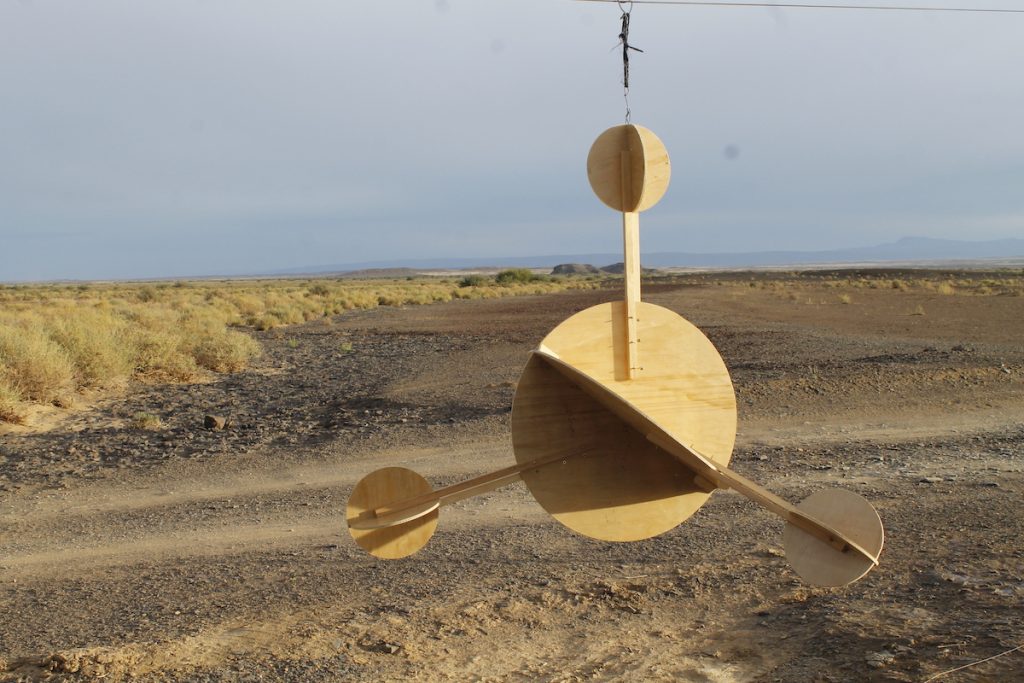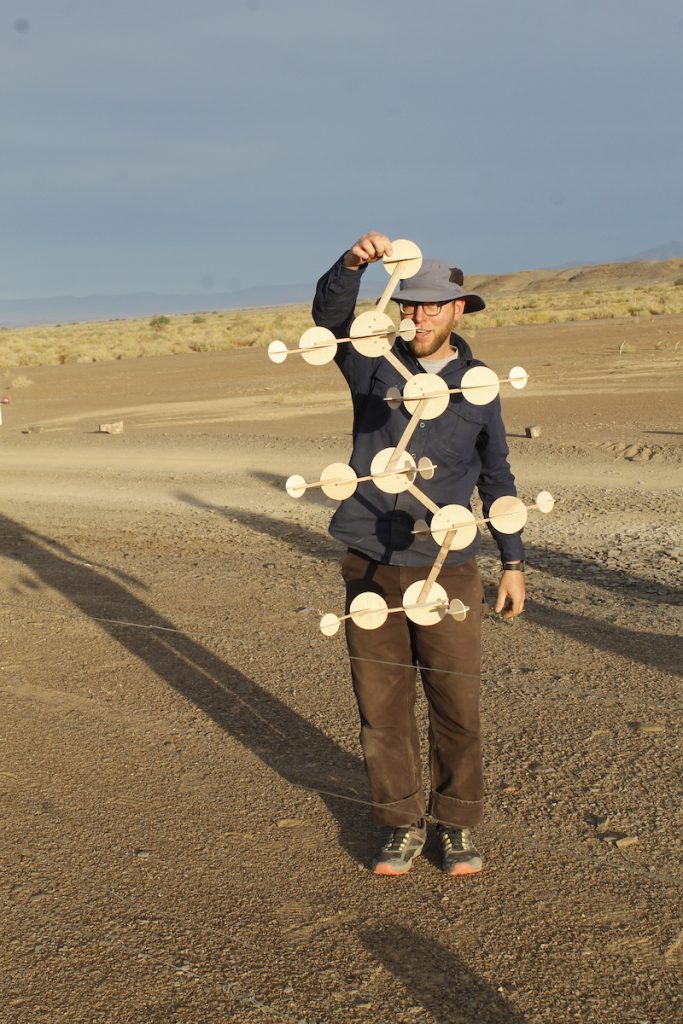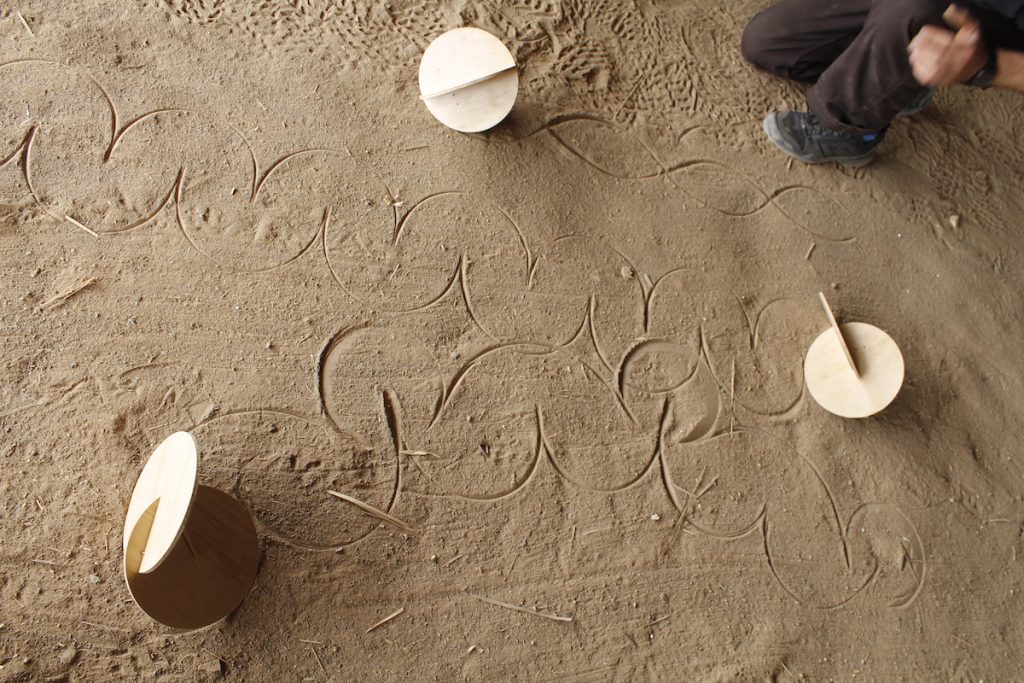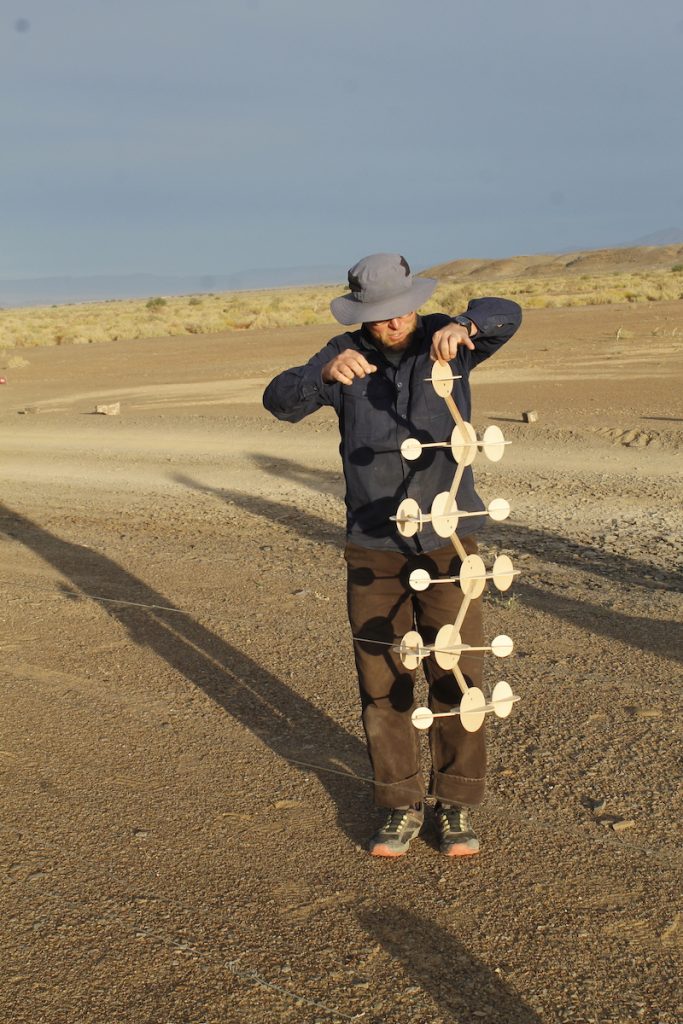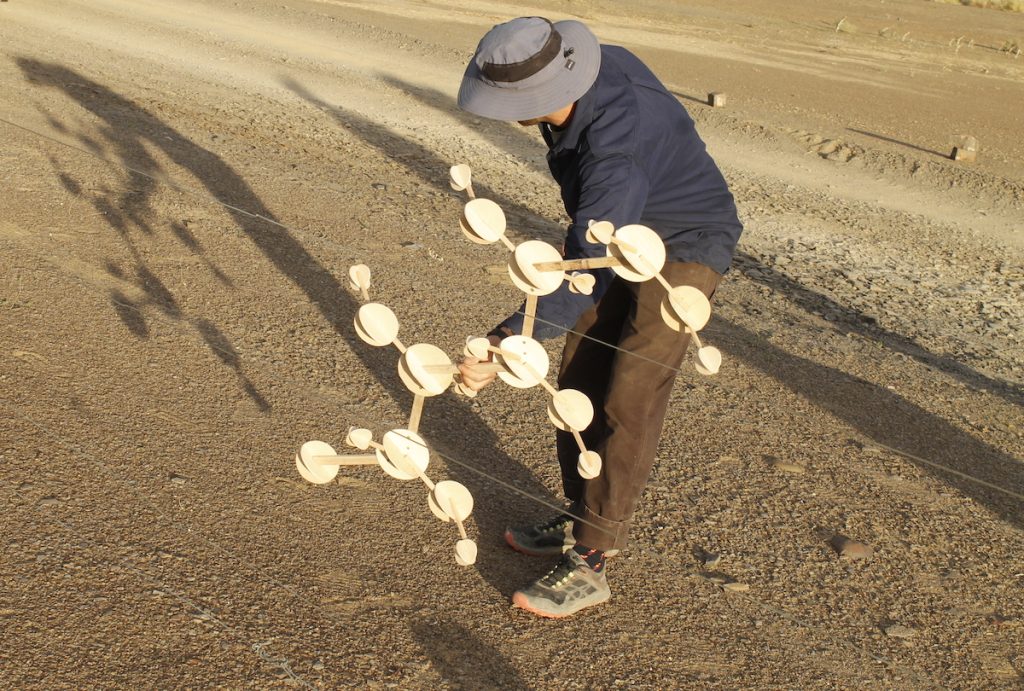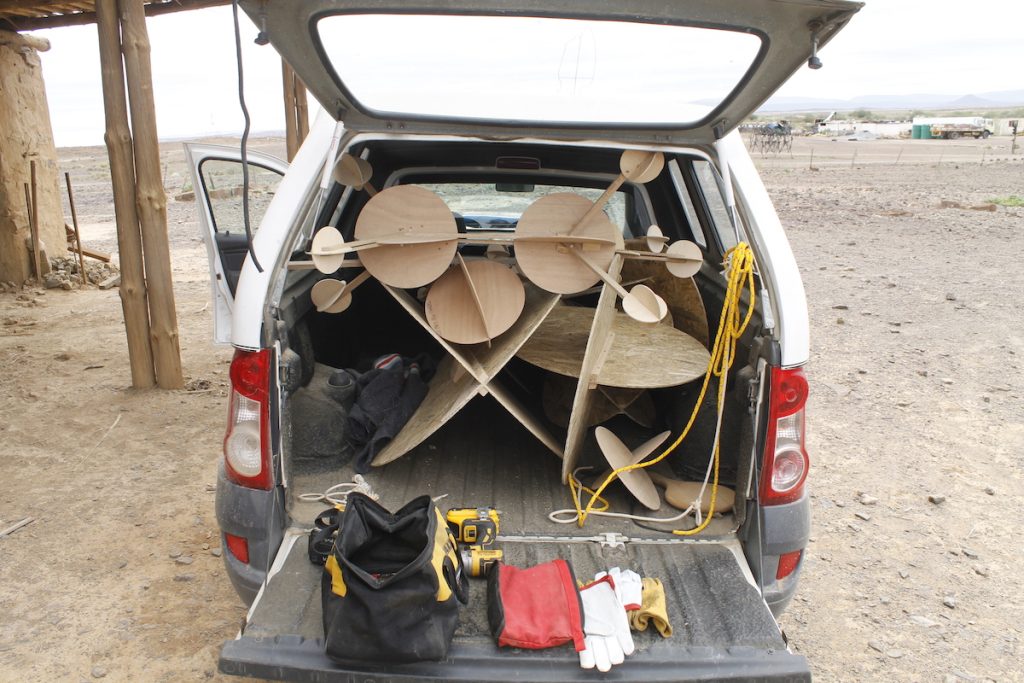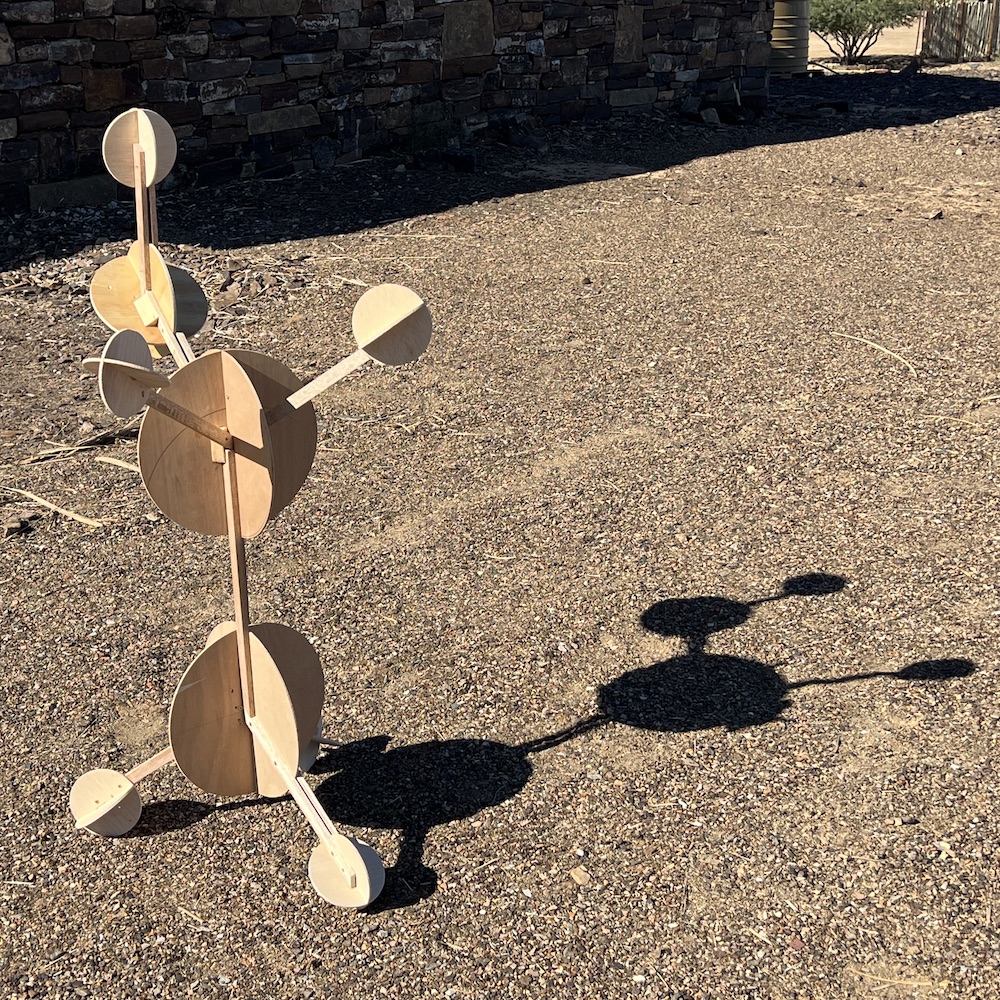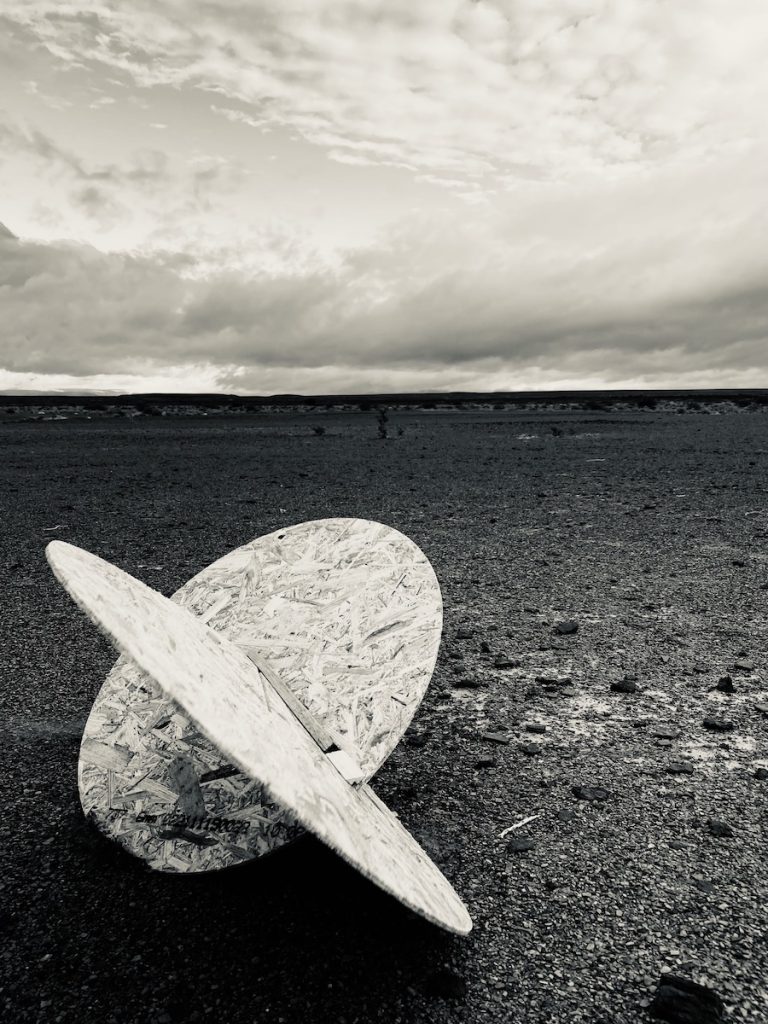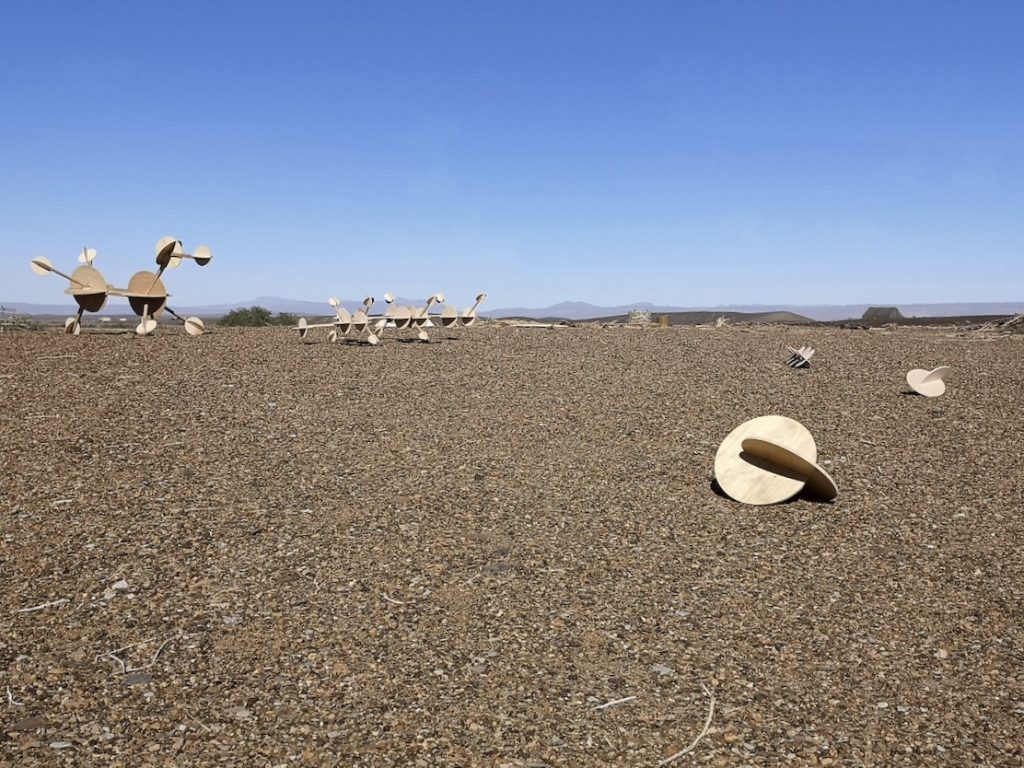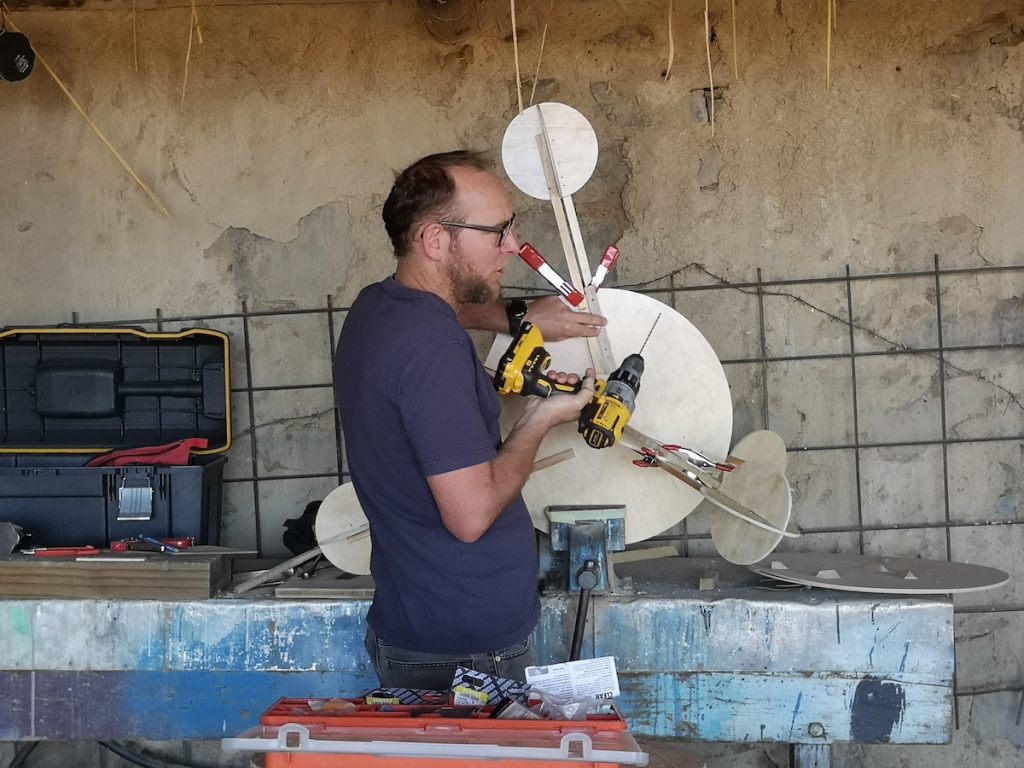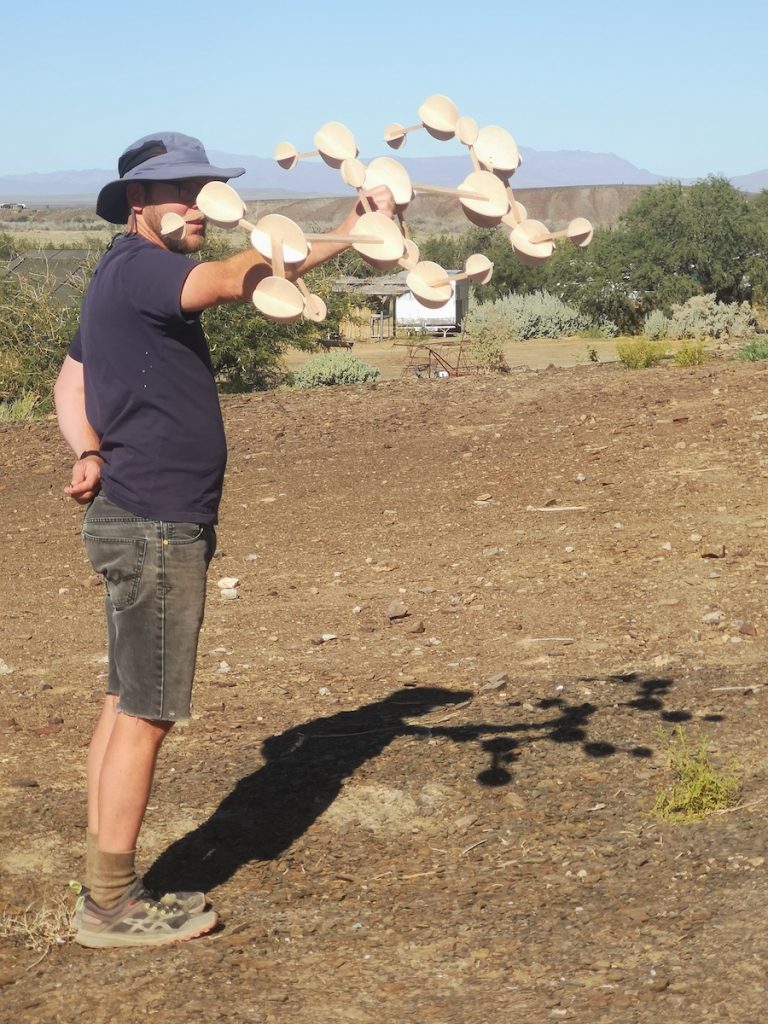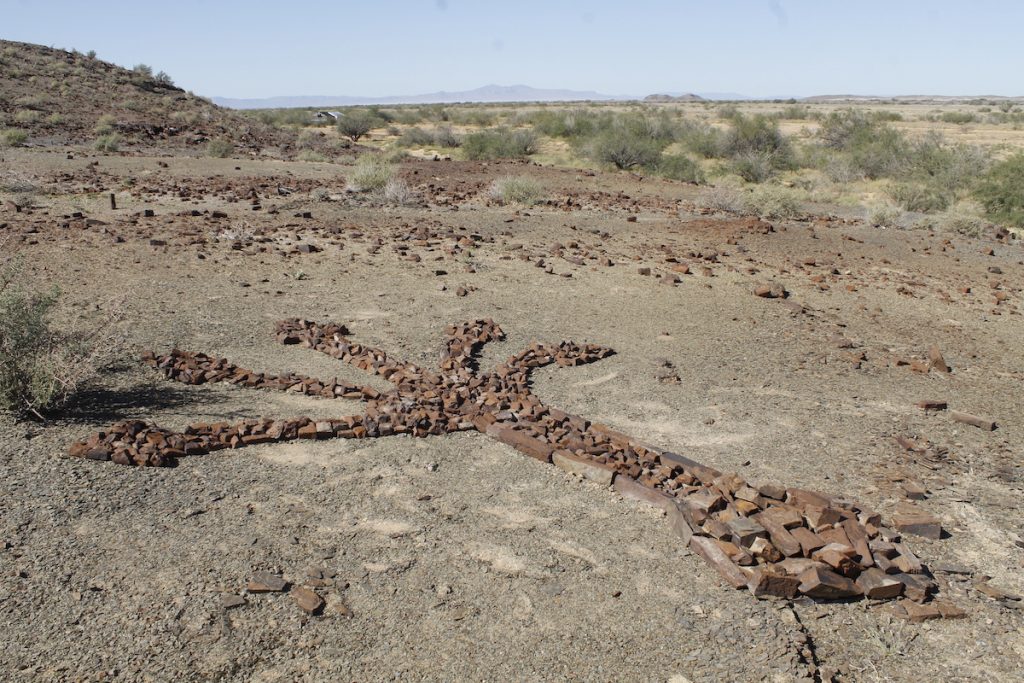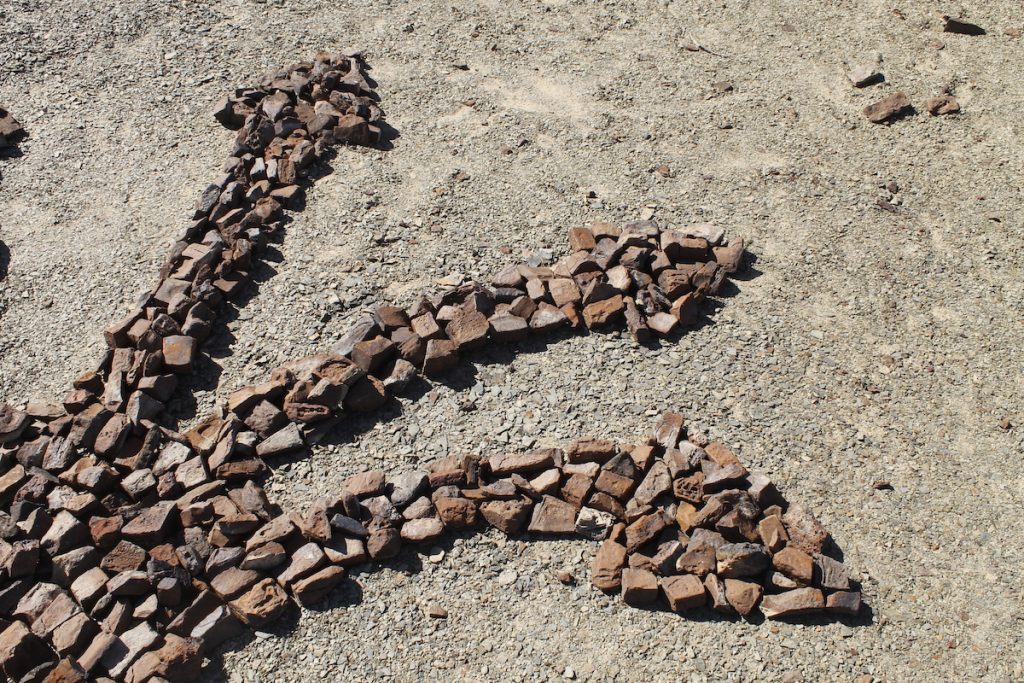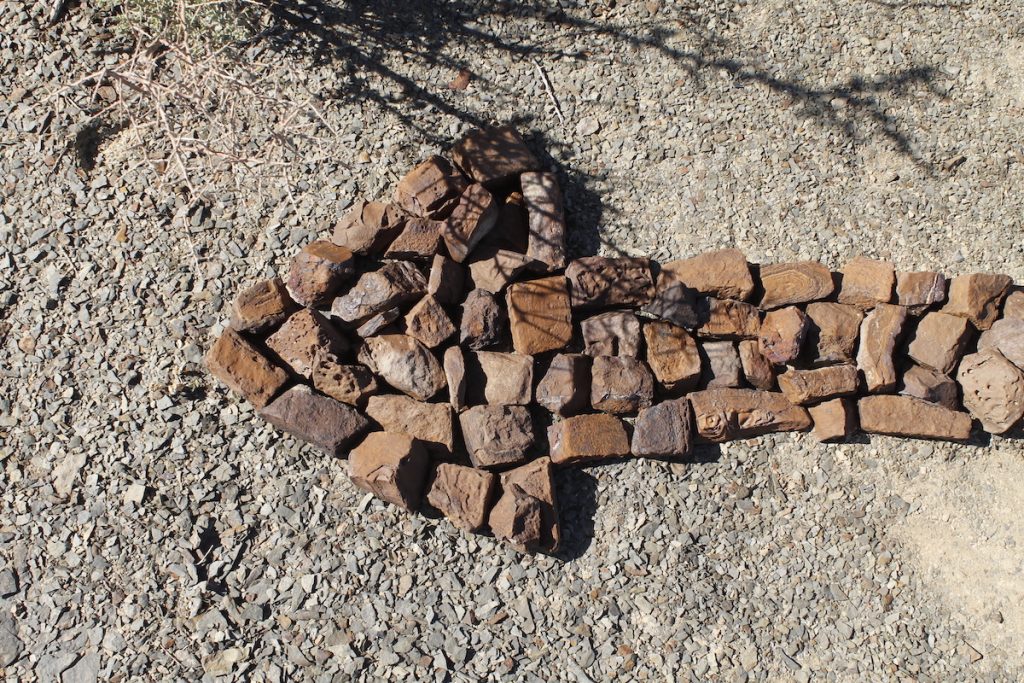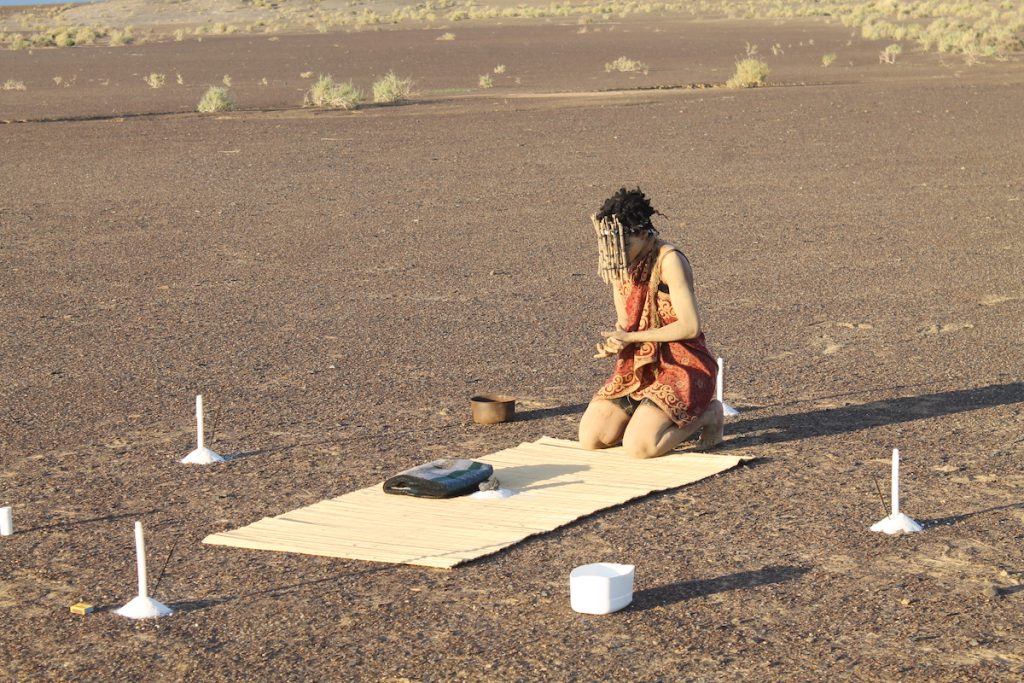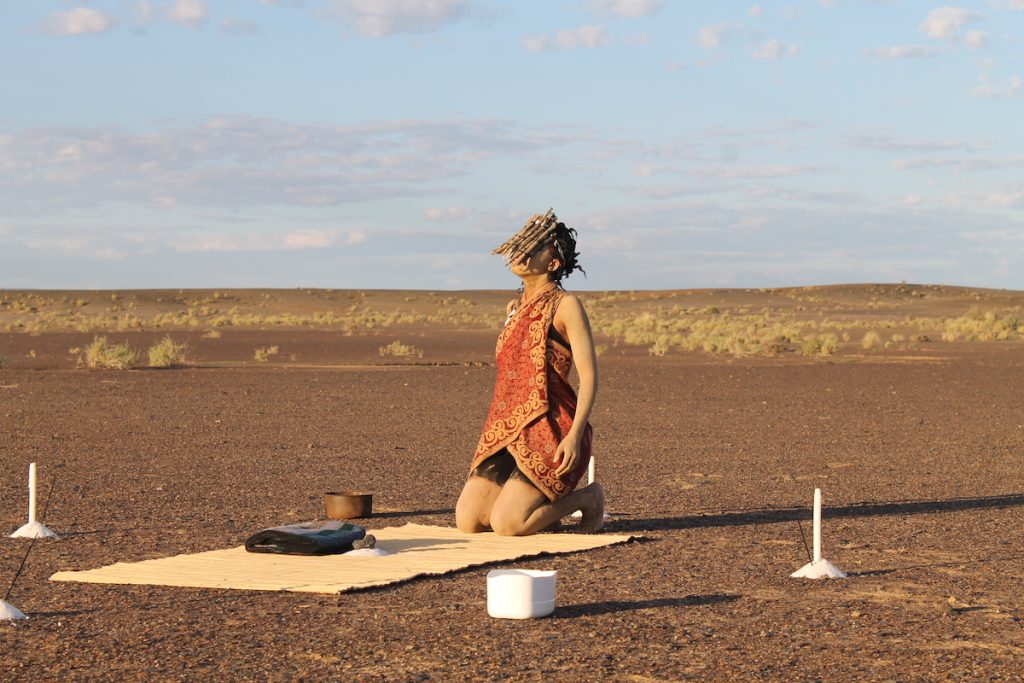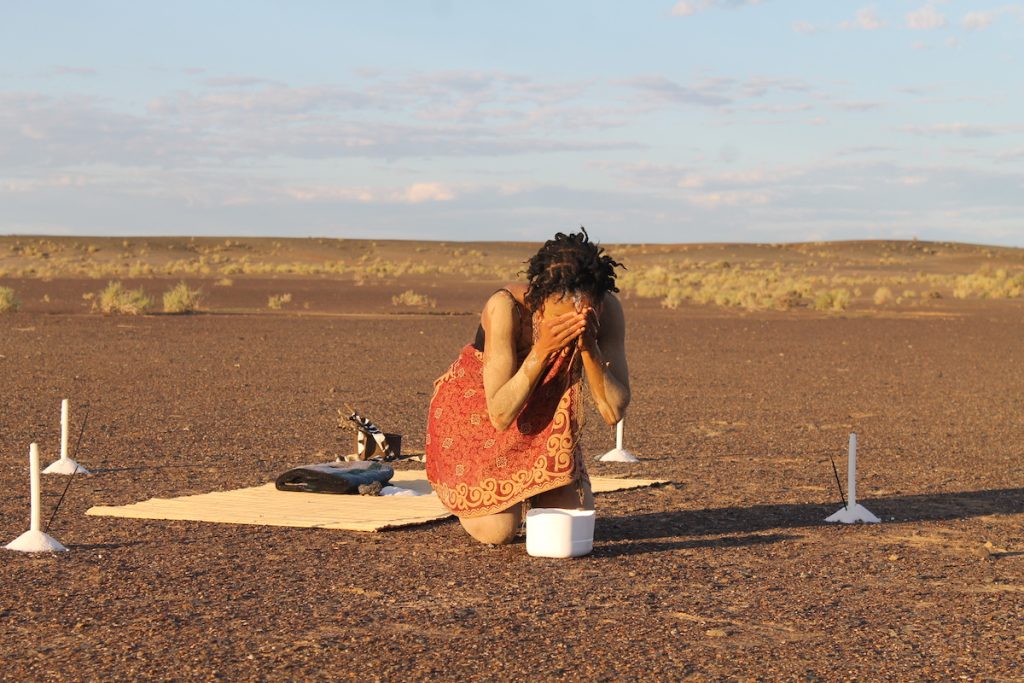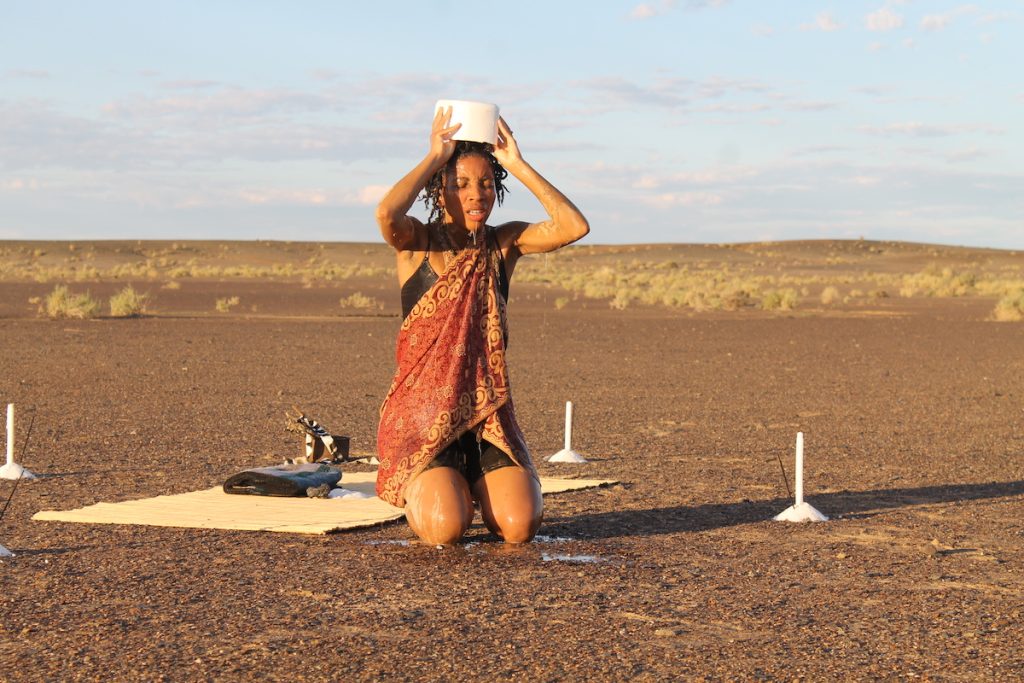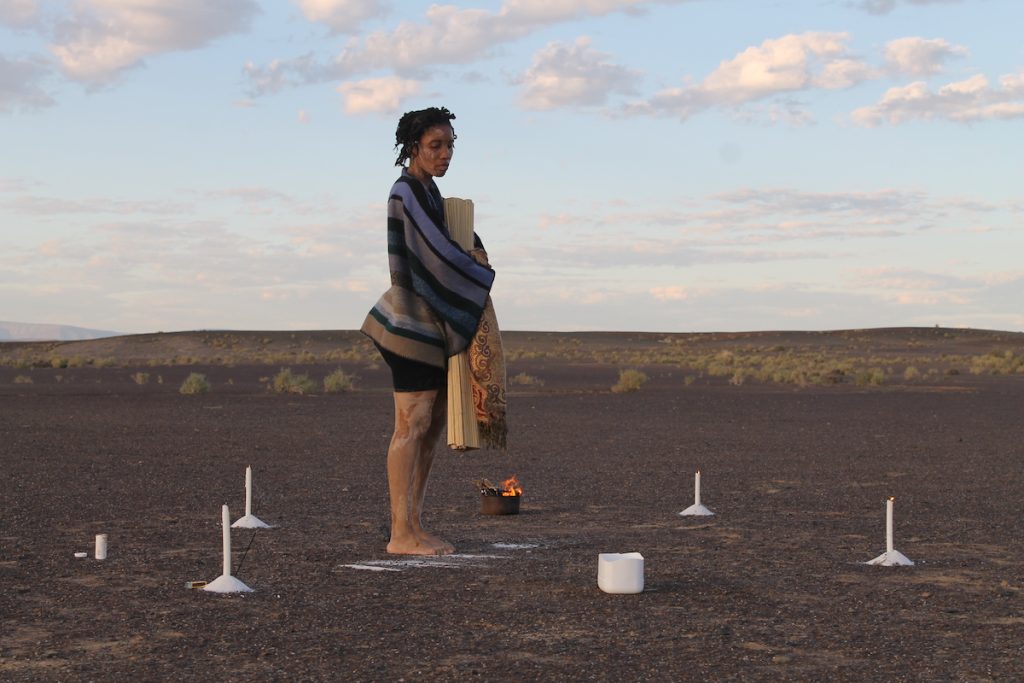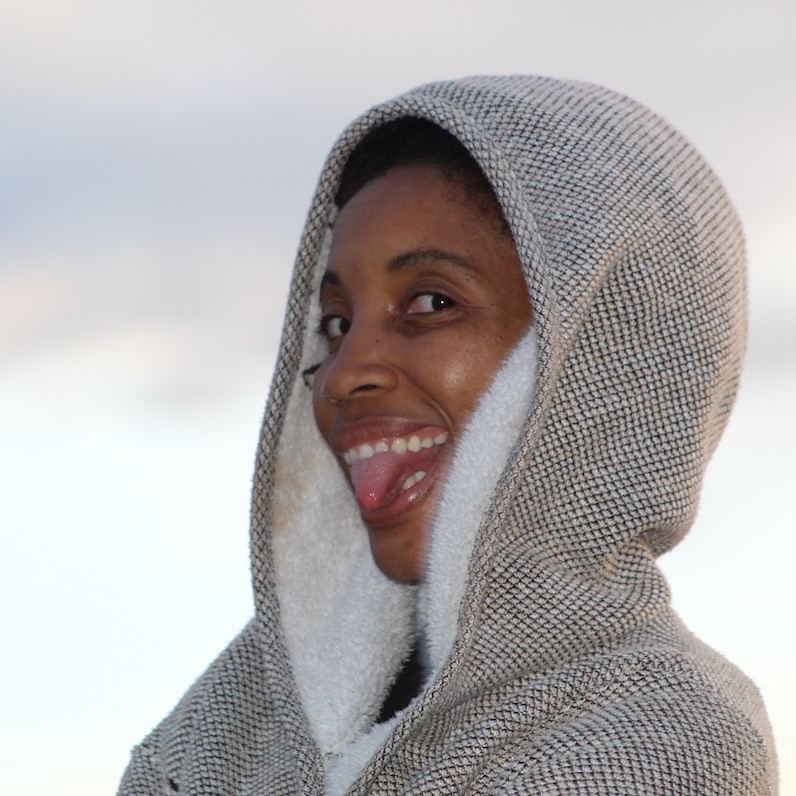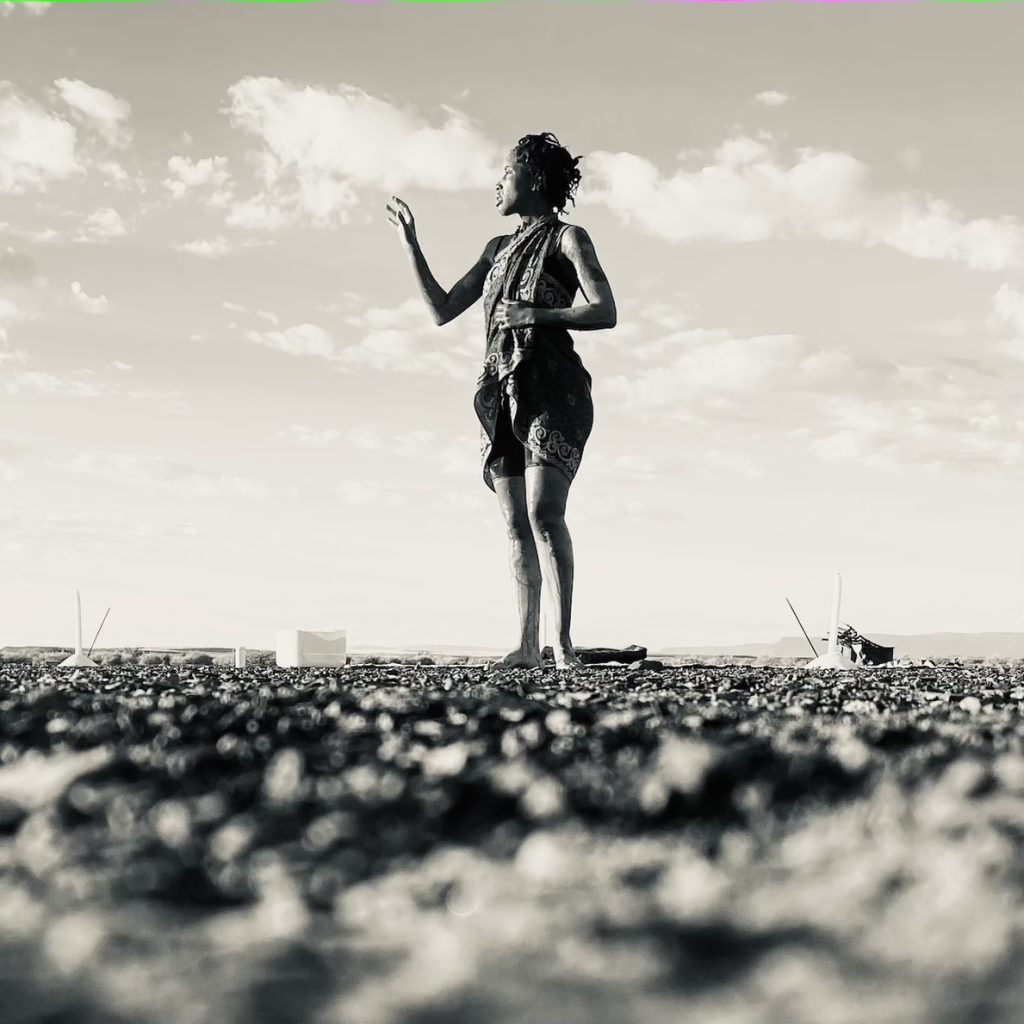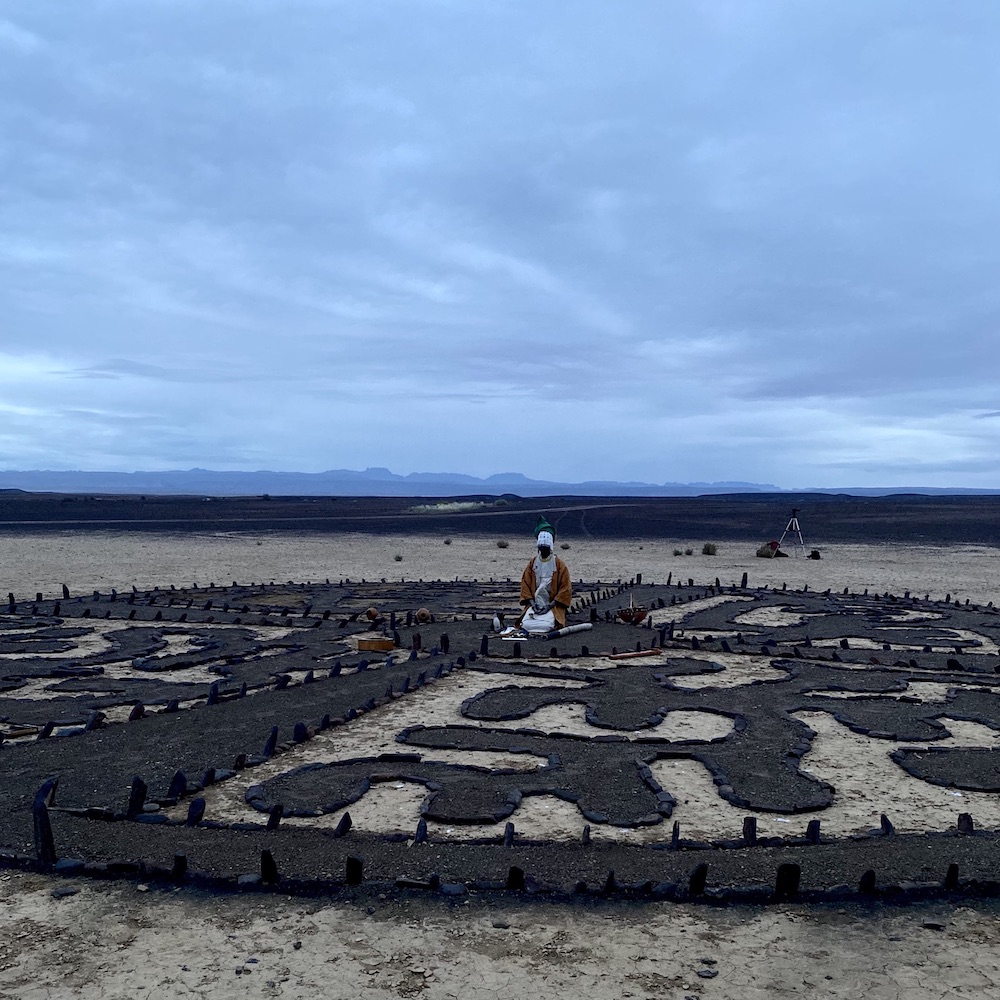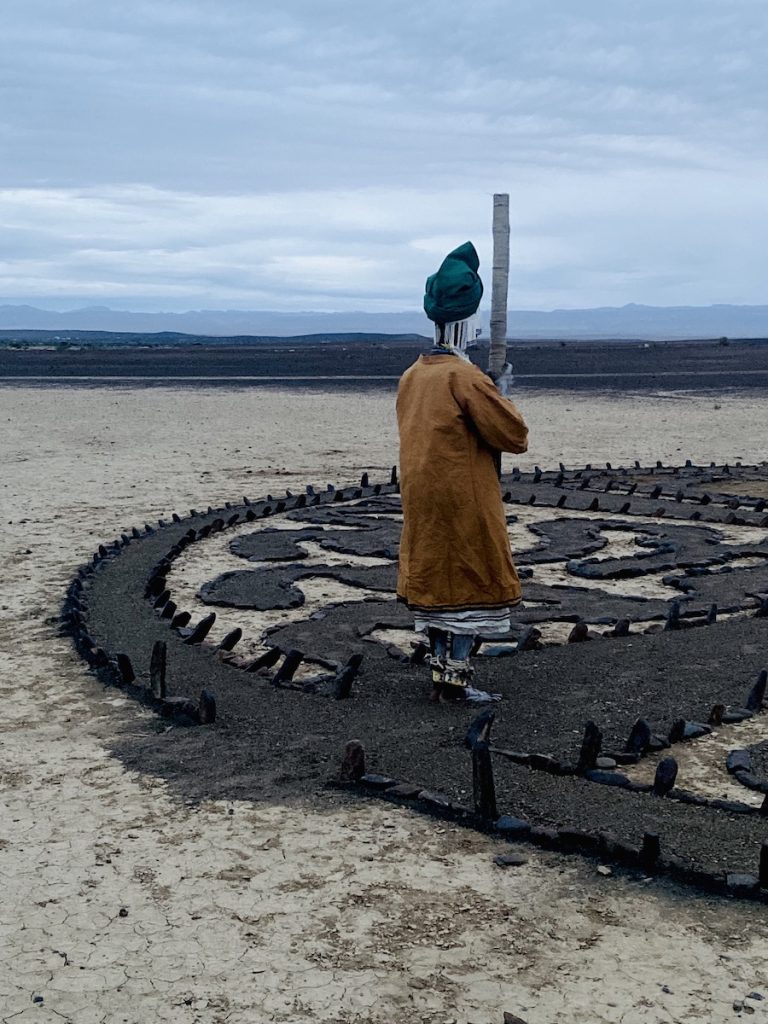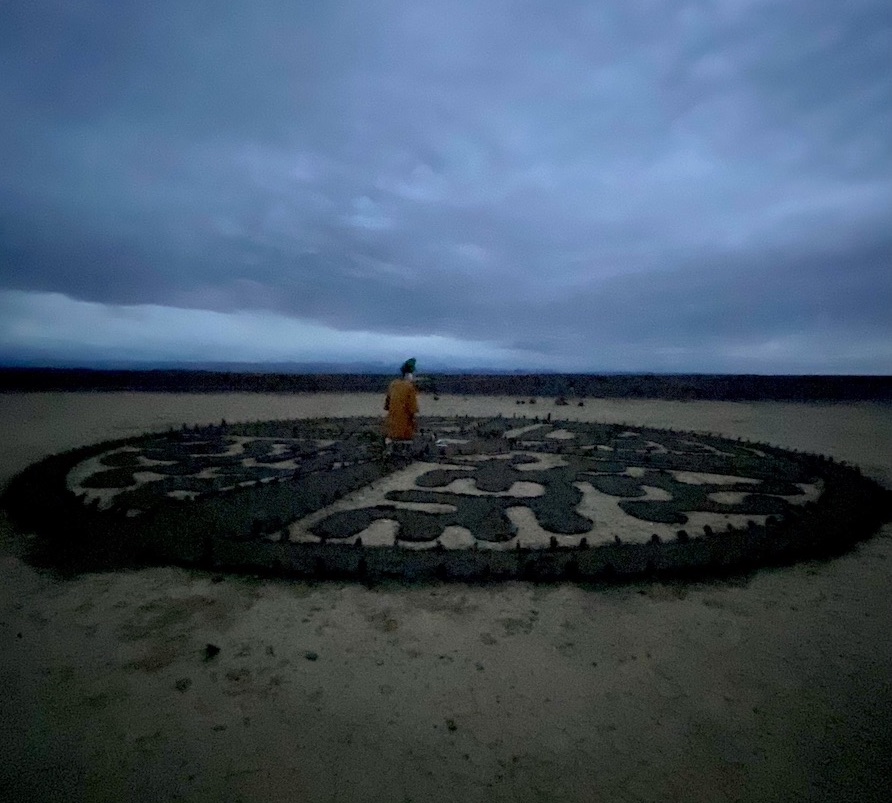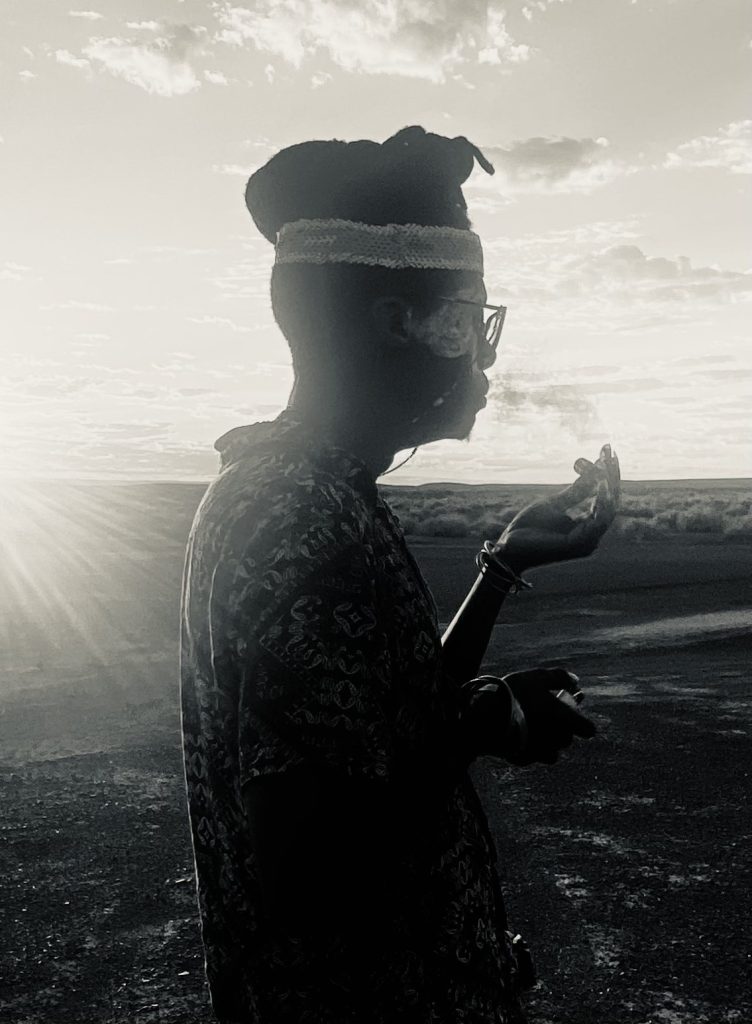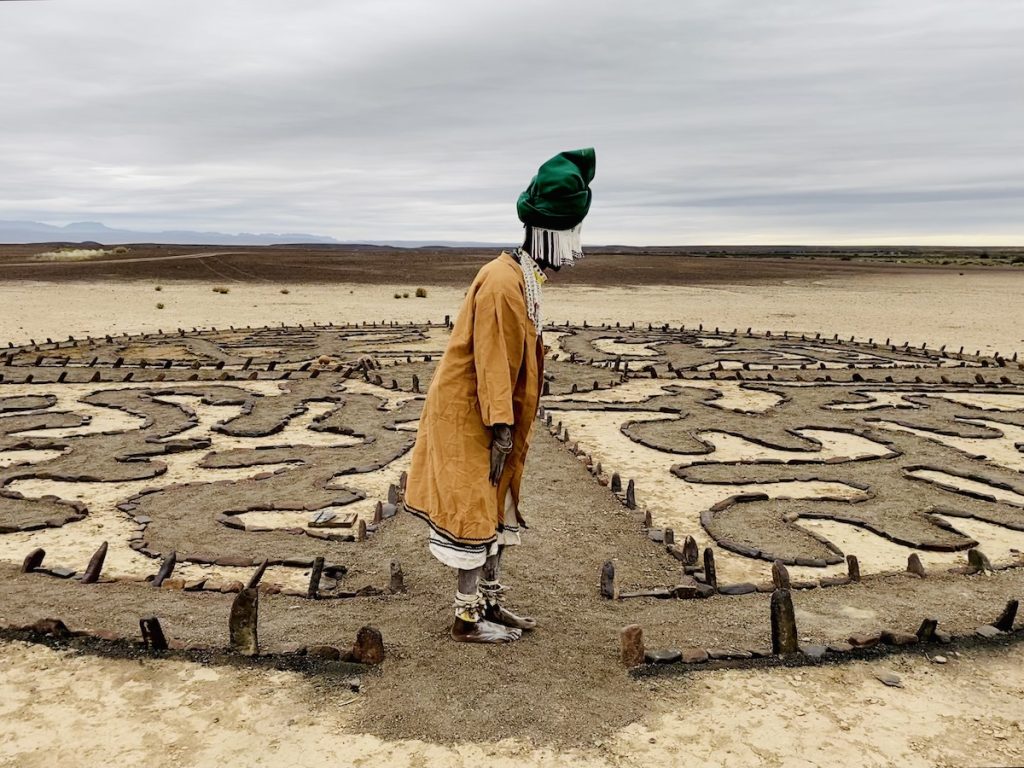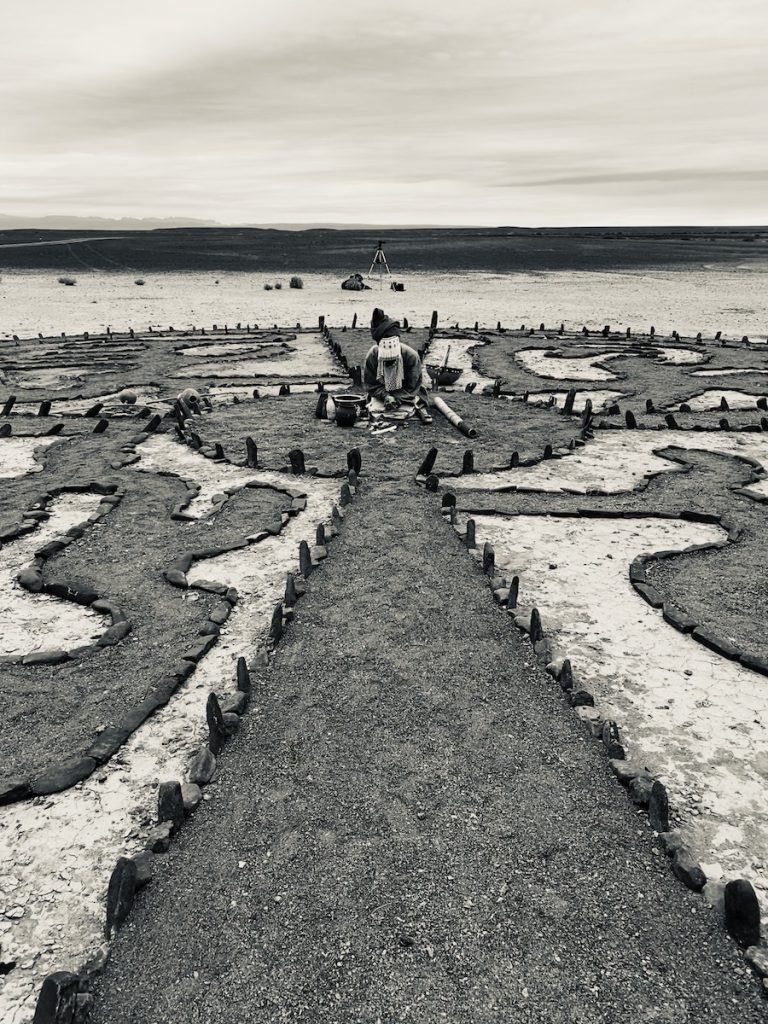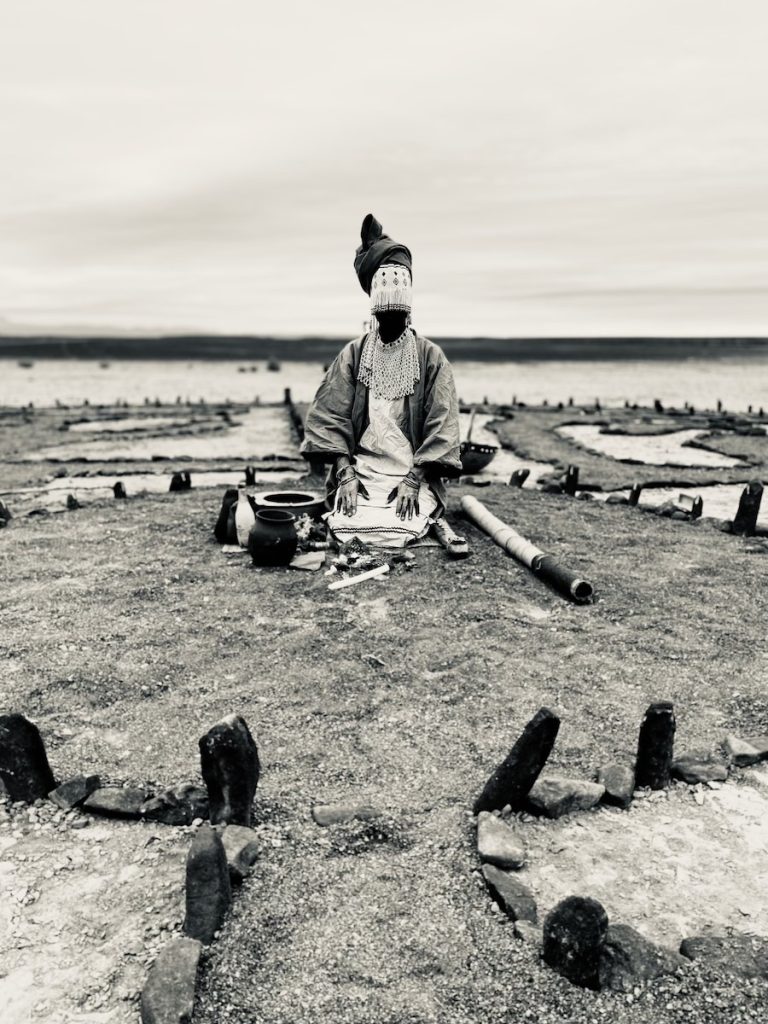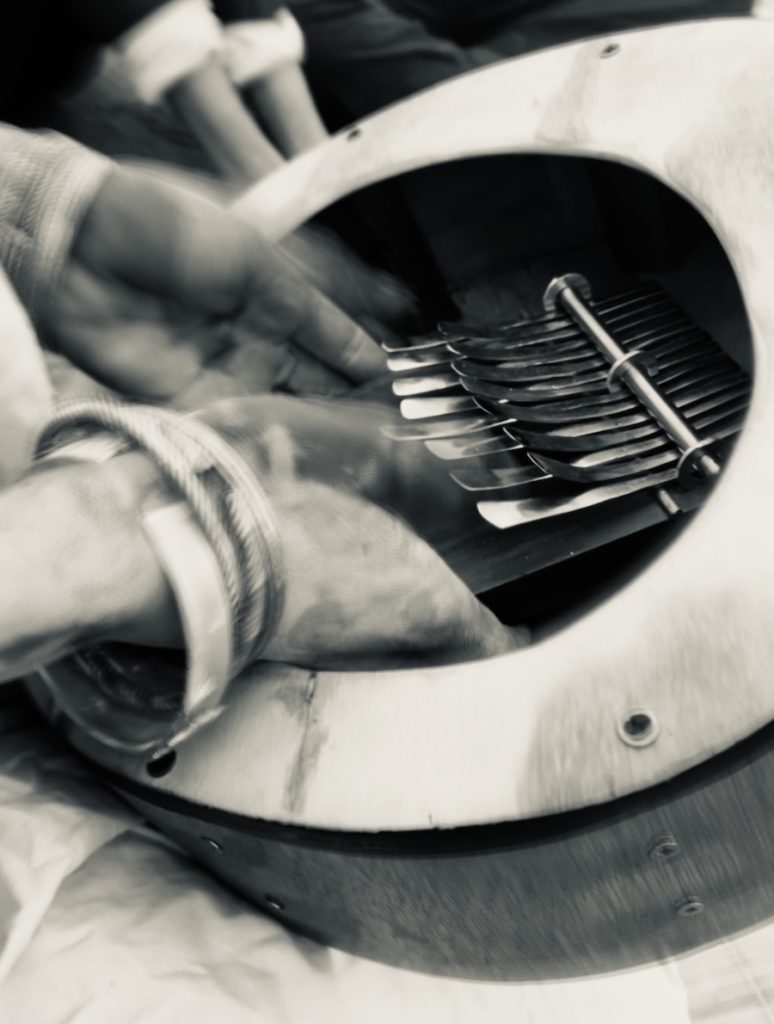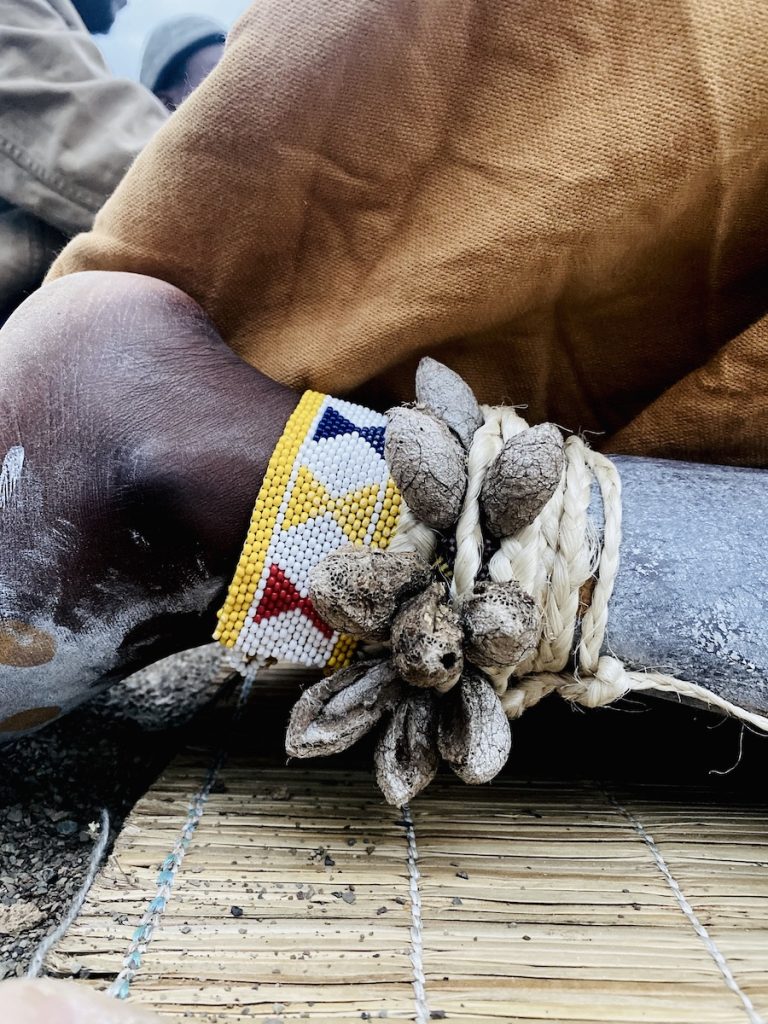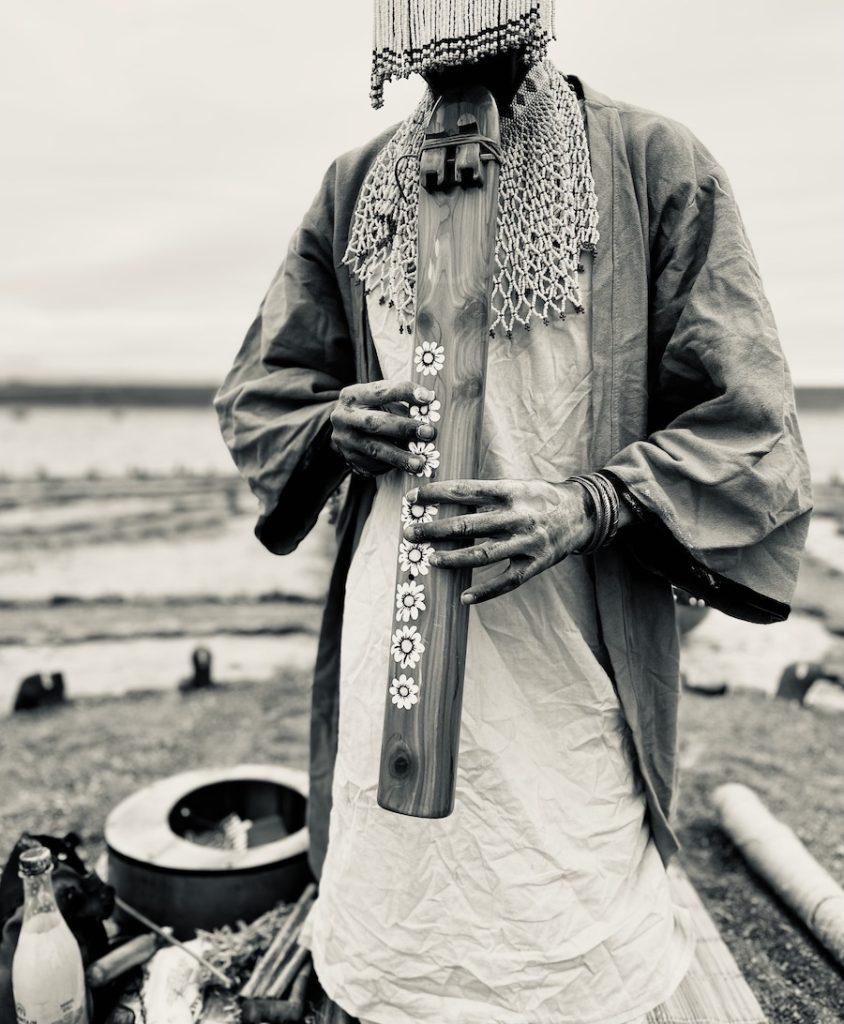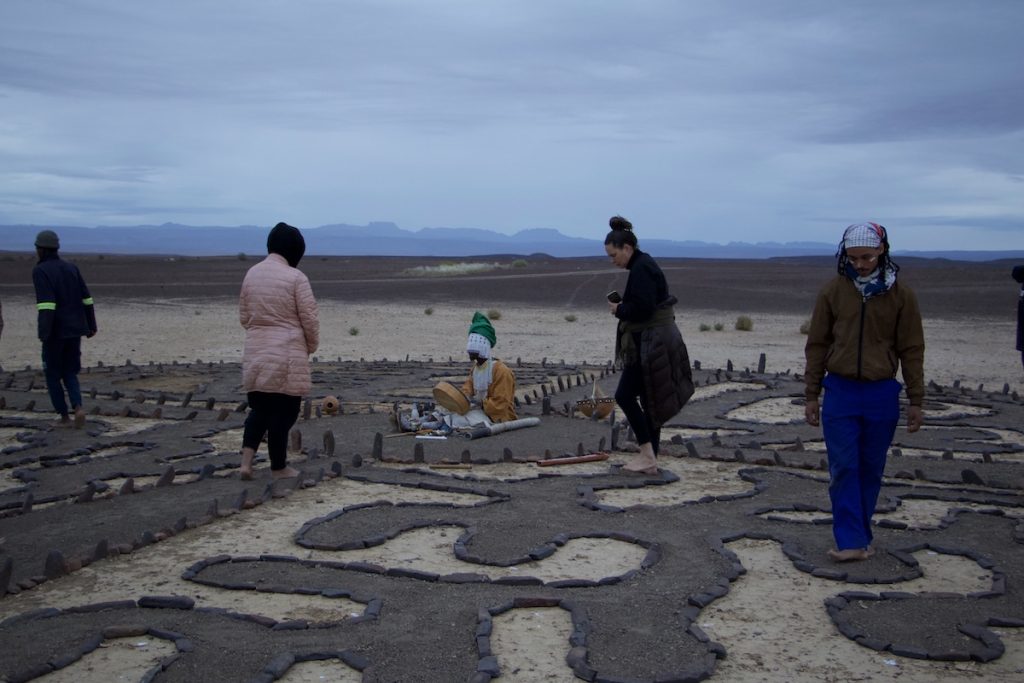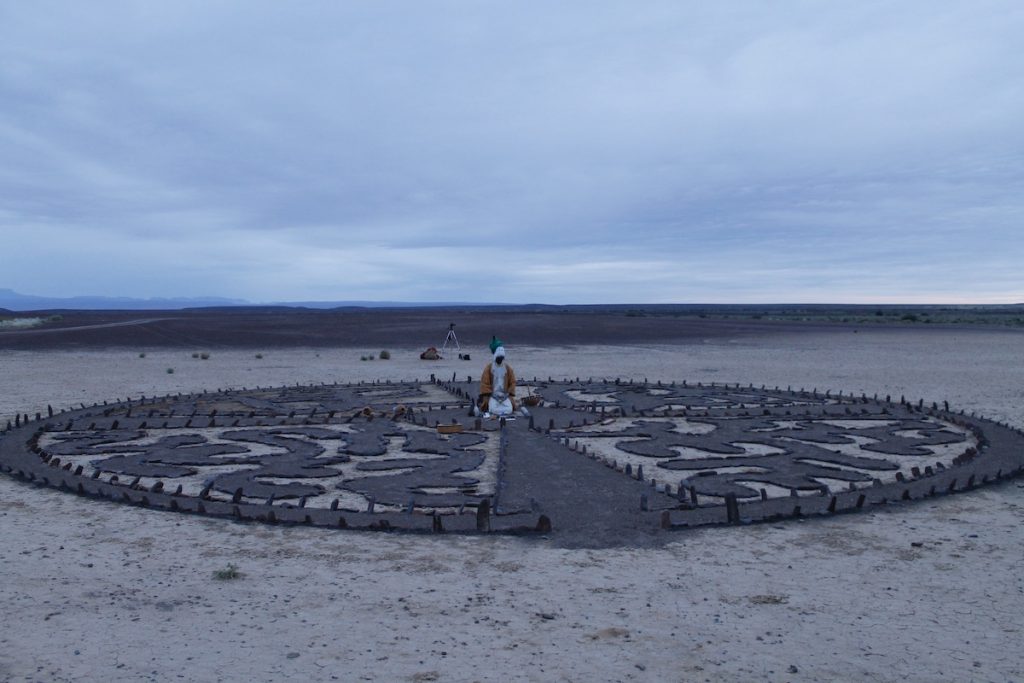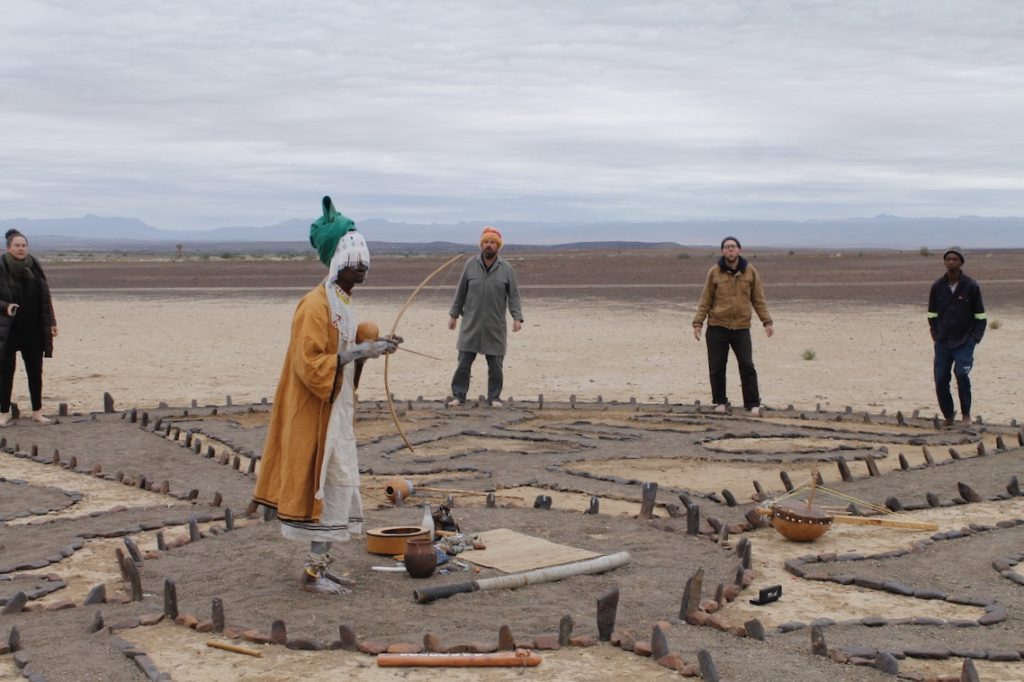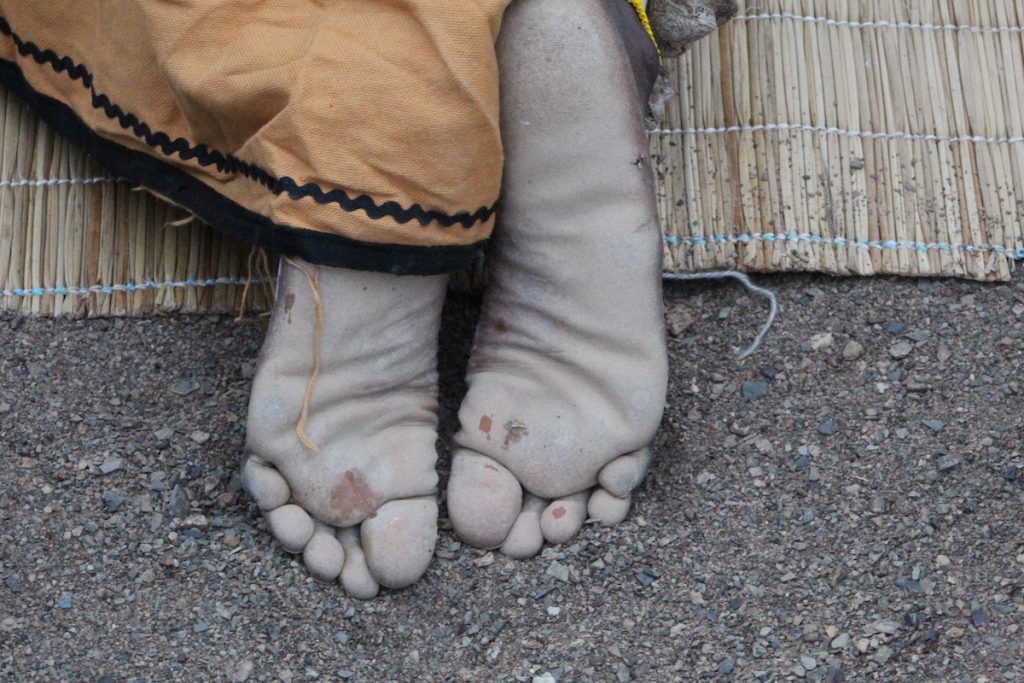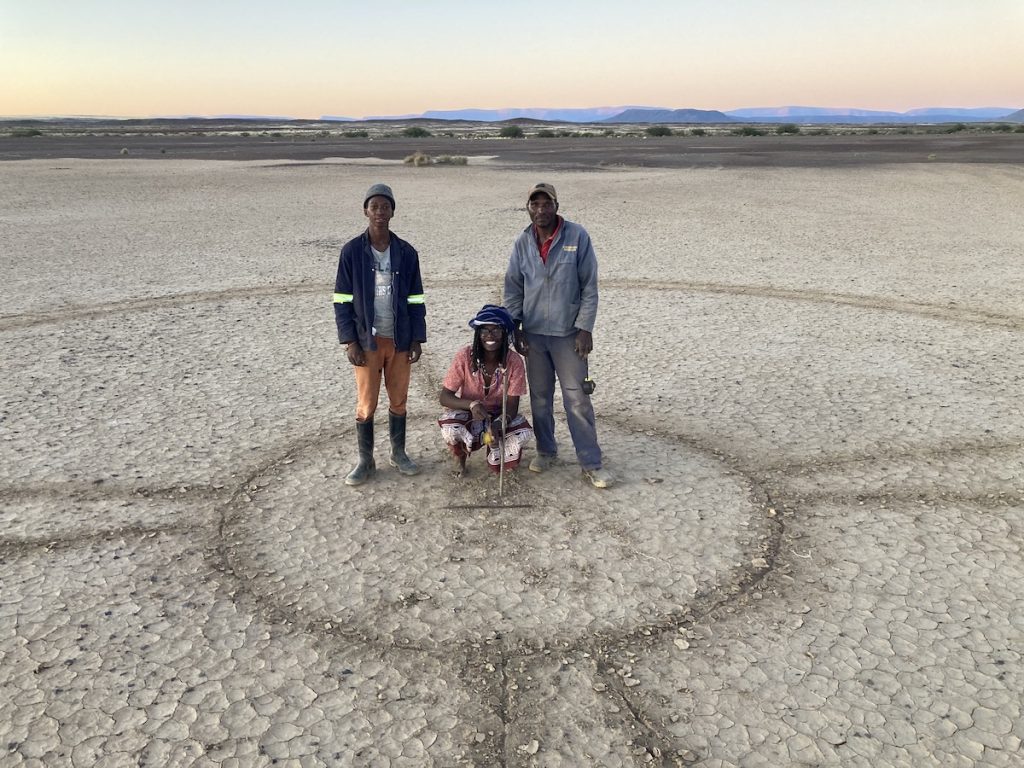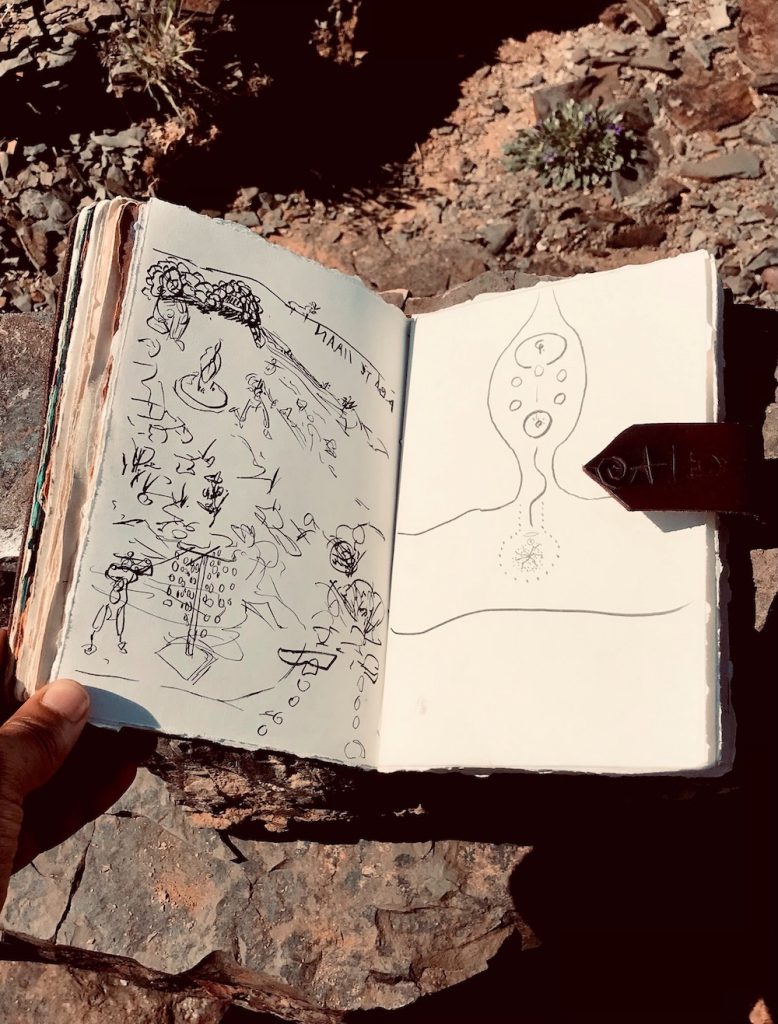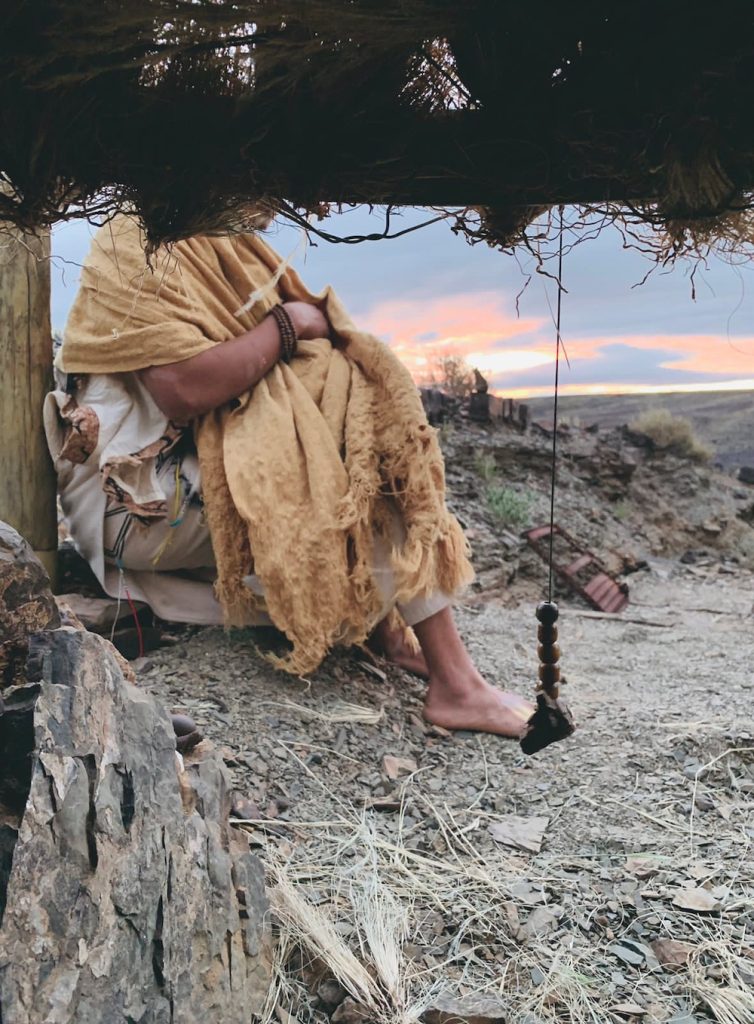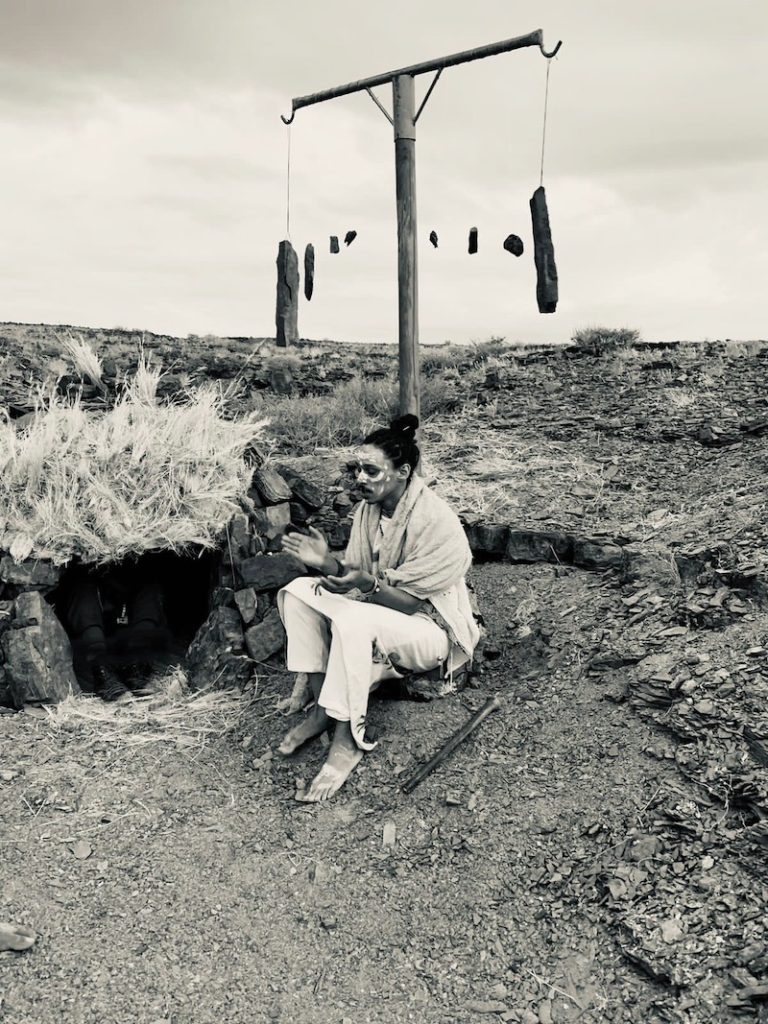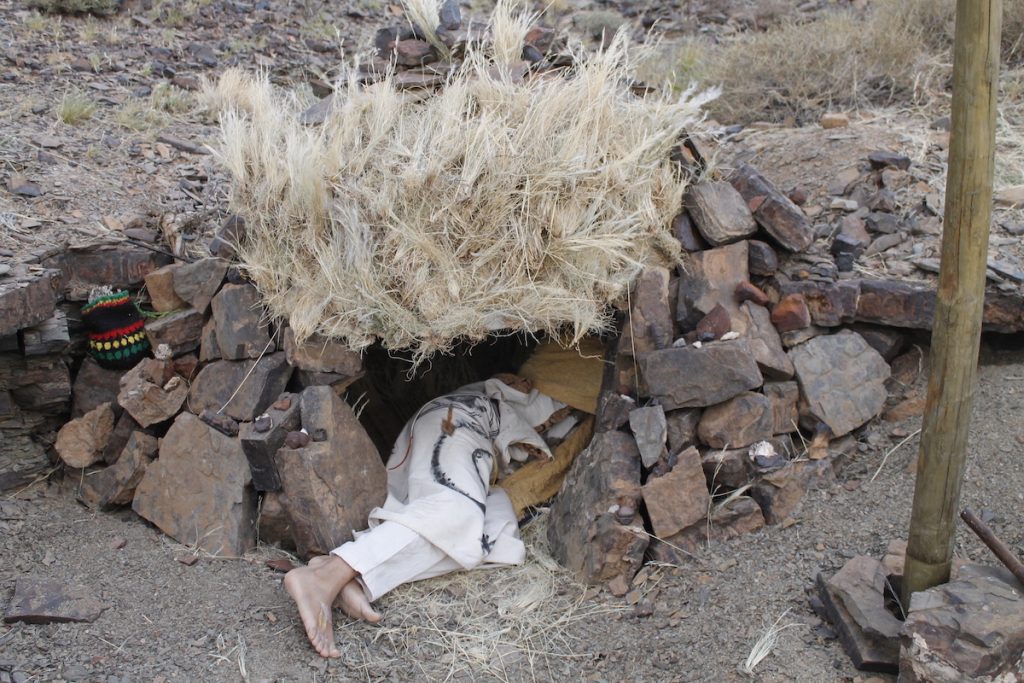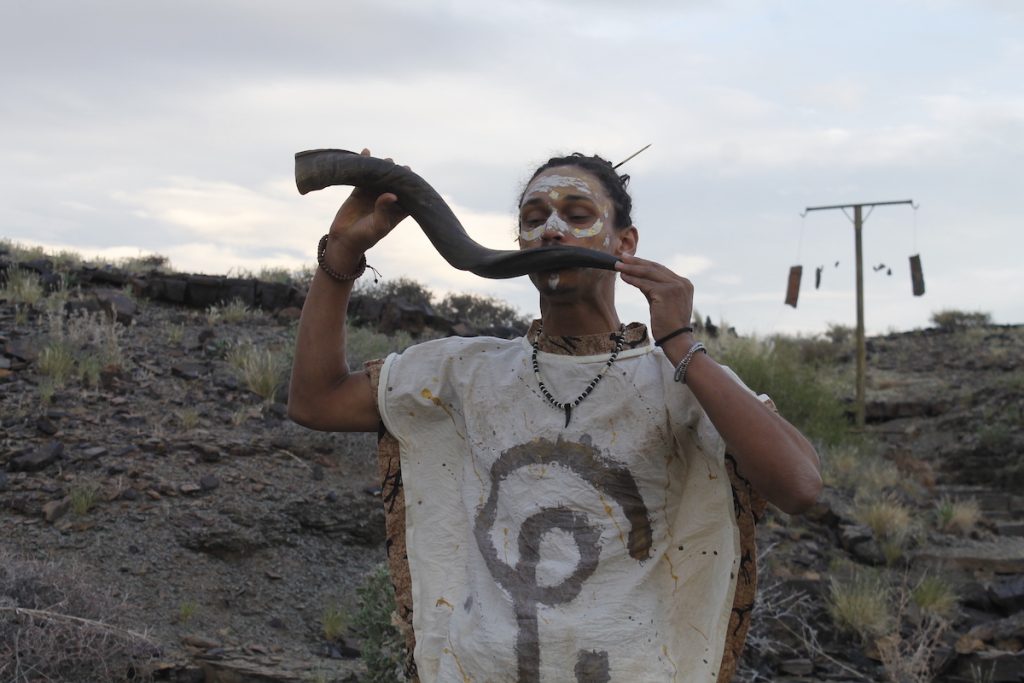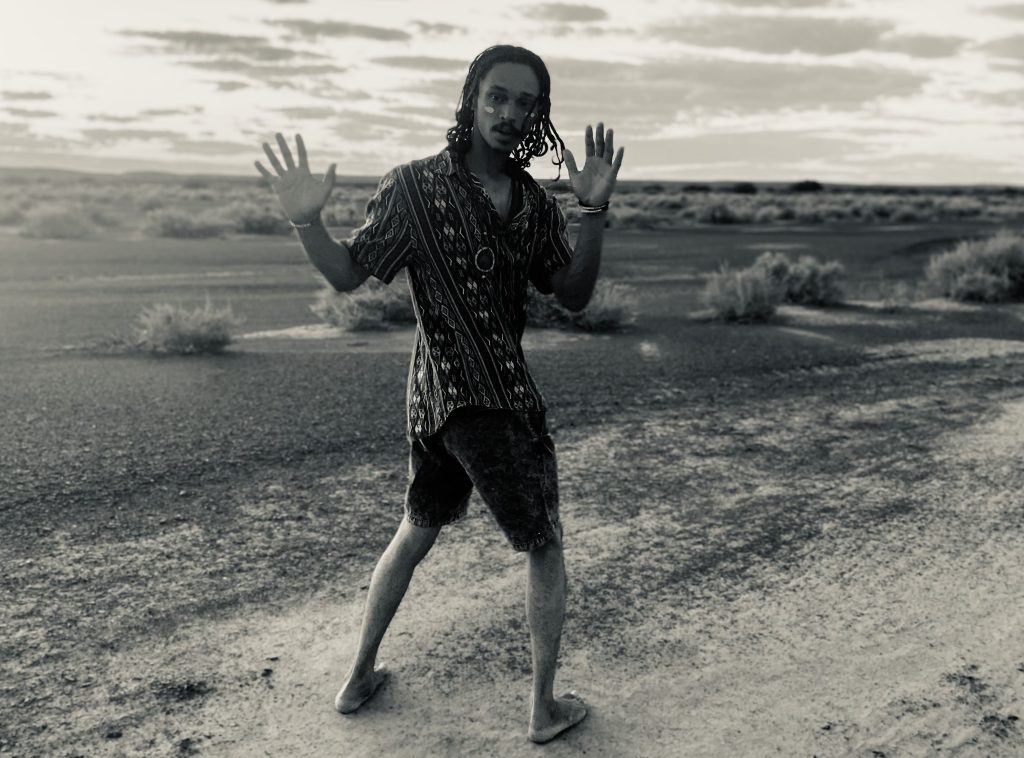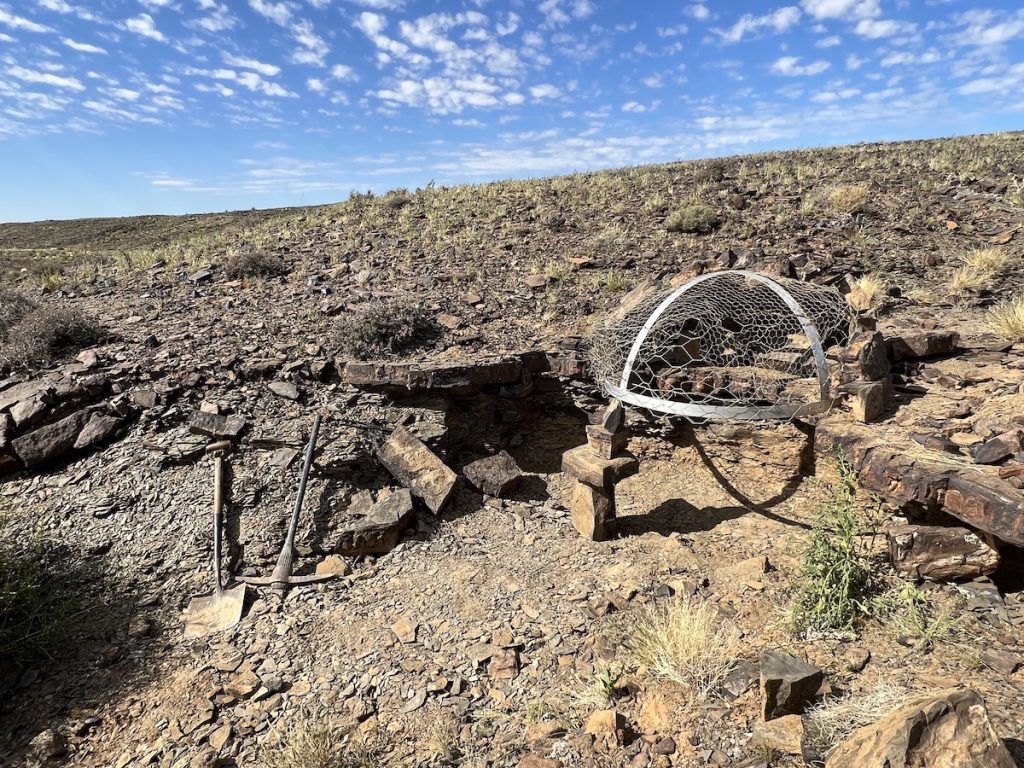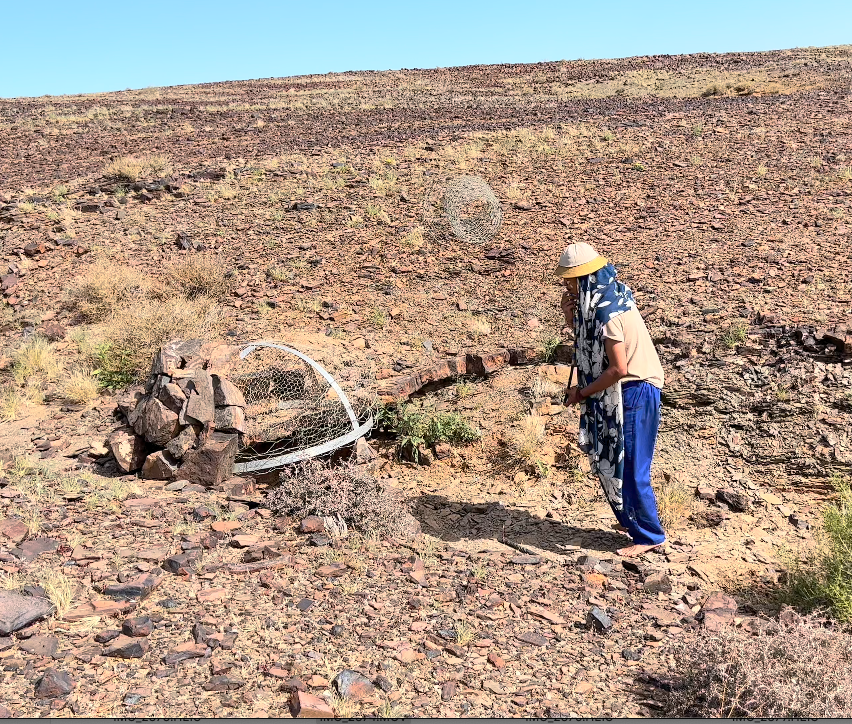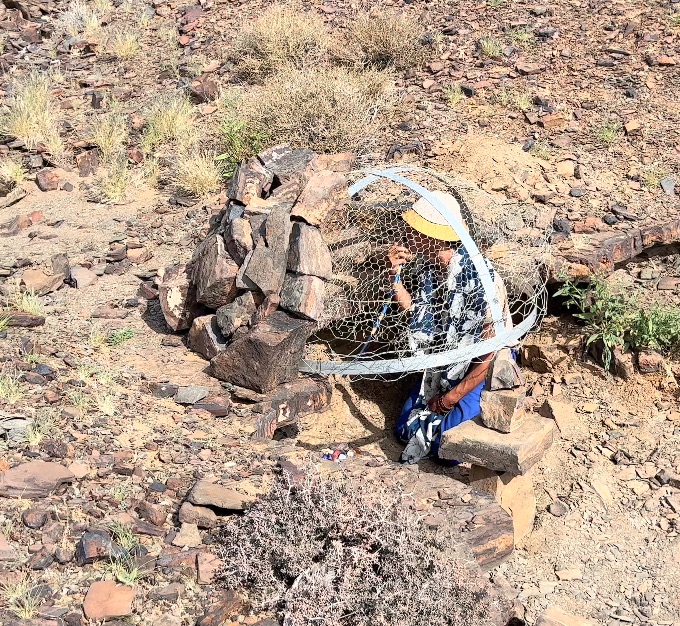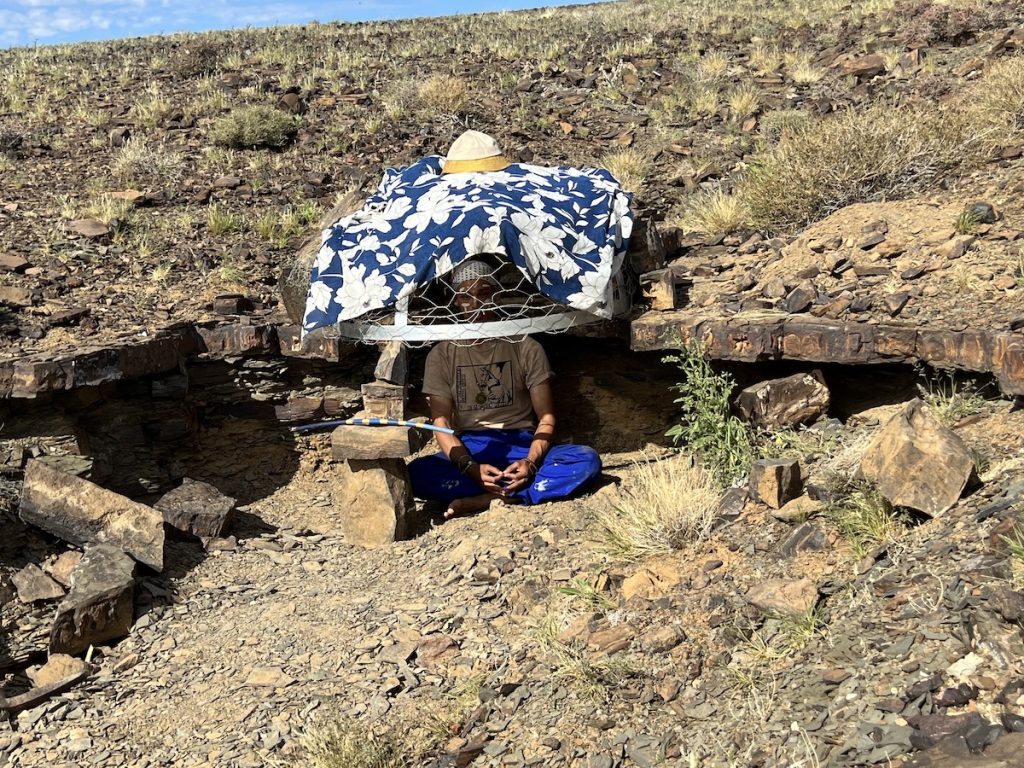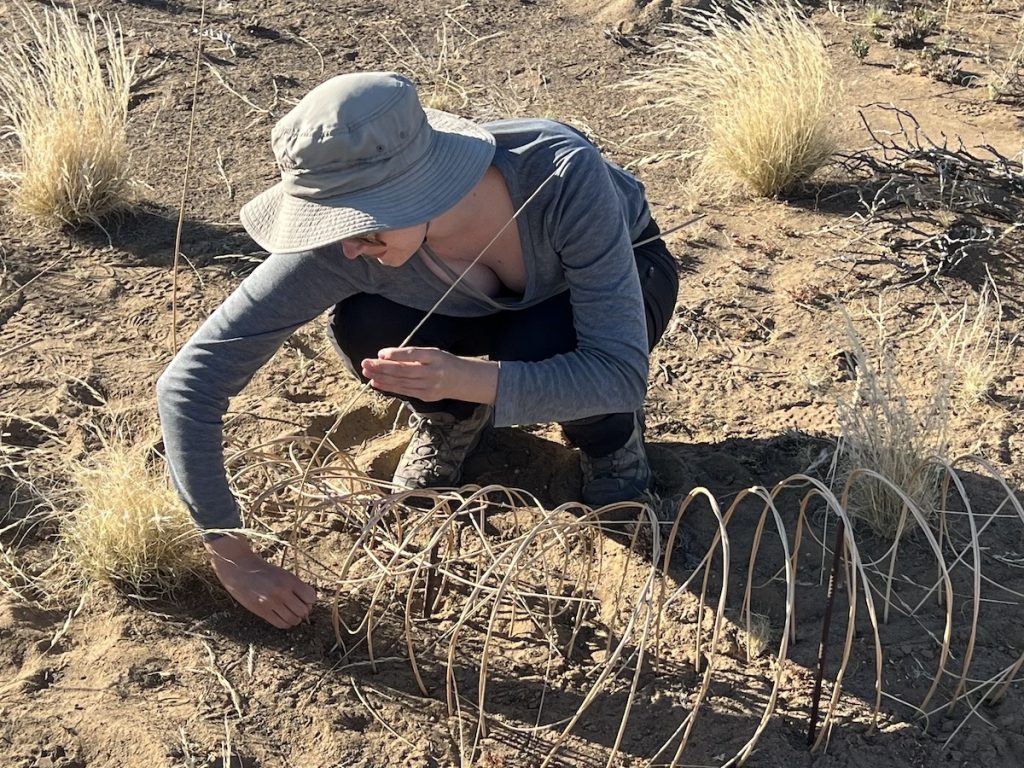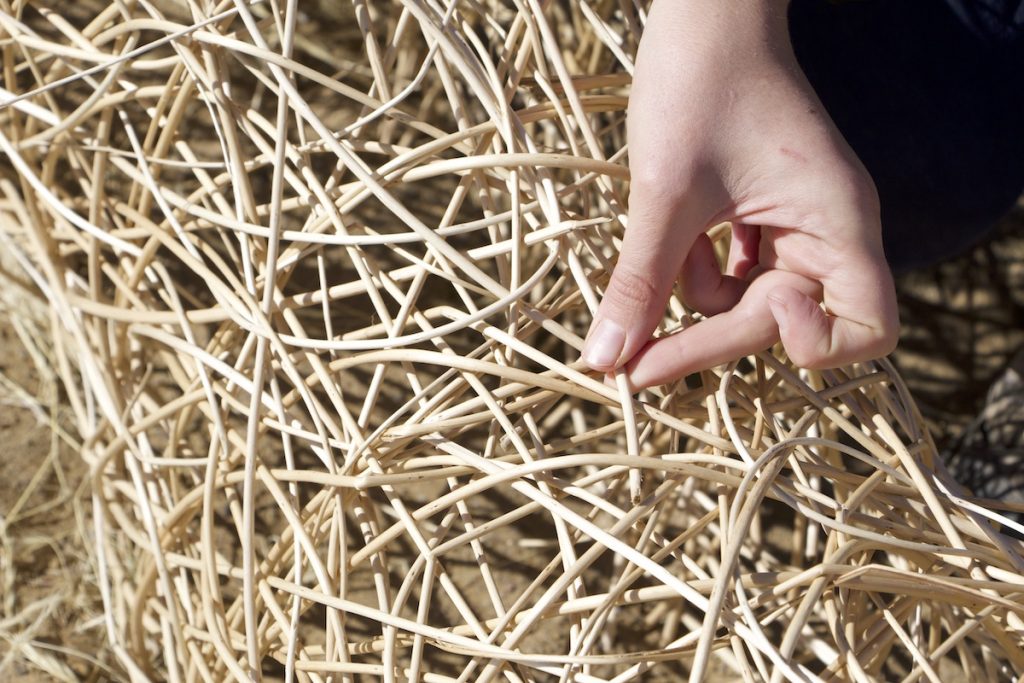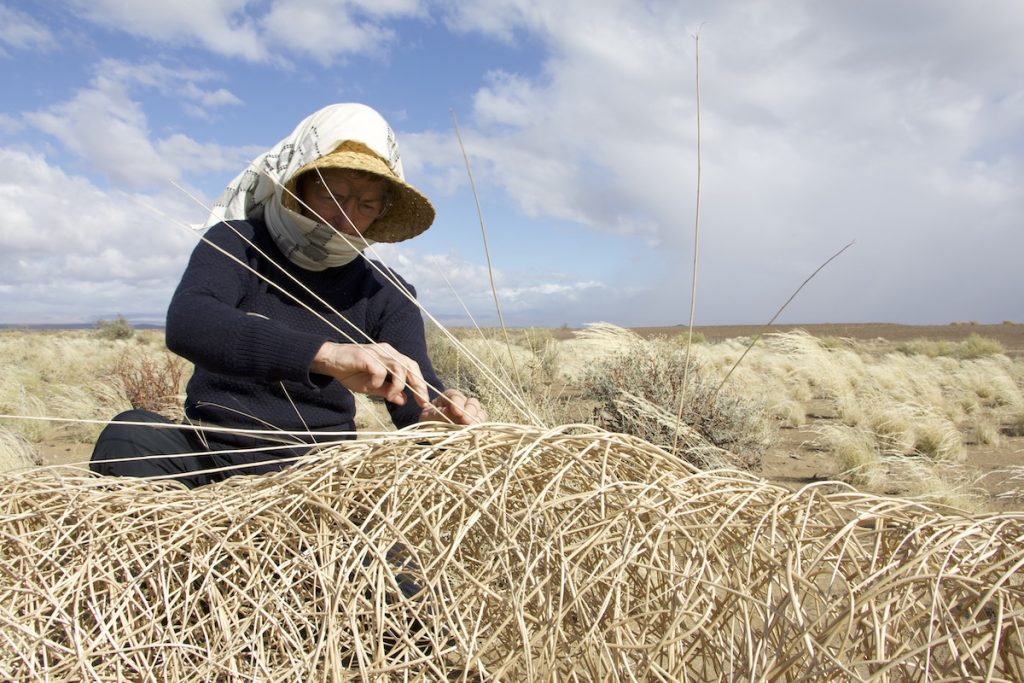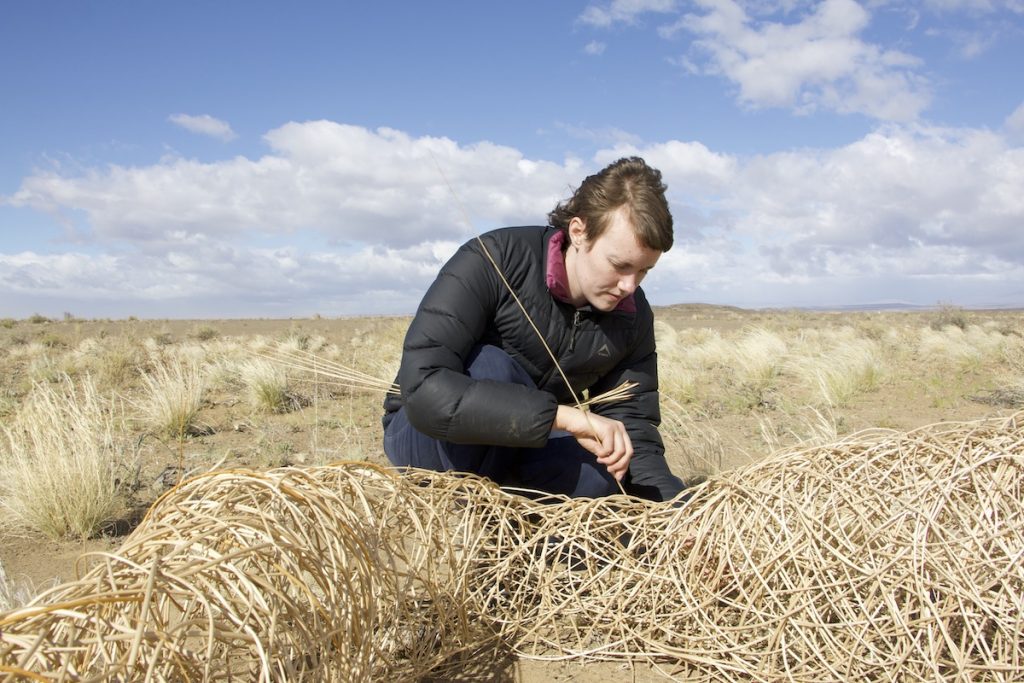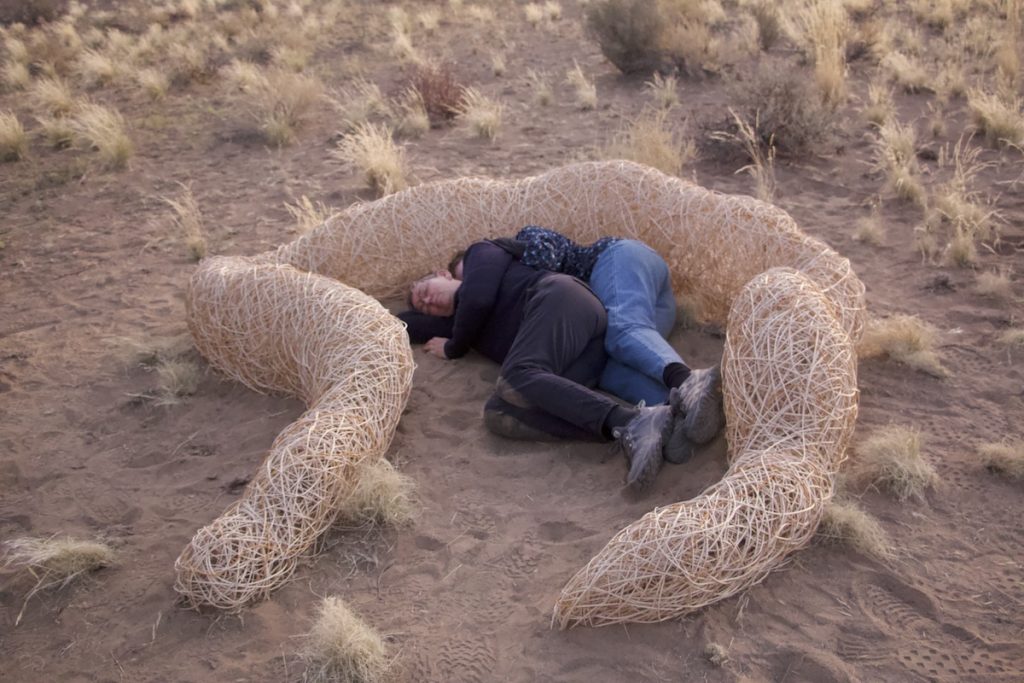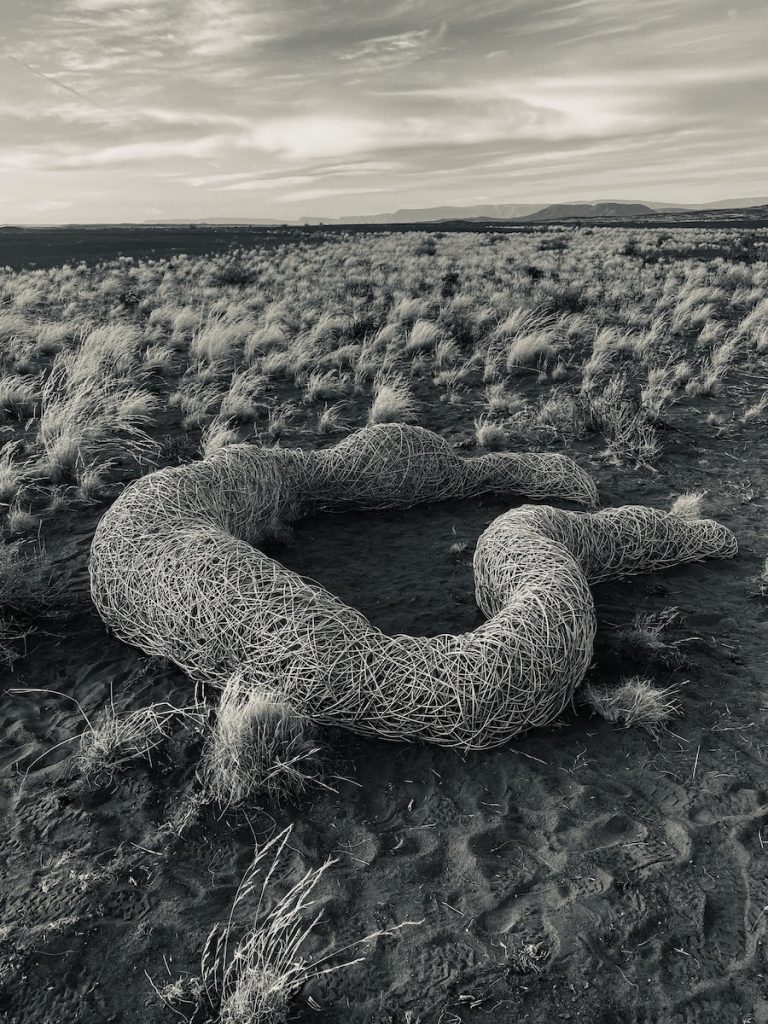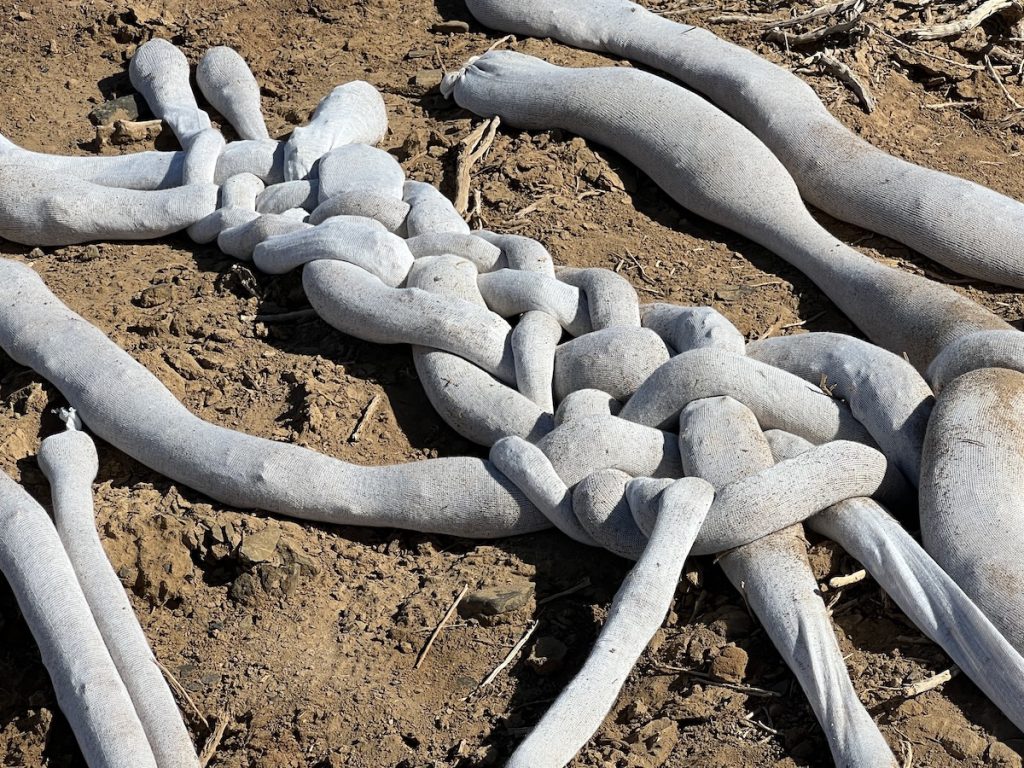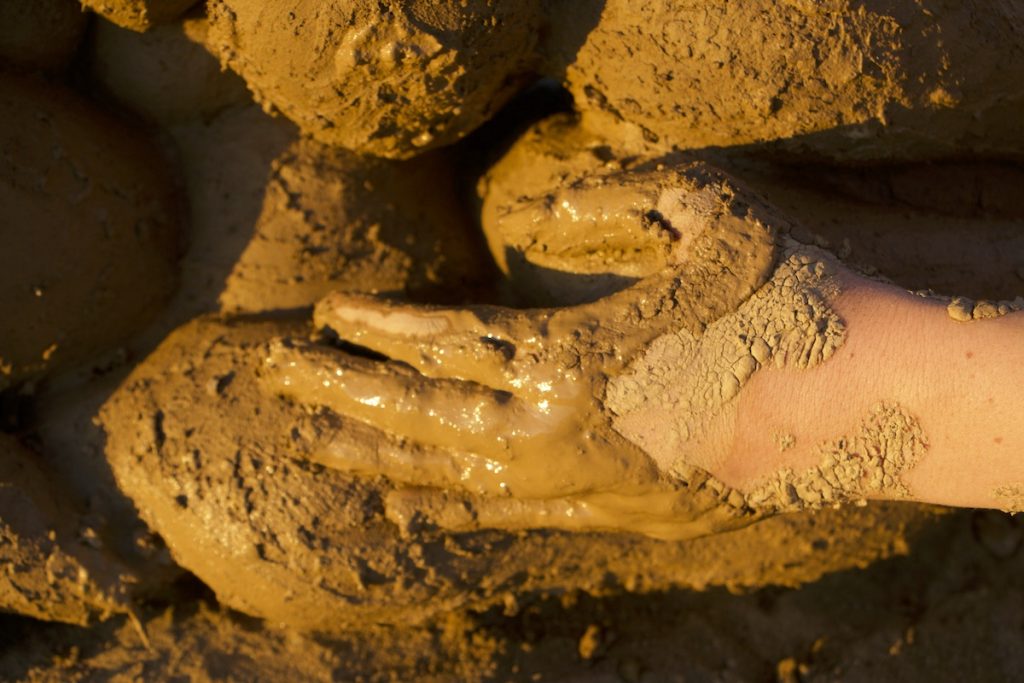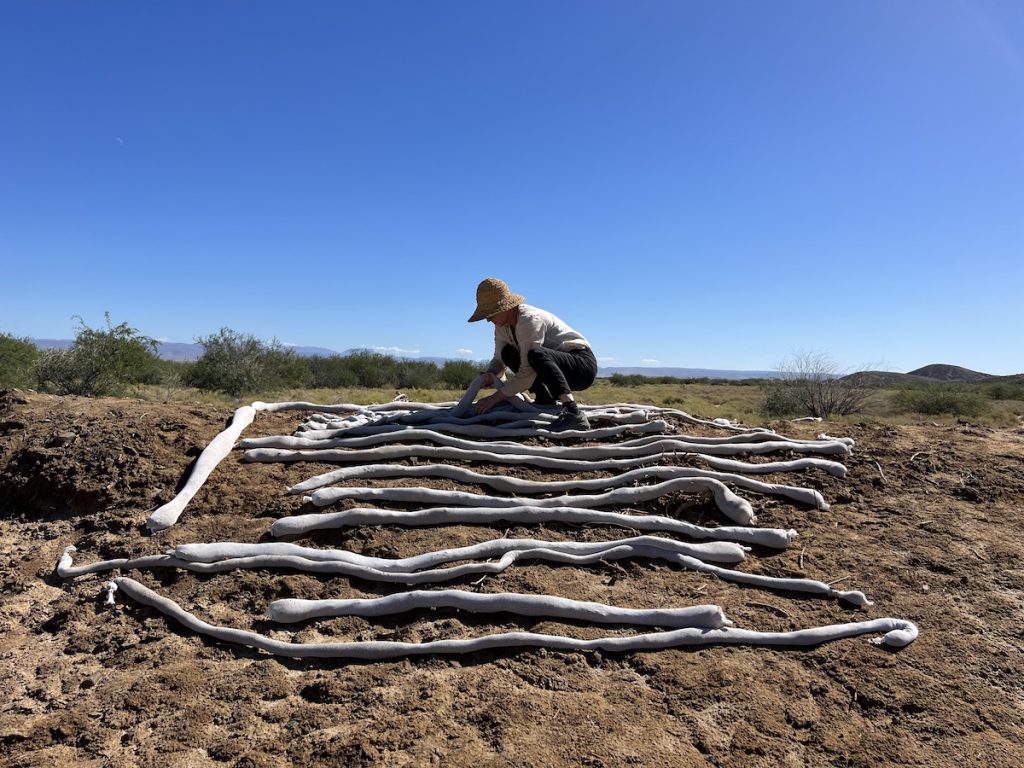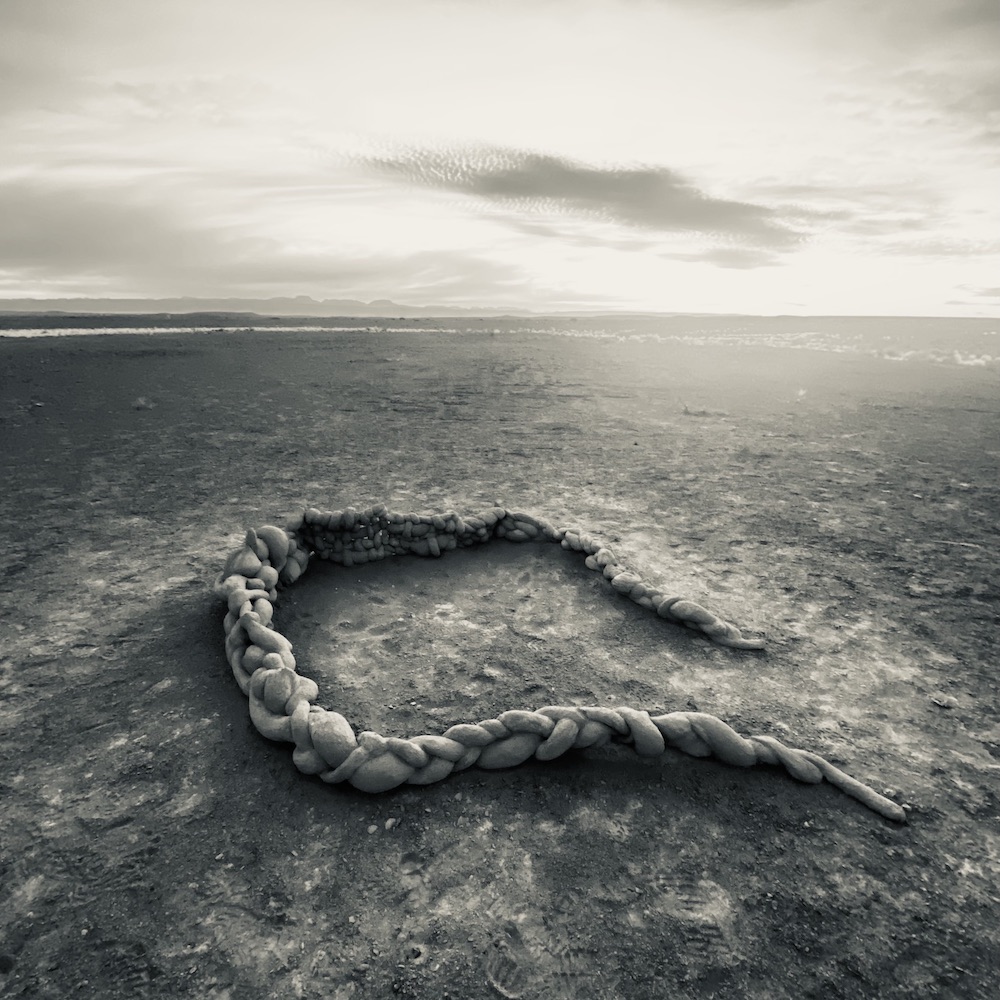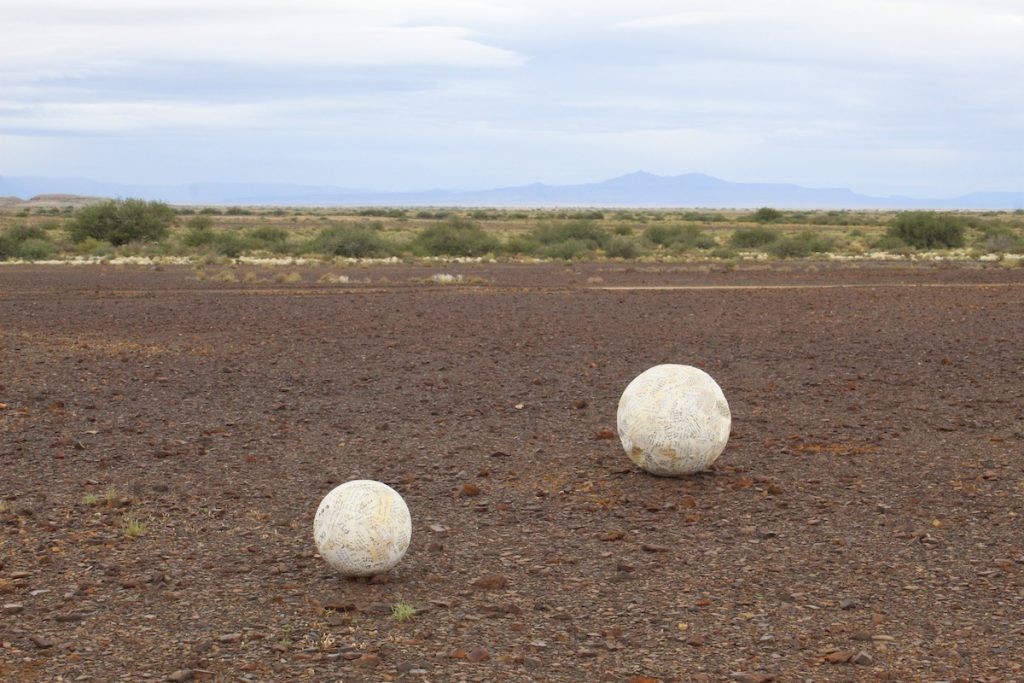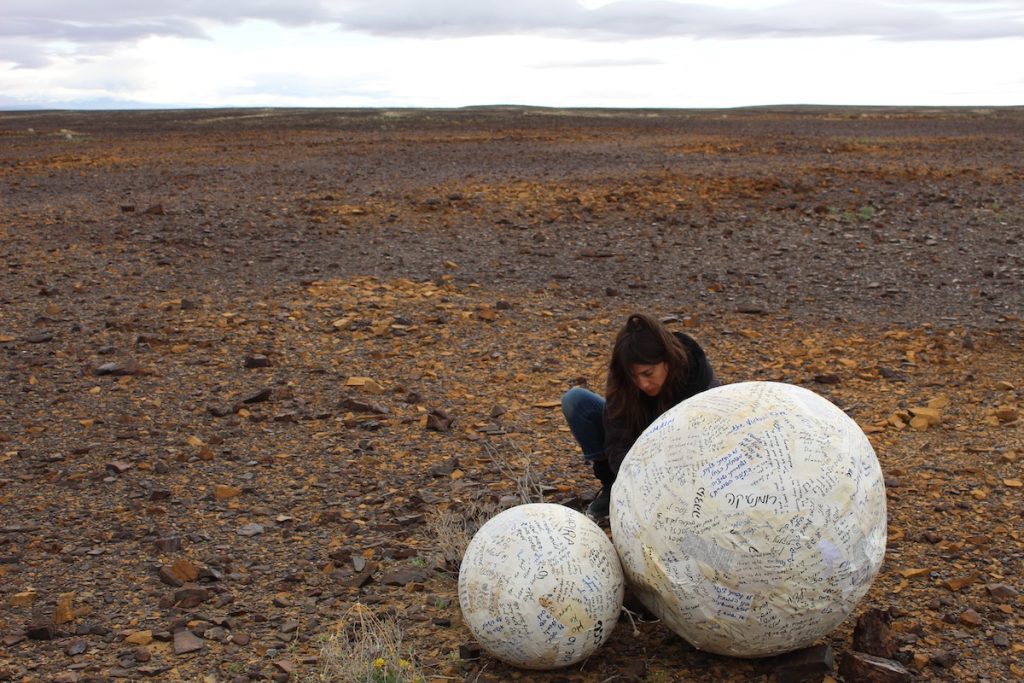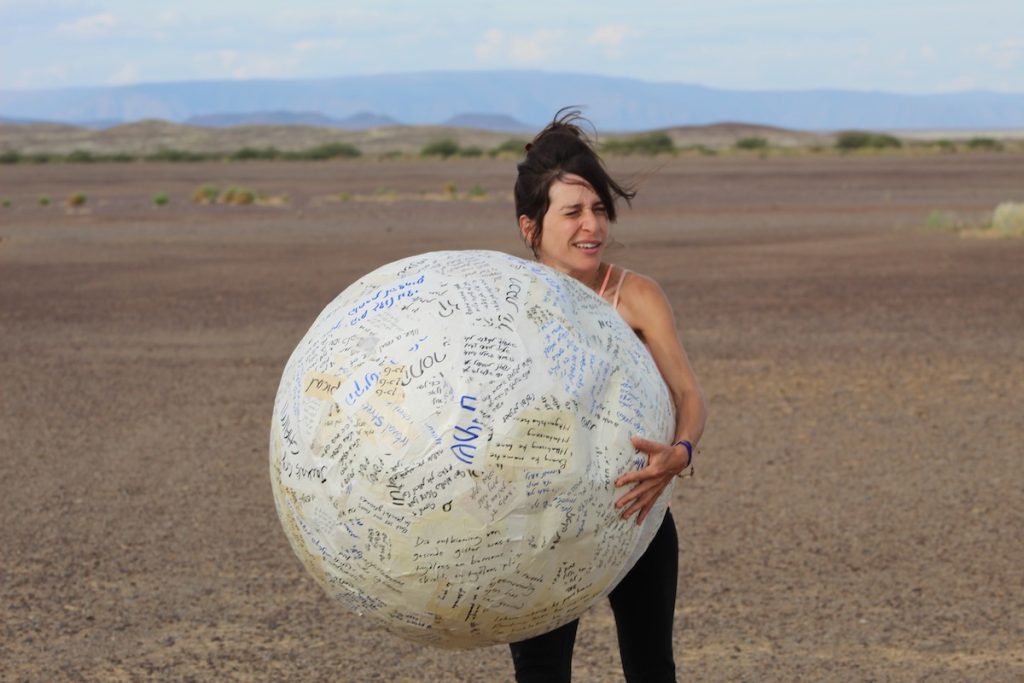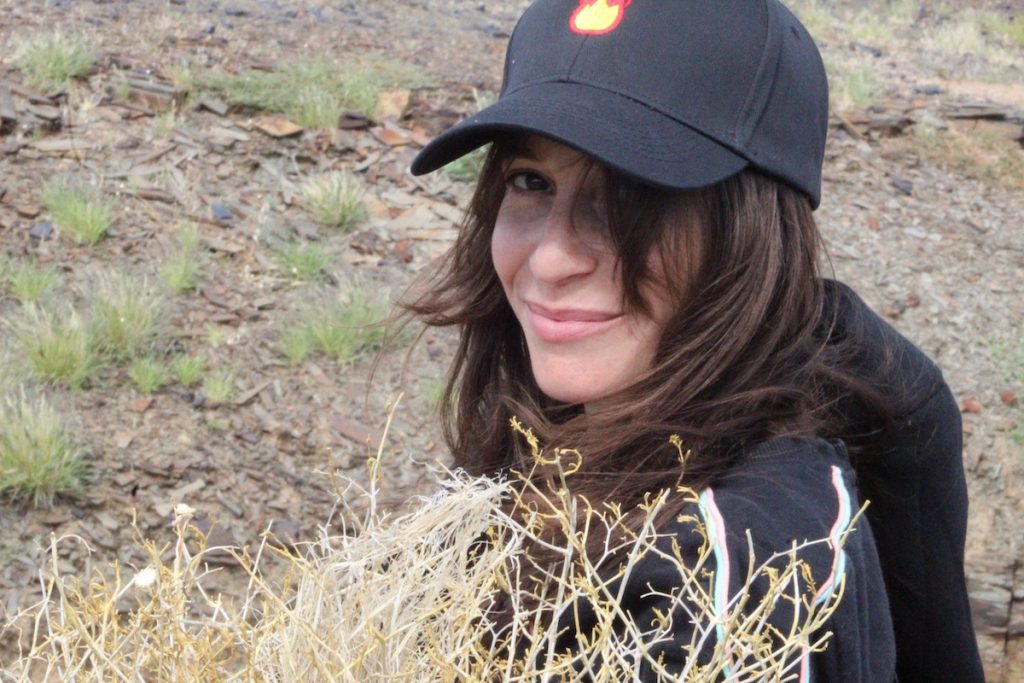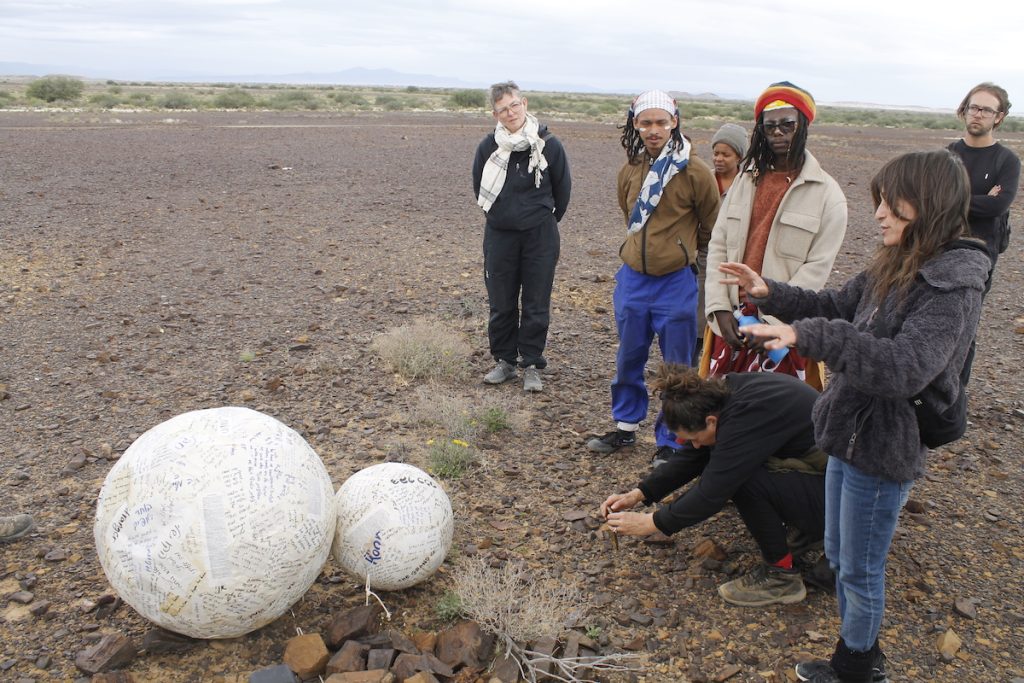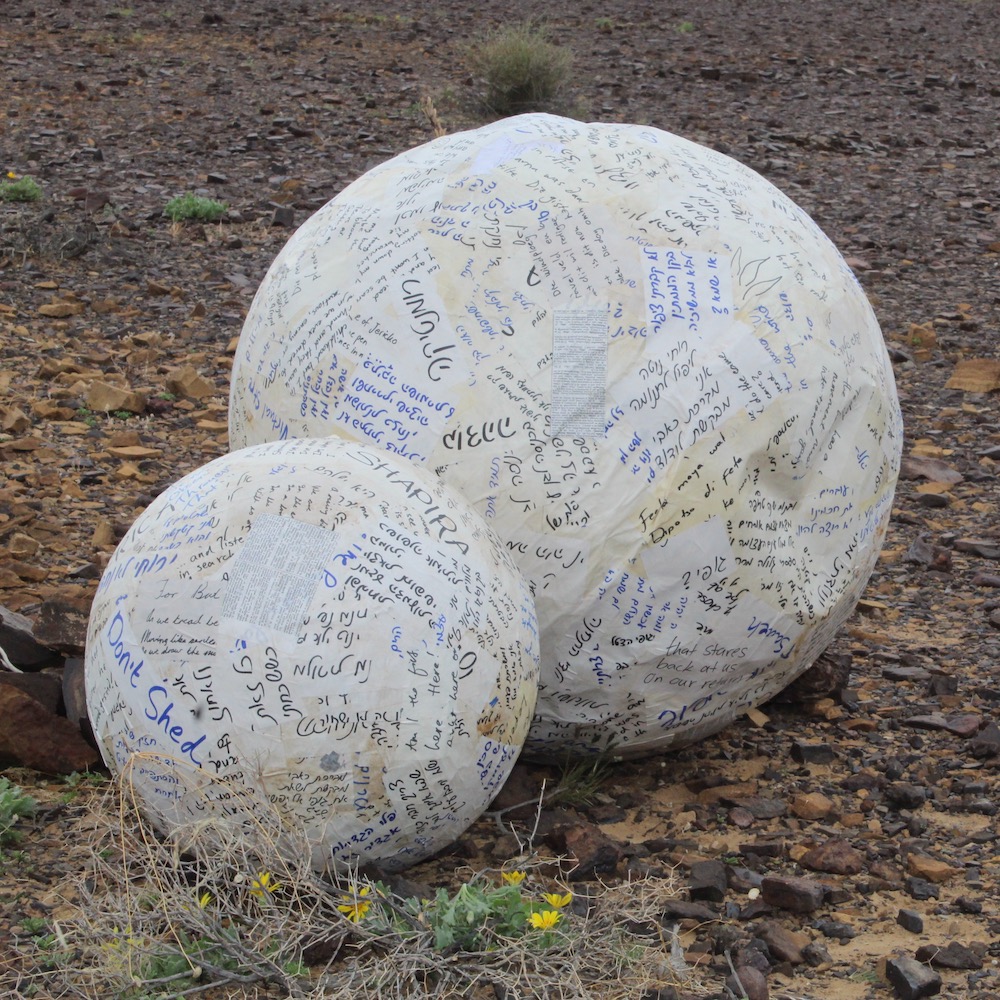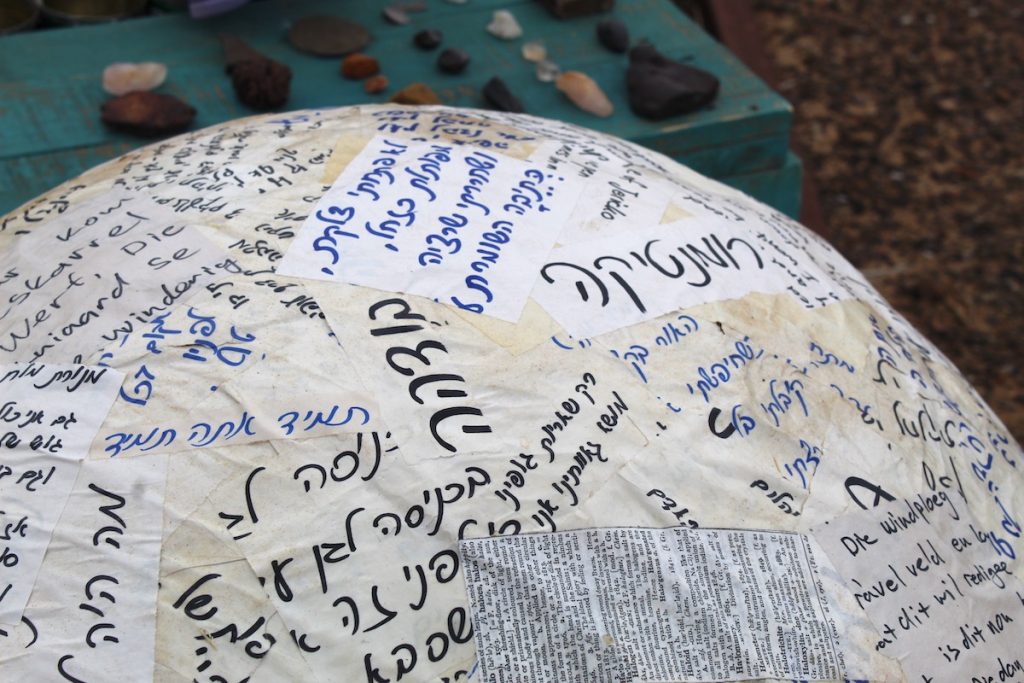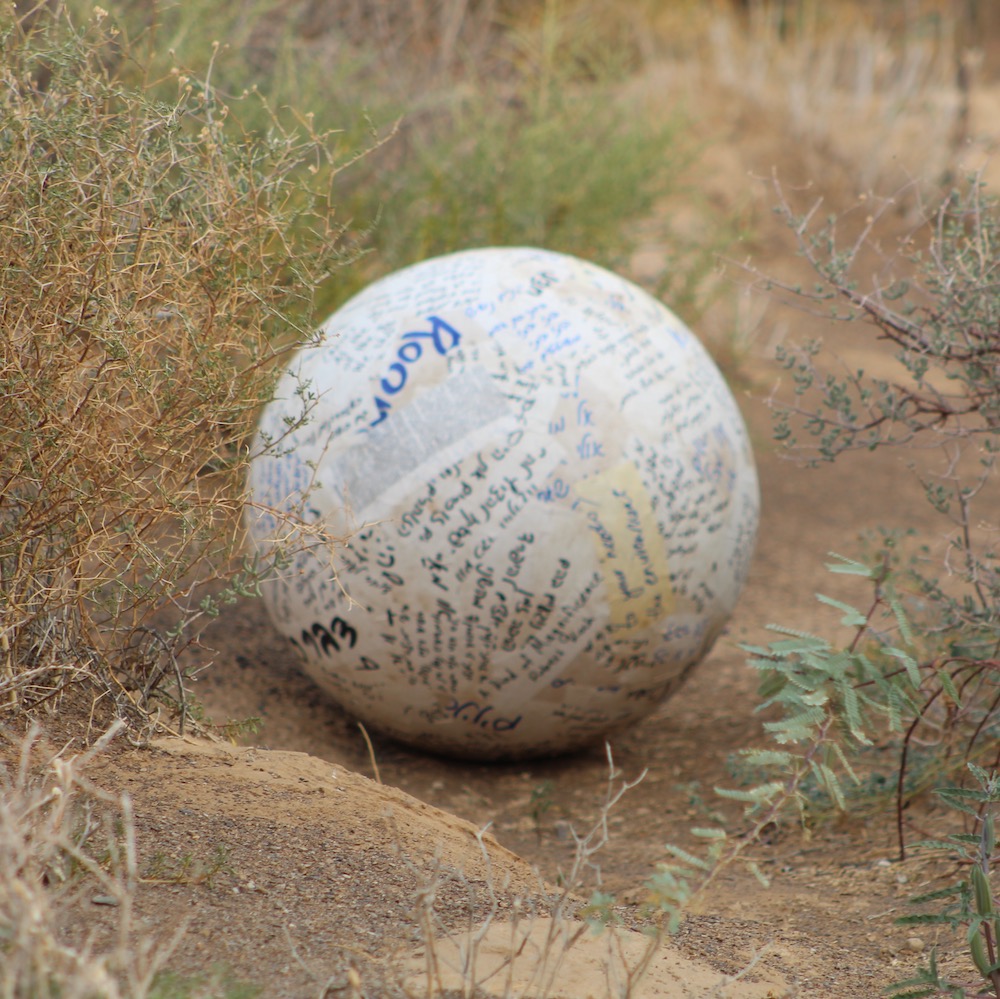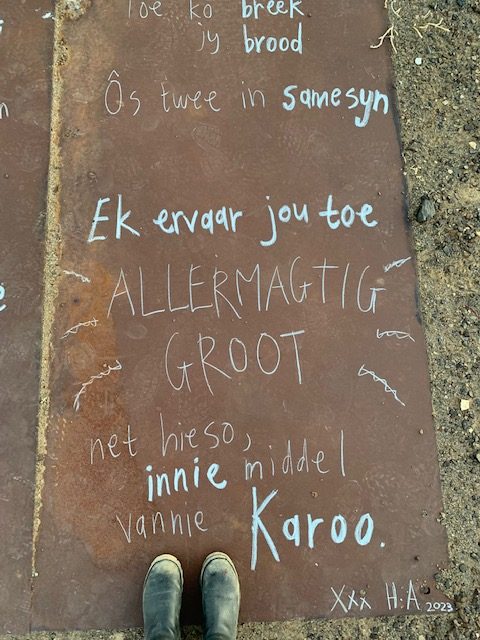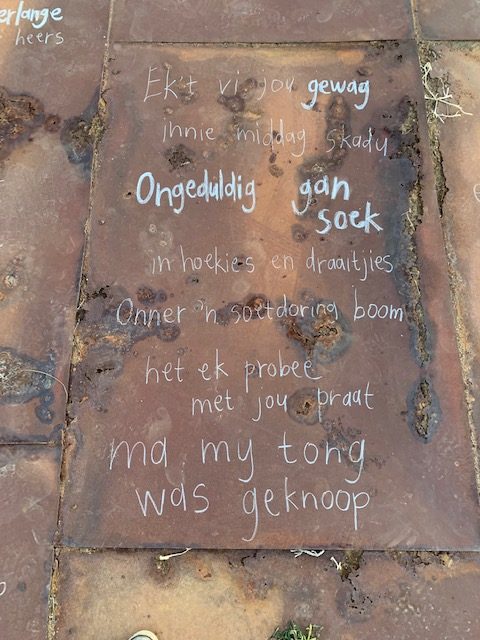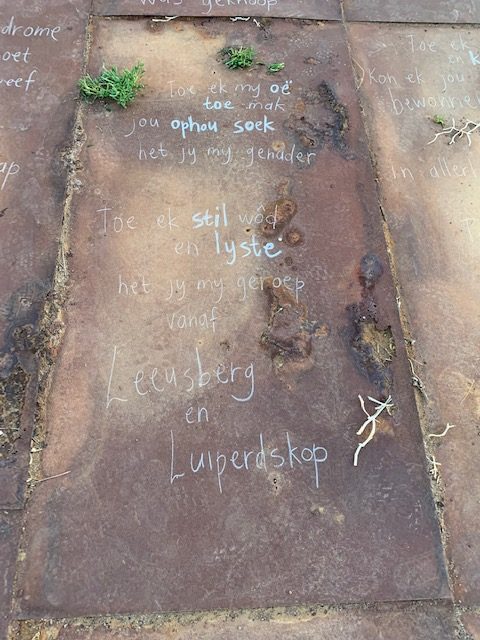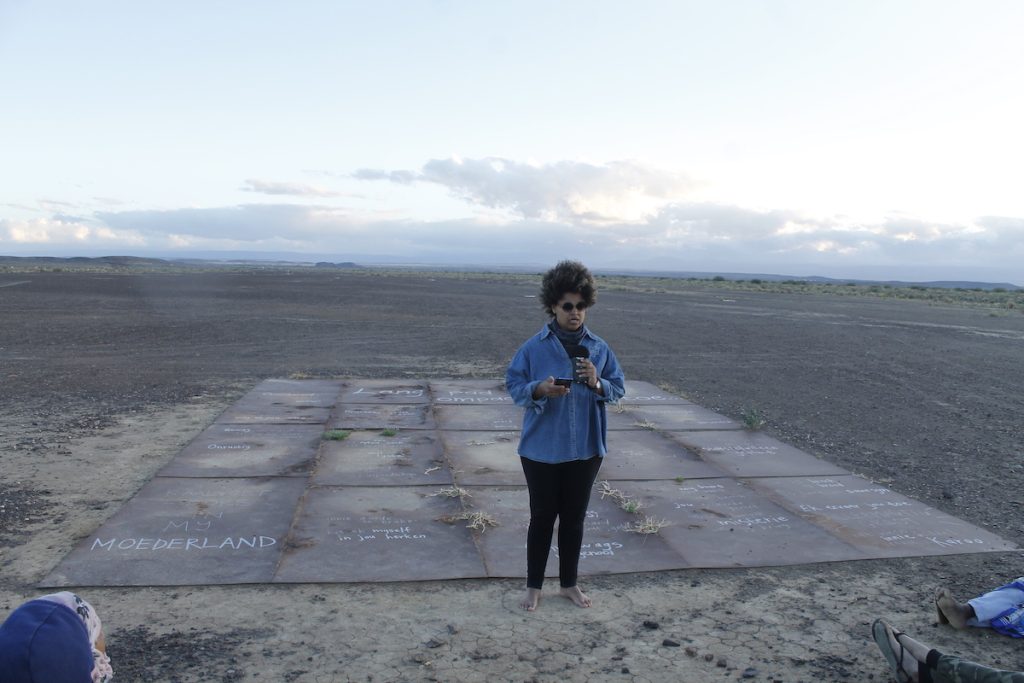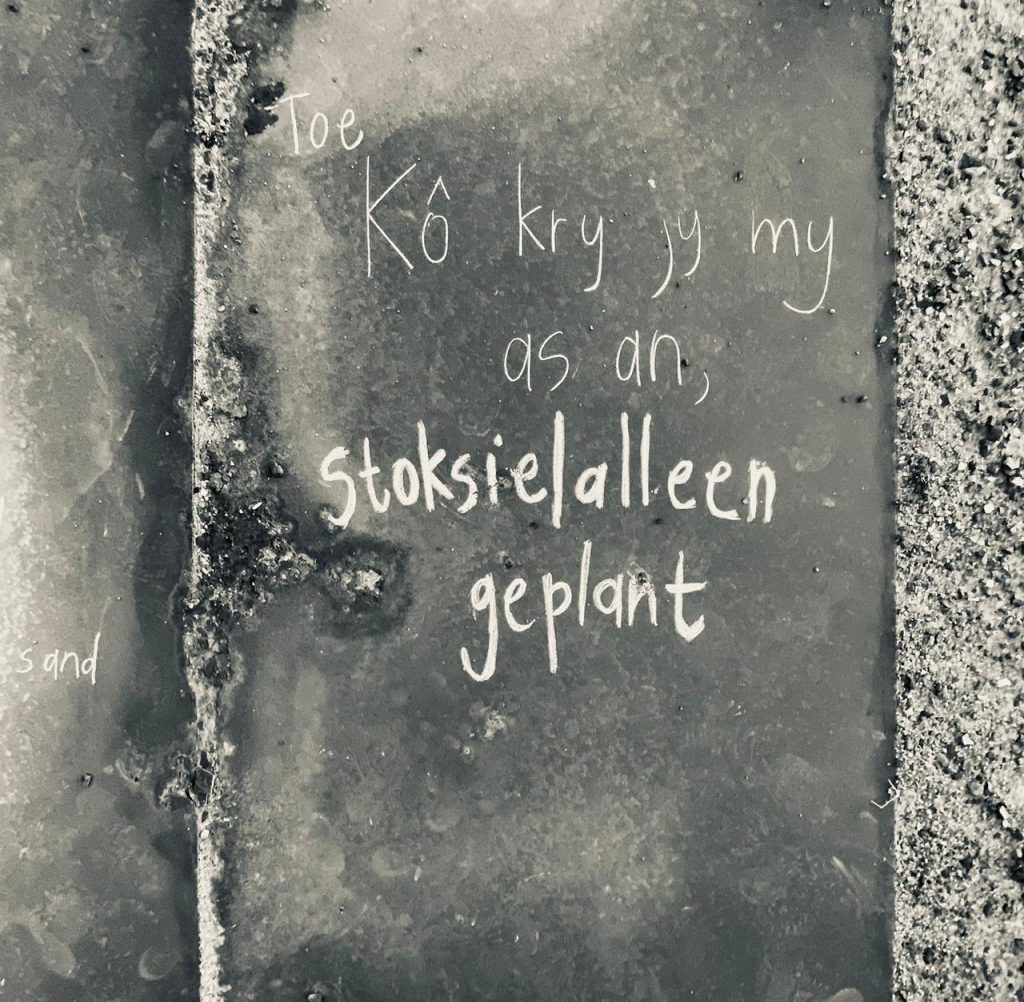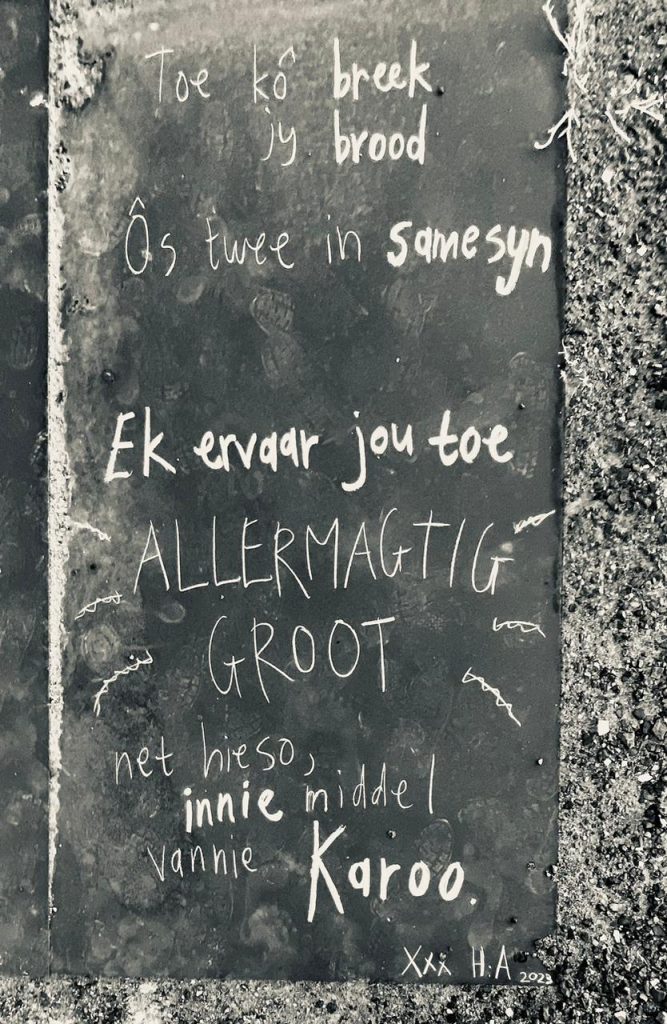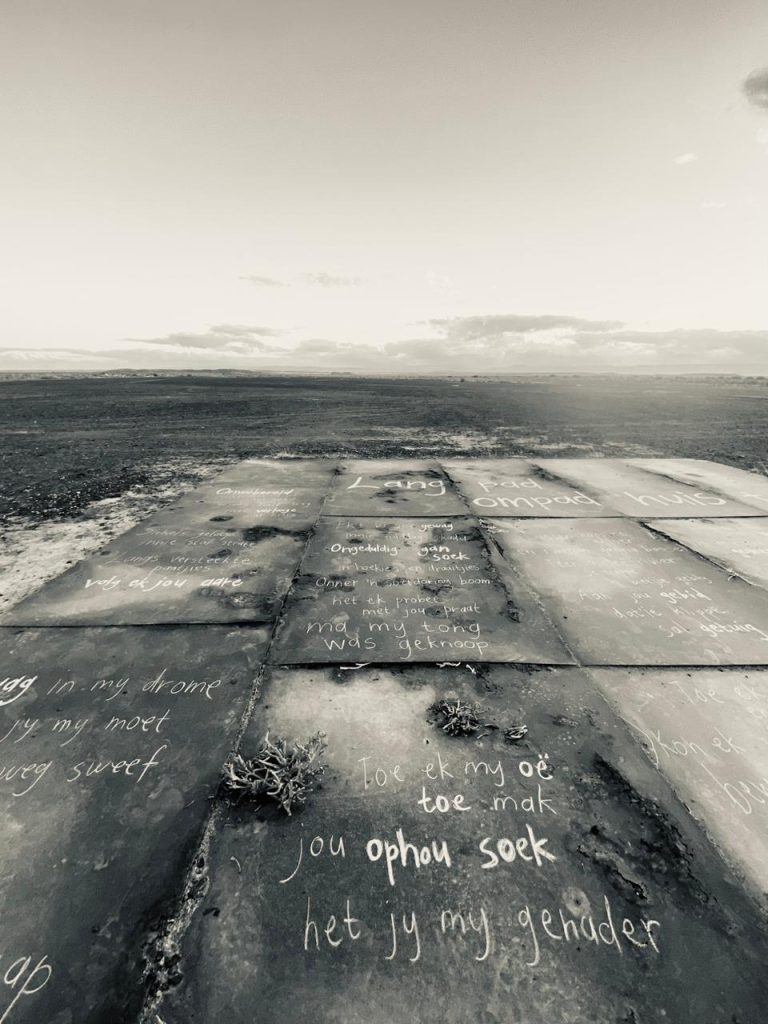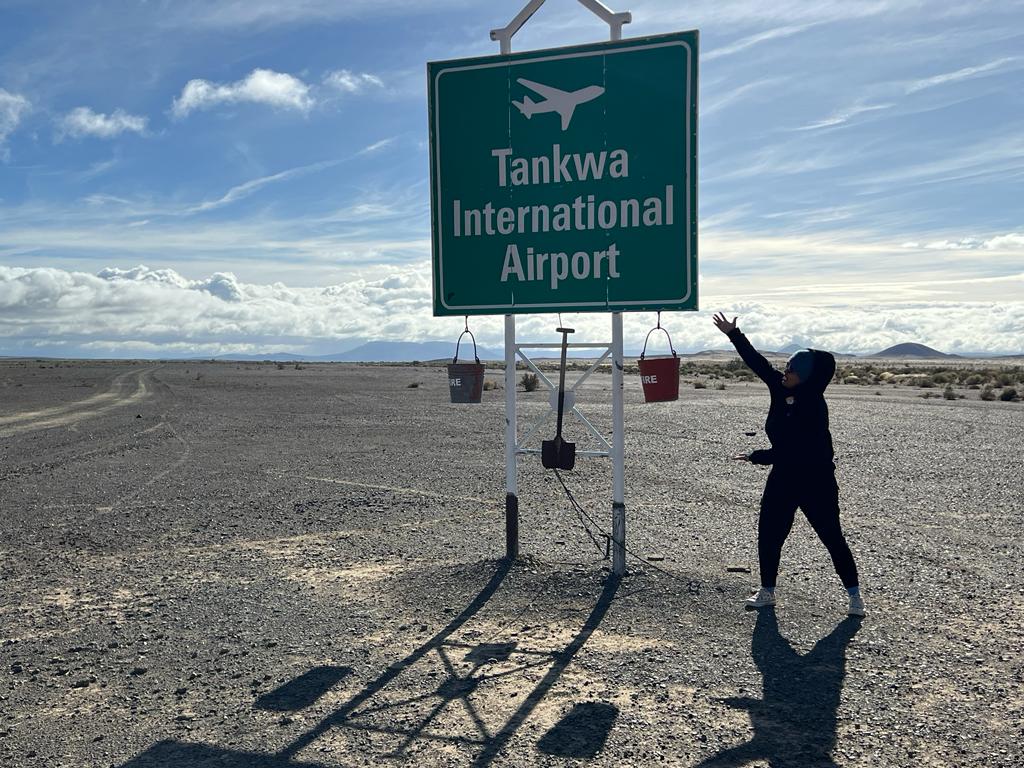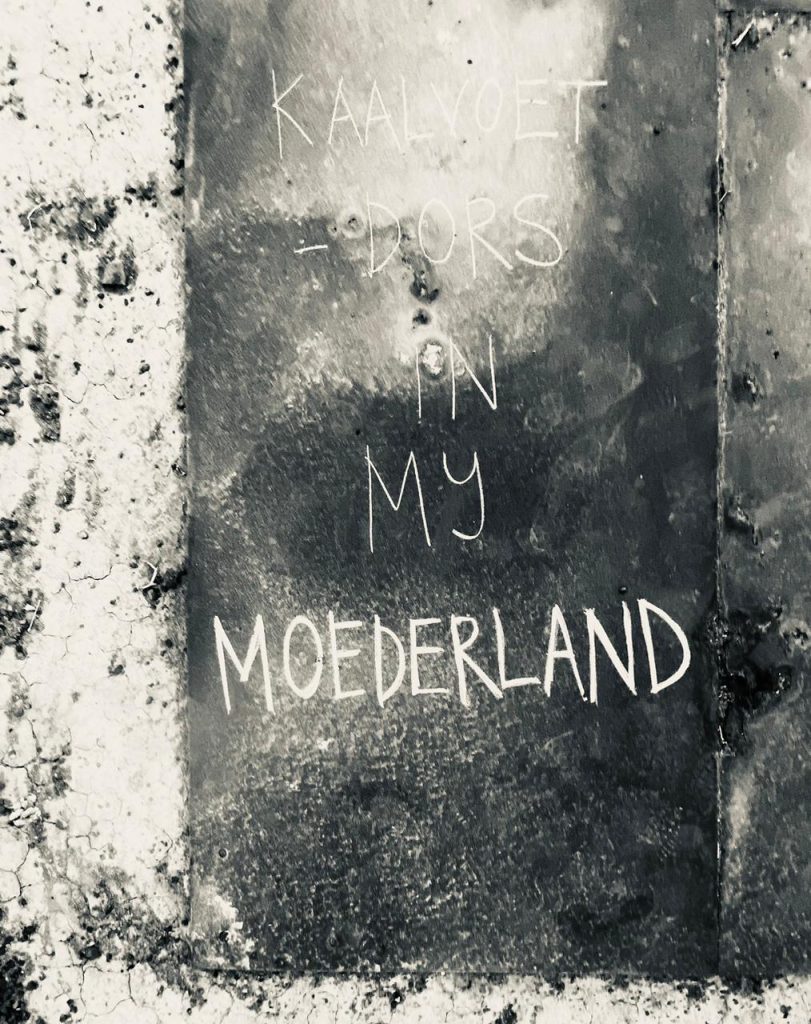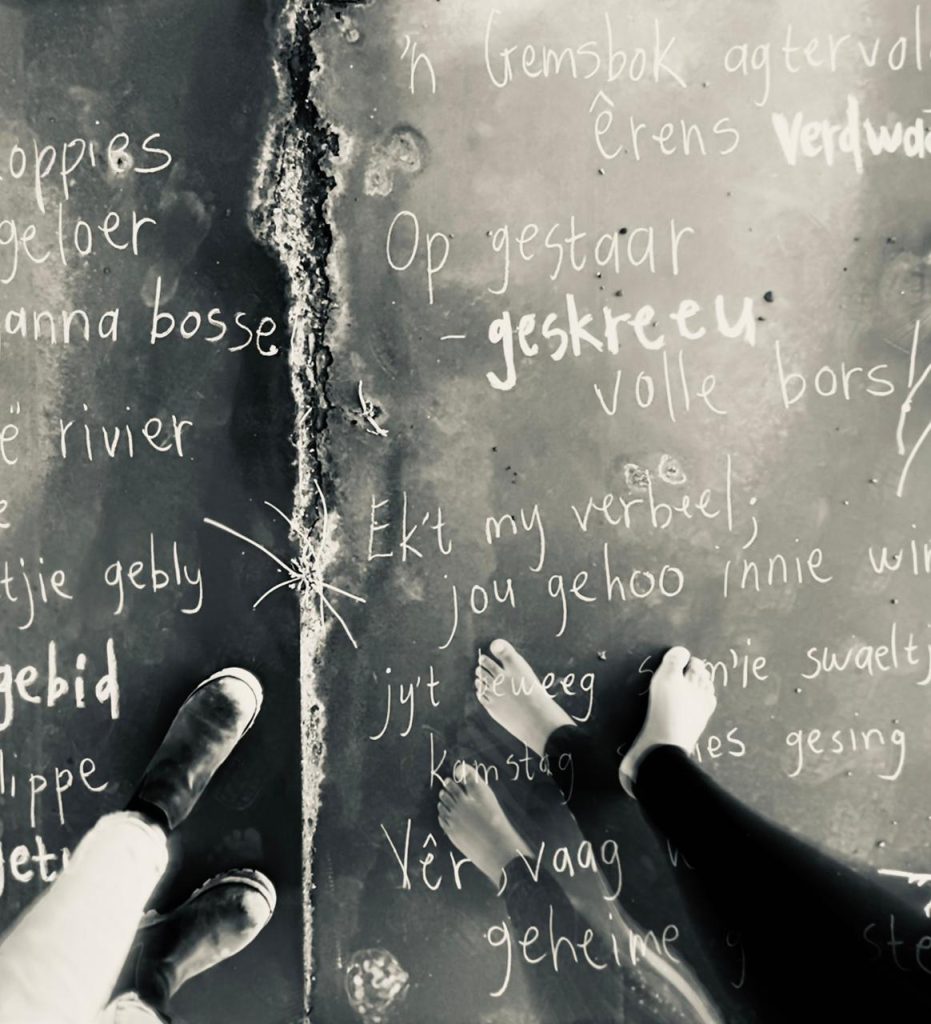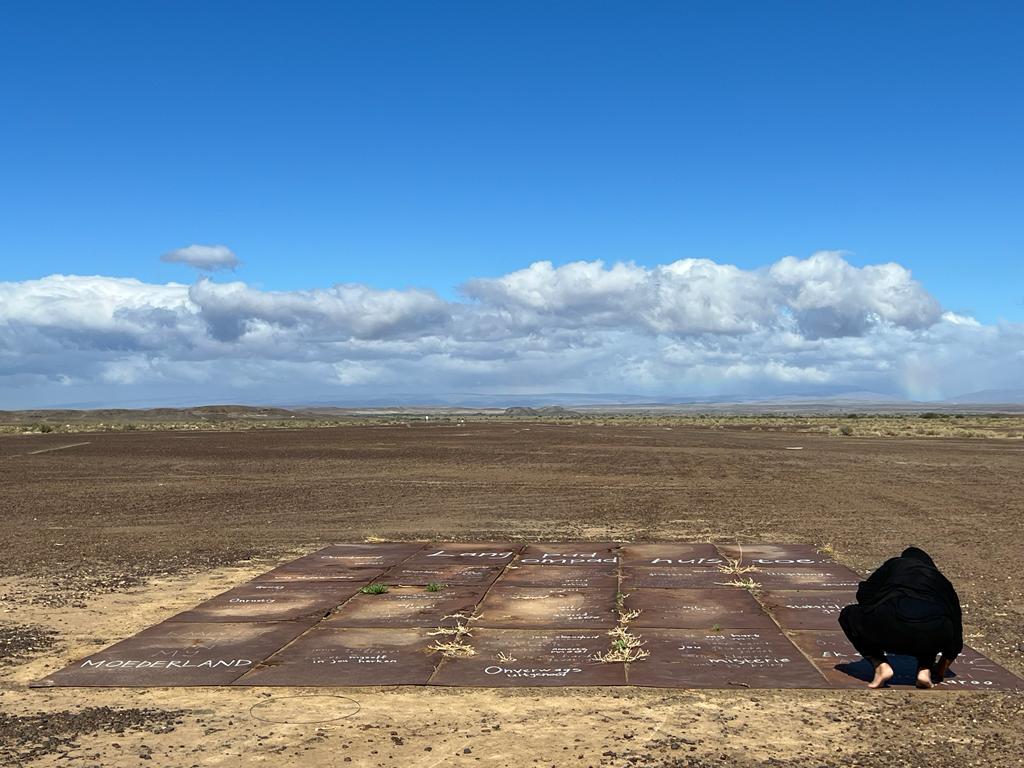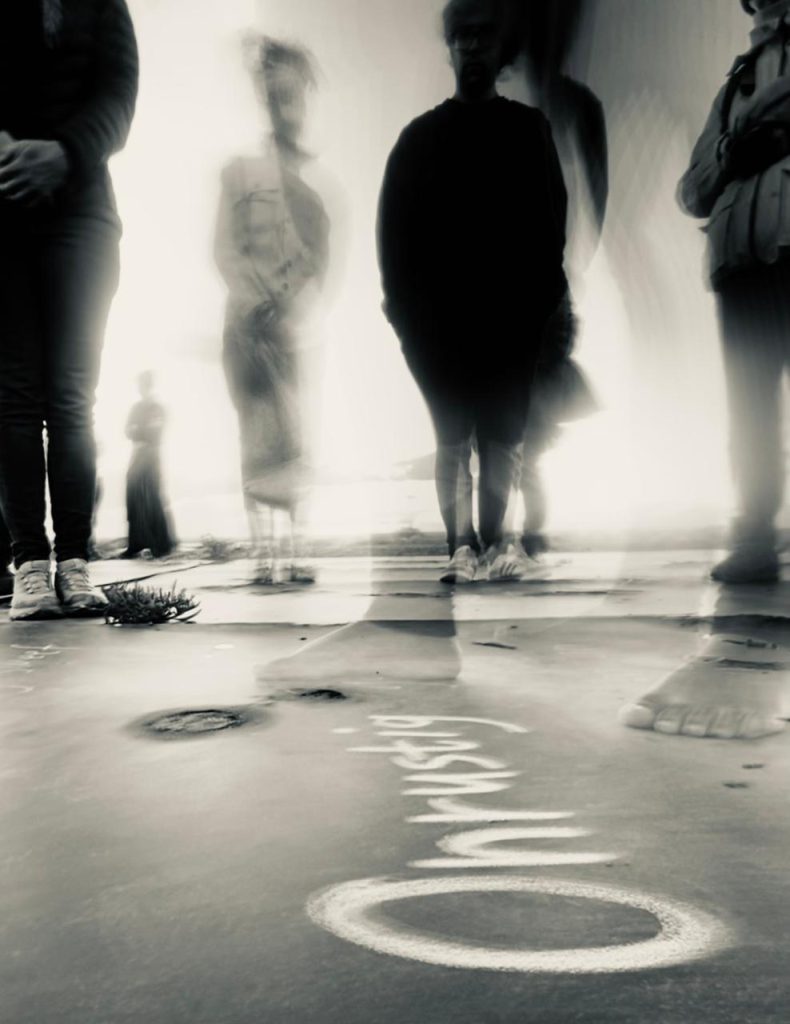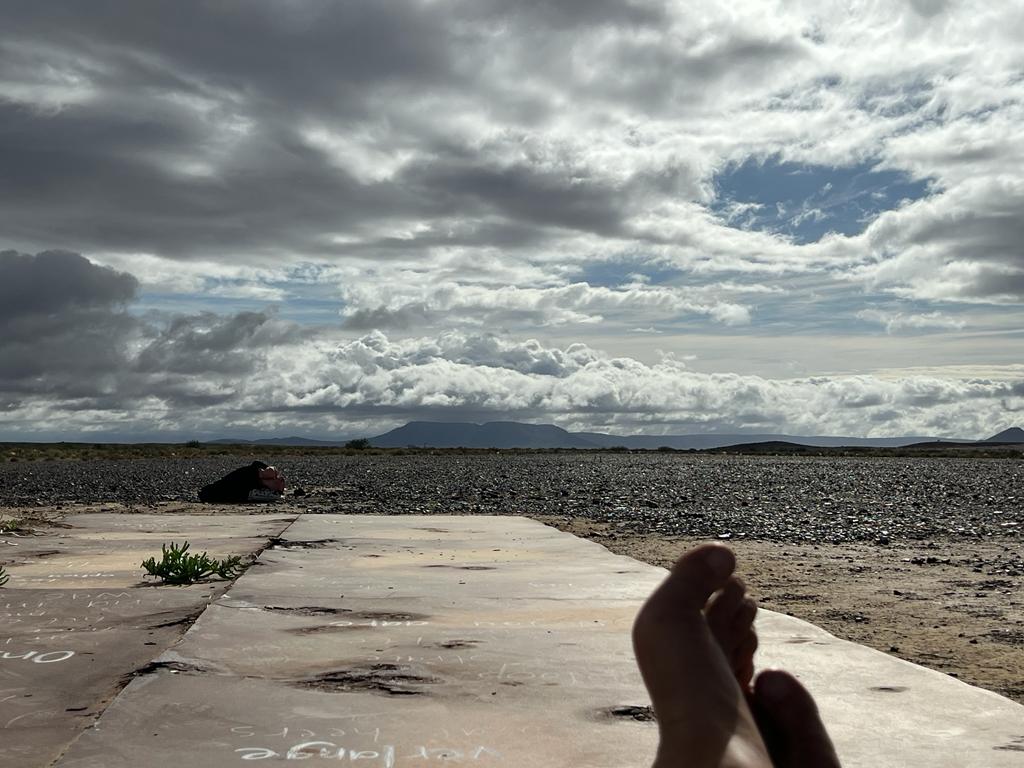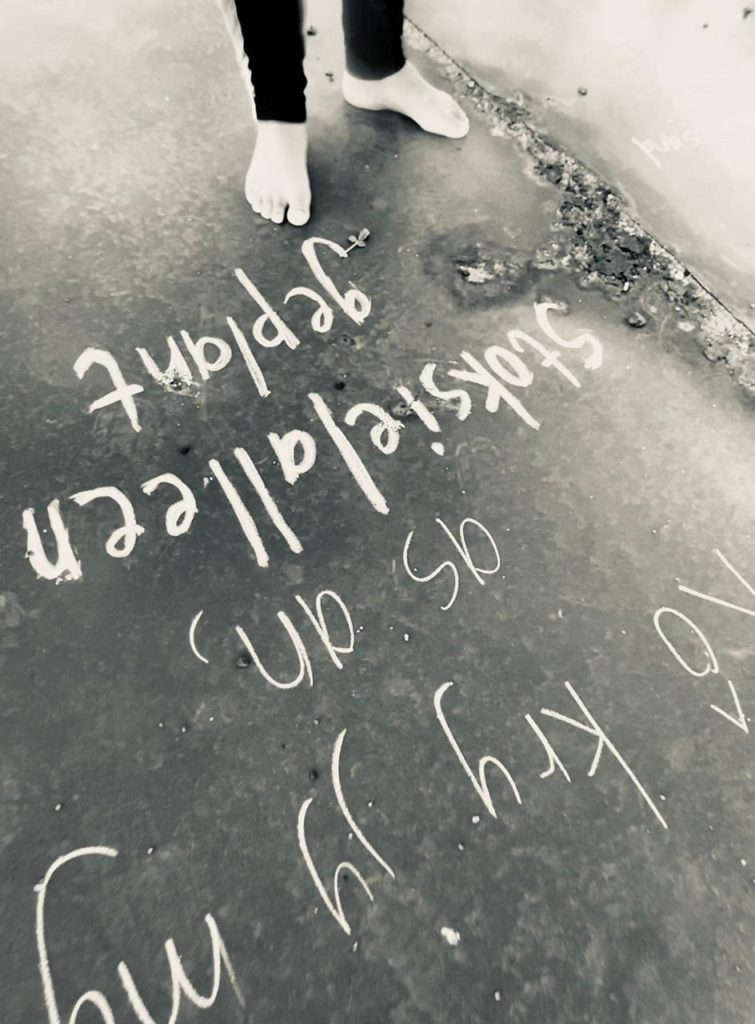Alpàr Peter, Romania
It is not easy to put into words everything that participating at Tankwa Artscape meant to me. There was both an external (into the real space) and an internal (into the mental) adventure and journey. Living together and breathing together with the desert made it possible to slow down internally. This basic experience created the ideal condition for art. It was one of the most special events I have been able to participate in so far. I was part of a wonderful and deeply spiritual community.
The professional organising of the residency enabled the creative development of the artists and the development of real human relationships.
The community of artists is like a big family that overwrites all differences and distances and enables creative processes of other artists to such a depth here at Tankwa Artscape.
Here, art was truly able to become a spiritual path, enabling the maximum professional level.
The audience viewing the created art work is similarly in the “Tankwa mental state”, so they are totally sensitive and attuned to receiving the work.
Ideal conditions for experiencing the perfect creative and artist community experience. Nature + art + community: Tankwa Resident program!
Thanks to everyone.
Sarah Richards, South Africa
“Holding Gently”
An image came to me, of an arm with a hand – holding gently, large in scale, as a drawing in the sand, using the rocks and earth of the Tankwa landscape. I did not want the hand to stand out from the ground but to be imbedded, held gently by the earth. I wanted to find a place that had been damaged in some way already, had rocks near to the site, and that it wasn’t too far from the camp so that I could make my way there on my own. JP found the ideal spot, up a small, dry river bed. An indented shape carved out by water, guiding the size and placement of the hand to be. There was even some rock structure that was to become the perfect arm.
At one stage about halfway through I was sitting in the palm, feeling alone and uncertain about what I was attempting to do.
Then I realised that ‘I’ was ‘held’ by this hand. That I just needed to be. Be with the environment, be gentle on myself in this hand creating process, be with the sky, allow myself to be held, breathe. I also realised that this hand was a place for people to sit in, to be in the environment, to take some time to be gentle.
Qeren Creates, South Africa
My time at Tankwa Artscape was life-changing. Being out in the desert gave me a lot of time to reflect, to sweat and to respond to the landscape as an artist.
My first work is named “For But Dust”
For me, it’s an acknowledgement of how we are connected to the earth through the common elements, atoms and molecules we share, but also how we are separated from the rocks and sand by the gift of sentience, and how we are able to experience the land differently because of it. I chose the mediums of clay and stone mosaic. I had never worked with these materials before and the concept of being one with, and also separated from the earth seemed appropriate to me as a city dweller in the vast desert.
My second work, named “Grounded” explores a similar theme through a smaller-scale stone mosaic sculpture with oil paint finishes. This sculpture is based on a 3D print of Imaginary Friend, who is a protagonist who represents the spark of hope we are born with and that we carry with us as we experience life.
Matlali Matabane, Lesotho
“Me Mpuse”
Puseletso (Sesotho for Restoration) is a three-part artistic exploration meditating on birth, old age and how familial/collective imprints the journey in between. The body of work is a play on yearning to be re-held by the divine feminine, Bantu symbolism coupled with aesthetics of the Basotho, brought together in protest song. The result is a series of visual portraits, a sculptural land installation and a sonic negotiation for land.
On portraiture – A series of portraits in red + white flesh and blanket was produced as a grounding exercise by ‘installing’ the body into the foundation trench dug for the sculpture’s obelisk. Titled ‘O ko e kenye chacheng baby’ (loosely translated to ‘plug it in to charge my love’) is a an exchange of love, anxieties, the bittersweet joys of being, shadow work, and the shattering pain of the current self meeting the self it ought to have been.
A birth – Red ochre face with the blanket white side up dives into the struggles of being alive and my anxieties about death balanced with the bliss of a fulfilled loving life.
A Death – A calamine face with the red blanket side up focuses on the act of letting go.
On sculpture – The Bantu symbol for sunrise (birth) and sunset (old age/death) is a circle cut across the middle with one of its halves hatched. This circle is placed along the 222 degree South West mark and is oriented such that the hatched half lies East rendering the unshaded half West. The installation lies within the ley line area (the earth’s energy grid system) which passes through both Stonehenge and Lesotho, creating a fitting point of departure for land and restoration negotiation sites. An Obelisk is built at the center of the sculpture to acknowledge displacement caused by the Bantu pastoralists upon the native San once upon a time.
On performance – Interceptor – A meditative sound journey communing with the land as I ask: who spoke upon the land of the Basotho in the 1800’s? Who gets to speak now? – Me.
‘Eo, Eo e na ka mang?’
(And this, who is this one?)
‘Ke Malata khaitseli ea khauta’ –
(the self appointed golden repatriator).
We will take everything back with interest, taxed in kilos of gold.
Emma Strong, South Africa
On the windiest day of our residency, I embarked upon
A Pathed Pilgrimage.
In this 40-minute endurance-based performance I walked up a white fabric path which I laid on the horizon line of a hill, wearing nothing but bandages on my feet and shoes crafted from rocks. Each rocky foot forward would be a step closer to healing, to peace and to letting go of fear and self-hurt.
Two nights prior to this performance, I spent the night alone on that very same hill. So very dark. So very quiet. So very on-my-own. Under our expansive star system answers to complicated questions came to me. Being alone on that hill meant I could begin to listen to the whispers of the wind, and could become patient enough to listen, rather just merely hear.
When I finally woke up the next morning, I was grateful for the light. I was grateful for the sun, and the new day. I was proud of myself for overcoming fears, and standing in my bravery, I then knew what I came to do in the Tankwa, Karoo.
Two foot-like rocks stood out for me on one of my sunset walks. Kim and I attached steel bars to the rocks to transform them into sandal-like-shoes. I trained each day in them, walking over the undisturbed rocky fields, leaving ‘rockprints’ instead of my human footprints.
An alumni-resident, Sonya Rademeyer, visited Stonehenge for some days, and gifted me with the very best advice. Through embodiment, I would know exactly what to do in my performance; I need not overthink movements, or over-choreograph, I need just to follow the intuition of my body. I knew what to do.
And so, I unravelled a 400-footstep long fabric cloth on the hill’s horizon line. On each end of the path, I laid out a collection of rocks, a pattern and a prayer of collected objects, holding my manifestation for healing and peace. When I was ready, I took one heavy step forward, and another, and another, until I was on top of the hill, untying myself from my anchors, and wrapping my body in a clothed cocoon. I lay there, wrapped, warm, protected and relieved. I didn’t need to hurt myself again. My rock-walk was over. My Pilgrimage beginning.
Kobus La Grange, South Africa
I set out to create some Carbon Molecules to play with scale in the open landscape of the Tankwa.
“Carbon Dioxide, Ribose, Ethanol, Methane, Methyl Isocyanate”
I exhibited the molecules on the road to the “Tankwa International Airport”, in the manner of a Game drive – popping out behind a bush as you cross a dip in the riverbed… appearing out of nowhere. A peaceable ambush by molecules so enmeshed in human activity that they have become banally insignificant and we ignorantly desensitised to their presence. My intention is for them to be a reminder to us to tread lightly on the earth and be conscious and ethical in our lives through or choices.
I encourage the viewer to gaze upon then with the same wonderment of seeing a wild animal, but to acknowledge these are our own human makings and our responsibility in bringing them into our world.
The ” Windhonde”
These were an offshoot of the molecule making, I was playing around with the plywood circles that slot into each other to form the atoms for the molecules. I saw that some configurations easily moved in a predictable manner when there was enough wind.
These simple kinetic sculptures performed beyond every expectation I had of them.
The spectacle of them at full gallop proved captivating and exciting and could lift the energy of the viewer with playful lightness.
Jane Mpholo, South Africa
Monehelo | An Offering
I saw a place and it said “this is it”. I got off the car and walked on the ground and it all made sense. I was right. That was the spot. I immediately went into a trance as I stepped into this sacred land. I felt a deep connection with my ancestors. I laid everything I needed on the ground, in a place that felt right, in a way that felt right. I didn’t know what was going to come out of this, but I knew it was going to be beautiful and sacred.
I knew I was ready. No other place in the world was as perfect as that piece of land at Tankwa.It made sense. I felt like I belonged. Finally I had connected with the land, myself and my ancestors. It was surreal and fulfilling. I went back home with a huge piece of Tankwa in me. I am in the most peaceful state ever. A feeling only that place and the people could grant me. I will never forget what Tankwa did for me.
Perception
Inspired by the many journeys woman walk and the constant conscious choices that comes with being ….
Mothers, Partners, Themselves, Career women , journeying into the unknown
These are represented by the “branches/arrows”
Depending on how one looks at this, it can feel like a burden and all these roles seem as though they are all taking different routes.
However with a shift in perception, the woman can see herself as a tree with leaves growing in different directions. She can be grounded and grow for as long as she waters the roots. The roots of course being symbolic of her physical, mental, emotional and spiritual wellbeing.
Tina Bester, South Africa
I created a 7 circuit Labyrinth lining up with the New Moon Full Solar Eclipse and to walk it in silence at the first light of the day with 19 other beautiful humans was pure magic. Creating it in the early hours of the morning and working so closely to the Earth felt deeply grounding and was a soft balm for the soul. We entered the Labyrinth in the East and created a stone alter at each of the cardinal points. We walked 7 circuits in and 7 out, each one representing generations past and generations to come.
The concept of the Labyrinth is…Walk into the centre of your world, tread carefully and make peace with what you find.
I made my peace on this journey.
Sisonke Papu, South Africa
UZALO OLUTSHA
We will start making a labyrinth within a stone circle. The stones in the stone circle that represent cardinal points/ seasons and elements will be carved and painted with specific symbols and colour coding/ rock art presenting portals for entry and existing inner dimensions. The stones that make the labyrinth will be painted with symbols inspired by the visioning during our prior meditation.
The labyrinth will take the form of the cosmic blueprint that will take those who journey on it through the cosmic womb, and upon reaching the centre meet a reed mat and wooden headrest that only allows one to lay down in a fetal position on their left side of the body. A few centimeters away will be our sonic divination station with instruments that resonate with breath and water: porcelain bowls, mbira and flutes.
After we complete creating this sacred site, on the day of the new moon (April 20/21) each traveler/ residency participant/ those who feel will be
invited to a procession through the stone circle and labyrinth and experience sonic divination dedicated to rebuilding the energy grid of the earth that flows through Tankwa.
The sound divination and procession will occur at sunrise. The sounds we shall transmit will connect with what the space is communicating, and will also be improvised from moment to moment as the energy shifts.
This final part of the work is meant to activate the sacred site as vibrational healing zone, contributing to a new flow and grounding of positive energy in the space and all spaces that flow in, around, above and below it.
/Xam Fortuin, South Africa
!Habesi //Aan (Roots Home)
The roots of humanity are embedded in the soils of Southern Africa. In this way, a place like the Tankwa Karoo is an ancestral home for us all. That is, if we are able to surrender to its song and respect its dance.
The peoples born of these lands have listened to its vibration since the very first circle around a fire. Since then, we have crafted our languages as technologies that blend, bend and travel through the vibrational pathways of space and time.
‘!’ is the sound of a meteorite colliding into the earth.
‘//’ is the sound of a springbok trodding the plains of the desert.
‘/’ is the precious sound of rain splashing into a dry pan.
Vibration is what connects our consciousness to everything in the cosmos. ‘!Gqi’ is a root indigene word, referring to something or someone that ‘connects’. Indigenous languages are part of the land’s memory, its rhythm and its wisdom. During our time in the Tankwa, we contemplated on the familiarity of land. Its ability to reflect ‘ama-sē’ (expressions of truth). Conditions were extreme, yet deeply insightful.
Walking onto the land barefoot, we set out to cultivate a ‘!Gqi-pathway’ that would heal and restore our roots to the land. The elements of fire, water, earth and air, would all be contained, harnessed and channelled by this pathway. When a human being enters the space, their body is immediately exposed to the flow of elements moving in and out of the pathway.
The pathway entitled, !Habesi //Aan (Roots Home), begins at a riverbed and extends up between two hillsides into the womb of the earth. Walking along the riverbed, we encounter what looks like the remnants of a fire circle. A faint knocking sound then draws our attention to a place directly above the circle. Walking up the path, we encounter a wind-chime carrying eight ‘singing stones’. As the wind sways the stones into one another, they mimic click-sounds found in indigenous languages….
“… !, //, /…”
… returning an ancient tongue home to the land. The path comes to an end with a cave-like cavity, concealed by grass and rock. Time spent in the cave induces rest and dreaming. However, it can only be entered by crawling on knees and hands. The final gesture of humility and surrender opens the heart to !Gqi !Habesi //Aan.
Jette Mellgren, Denmark & Gina van der Ploeg, South Africa
Shelters
On one of our first days, JP took us to visit the ancient rock wind shelters built in the neighbouring Tankwa Karoo National Park. If we did not know they were there, we might have missed these toppled, low walls.
Seeing these structures was a profound experience. We imagined people thousands of years ago huddling down for the night, telling stories, and watching the stars. Jette and I responded to these structures by making two of our own woven sculptures. One used soil-filled cotton tubes covered in Tankwa river clay and another was woven from Belgian willow branches and dyed with Tankwa ochre. These sculptures are placed roughly 200m apart and face the same direction as the original rock shelters. Both are reminiscent of wombs or nests, undulating structures that accommodate 2 people lying down and call to vessel-making traditions worldwide in their use of clay, ochre, and weaving techniques.
Daphna Shavit, Israel
“Follow the Tumbleweed”
Inspired by the tumbleweed plant, “Follow the Tumbleweed” is a kinetic artwork moved by the force of the desert wind, as a reference to the movement of the nomad lifestyle. While the first people to live in the Tankwa Karoo didn’t have a written language and left very little behind, their presence and values are deeply rooted in the environment and it’s history. By the use of material and movement, the artwork wishes to address the absence, both of text and of ownership on the ground, a crucial value to the hunter gatherer. The light hollow tumbling ball is made of pieces of papers, carrying poems and stories of artists taking part in the residency.
The texts are written in different languages within Tankwa’s visitors cultural mosaic, creating a rolling archive that carries documentation of a diversity of people and cultures.
Taking part in the Tankwa Artscape Residency has taught me to listen carefully to nature, to think and create within the elements and forces of the landscape. I learned to listen, not only to its sounds, but to its spirit, a guiding voice hidden in the smallest of details. While bringing a foreign material into a naked natural environment I realized that no place in nature is actually naked, and every spot has its uniqueness. Only once I became aware of its hidden treasures I was able to develop the approach that would allow me to find the perfect matching dress to offer it. Anything we add to nature must come from deep consideration and awareness of what surrounds us.
Heloïne Armstrong, South Africa
Langpad ompad huis toe
Onvoobereid
– het ekke na jou toe gekô
gejaag, half leeg
met verlange wat heers
Sirkels geloop
innie stof strate
Langs versteekte paatjies
volg ek jou aare
Ek’t vi jou gewag
innie middag skadu
Ongeduldig gan soek
in hoekies en draaitjies
Onner ‘n soetdoring boom
het ek probee met jou praat
ma my tong was geknoop
Tussen koppies geloer
en ront’om ganna bosse
Teen ‘n leë rivier se trappe ‘n bietjie gebly
aan jou gebid
dat’ie klippe sal getuig
‘n Gemsbok agtervolg
êrens vedwaal
Op gestaar – geskreeu volle bors
Ek’t my verbeel; jou gehoor innie wind
Jy’t beweeg saam’ie swaeltjies
Kamstag saggies gesing
Vêr, vaag weg geheime gefluiste
Uitgehonge,
wou jou in asem by dagbreek
probee beleef innie sonsondergang
Die sterre gesmeek
Gewag in my drome
dat jy my moet kô weg sweef
Onrustig geslaap
Laatnag die maan na jou gevra
Toe ek my oë toe mak
jou ophou soek
het jy my genader
Toe ek stil wôd en luiste
het jy my geroep
vanaf Leeusberg
en Luiperdskop
Toe ek stil wôd en kyk
kon ek jou bewonner
oor’ie horison, in allerhanne wolke
Toe ek stil wôd en voel
het ek jou gevind
diep gebêre binne die grond
Toe ek stil wôd en rus
gan lê innie sand
Kô kry jy my
as an, stoksielalleen geplant
Kaalvoet – dors in my moederland
Innie aarde se krake
Het ek myself in jou herken…
Toe ek jou skoonheid aanskou
Somme net soe vi wat’it is
Jou stukkies anneste mooi
Het jy my hand gevat, gelei
onvewags uitgenooi
Toe ek my hart oop mak
jou leer bemin
ou geskenke geniet
en’ie klompie misterie wat jy bring
Toe kô breek jy brood
os in samesyn
Ek ervaar jou toe
allermagtig groot
hie, innie middel vannie Karoo.
Images | Videos: Thomas Barry, Ulrike Reinhard, Tina Bester, Di Smith, Alpár Peter
Interviews https://www.ulrikereinhard.com/

